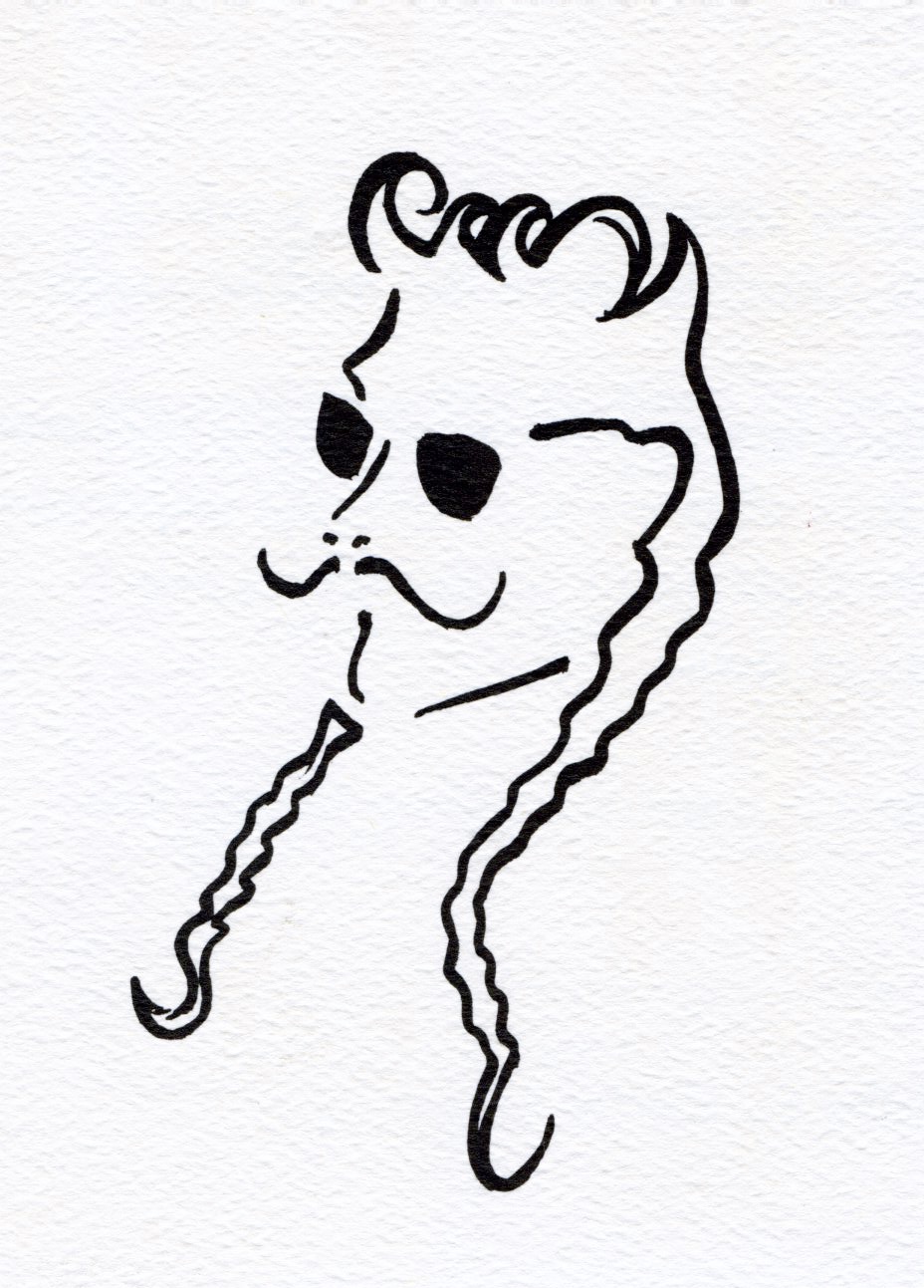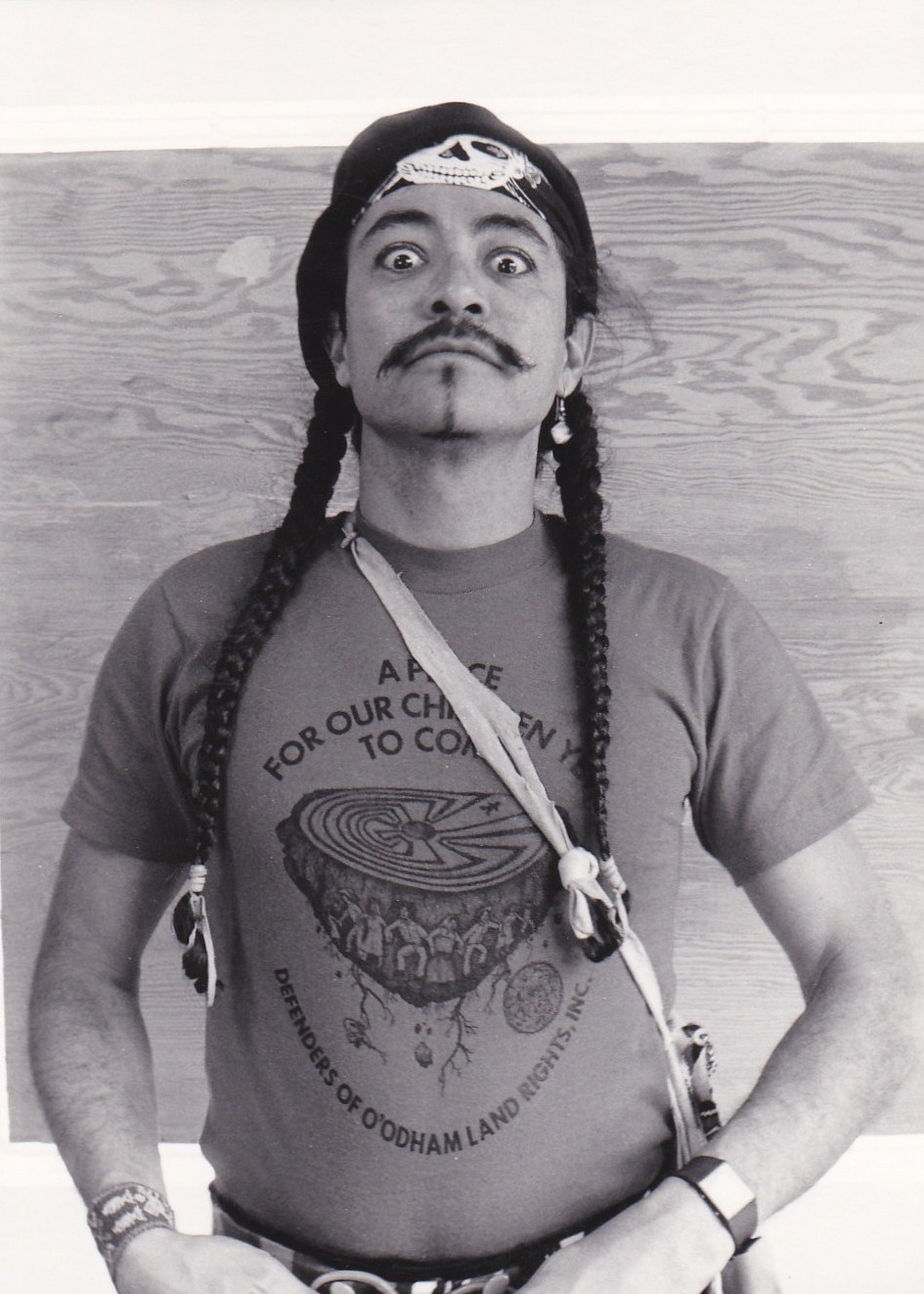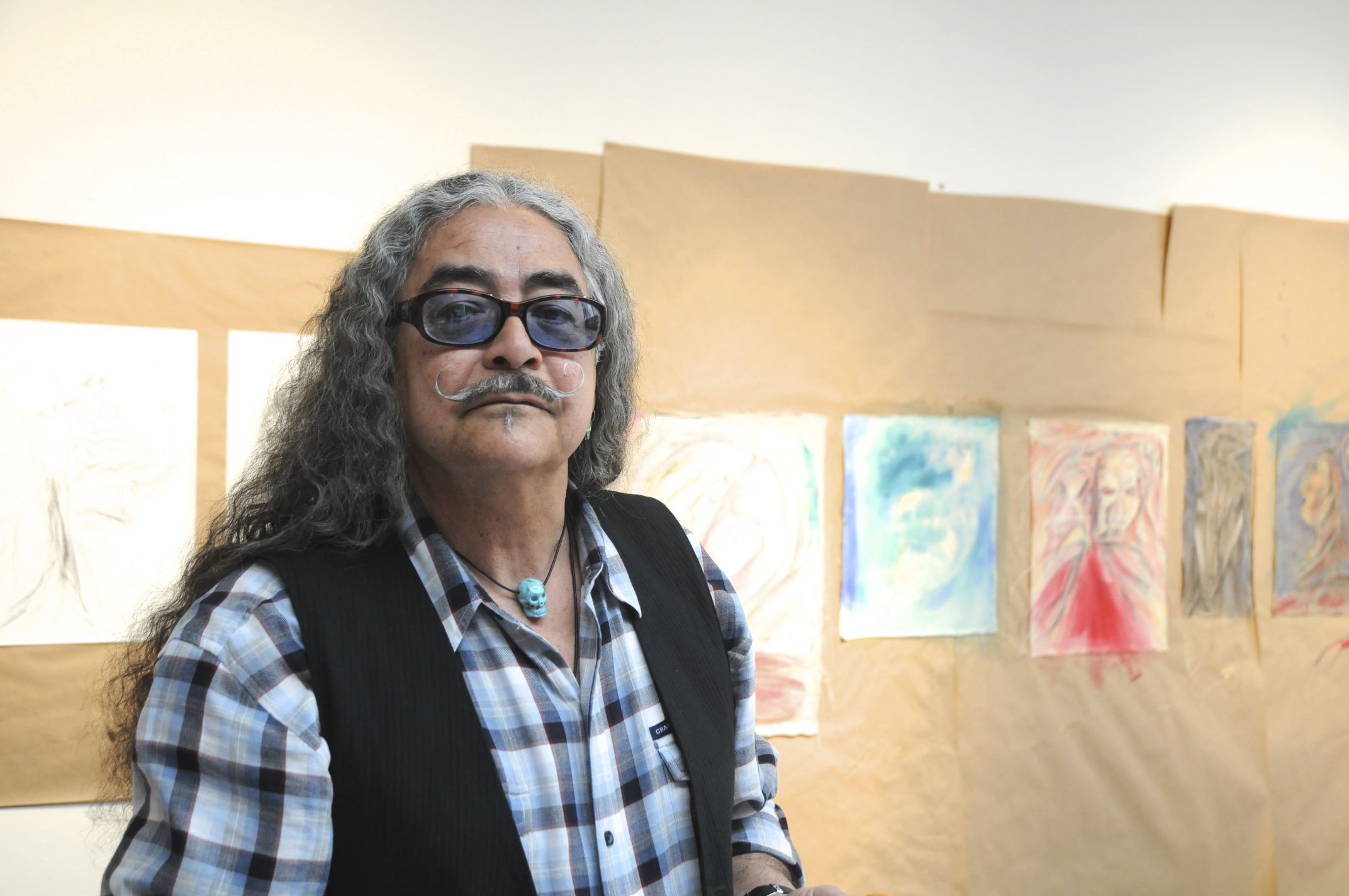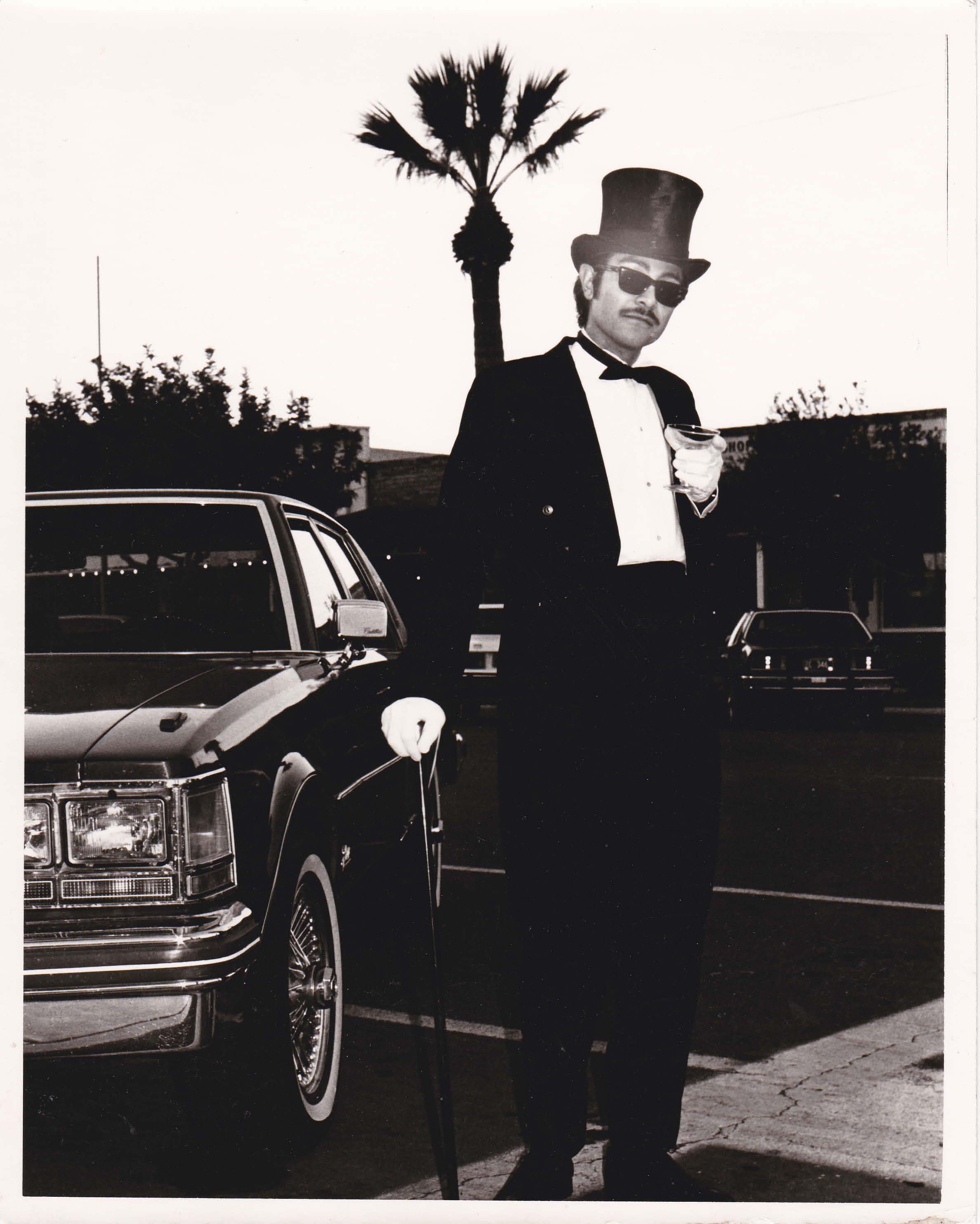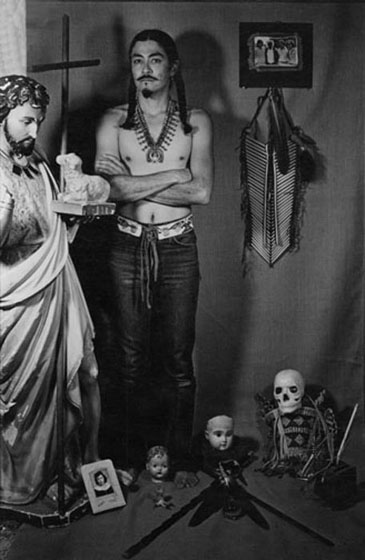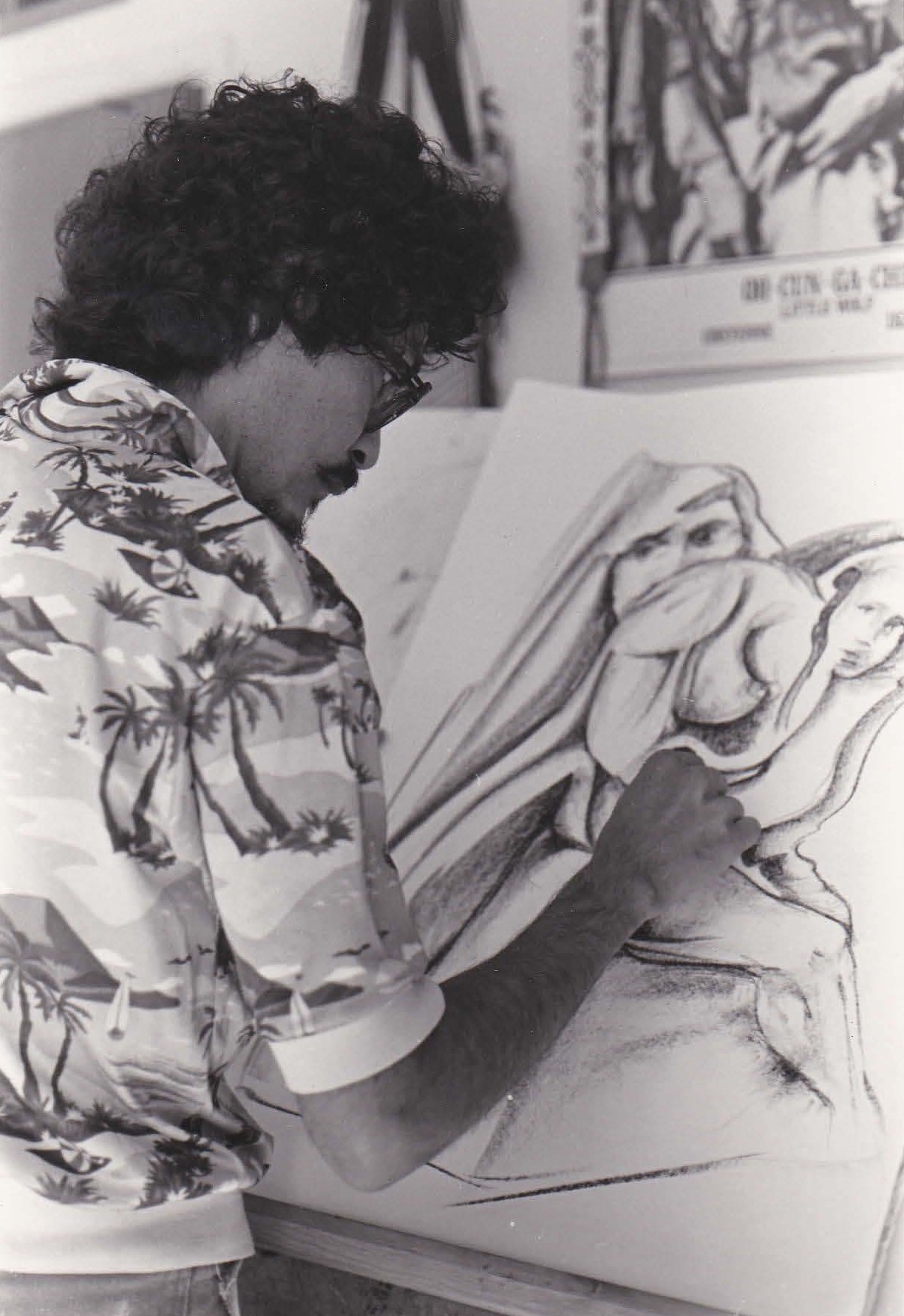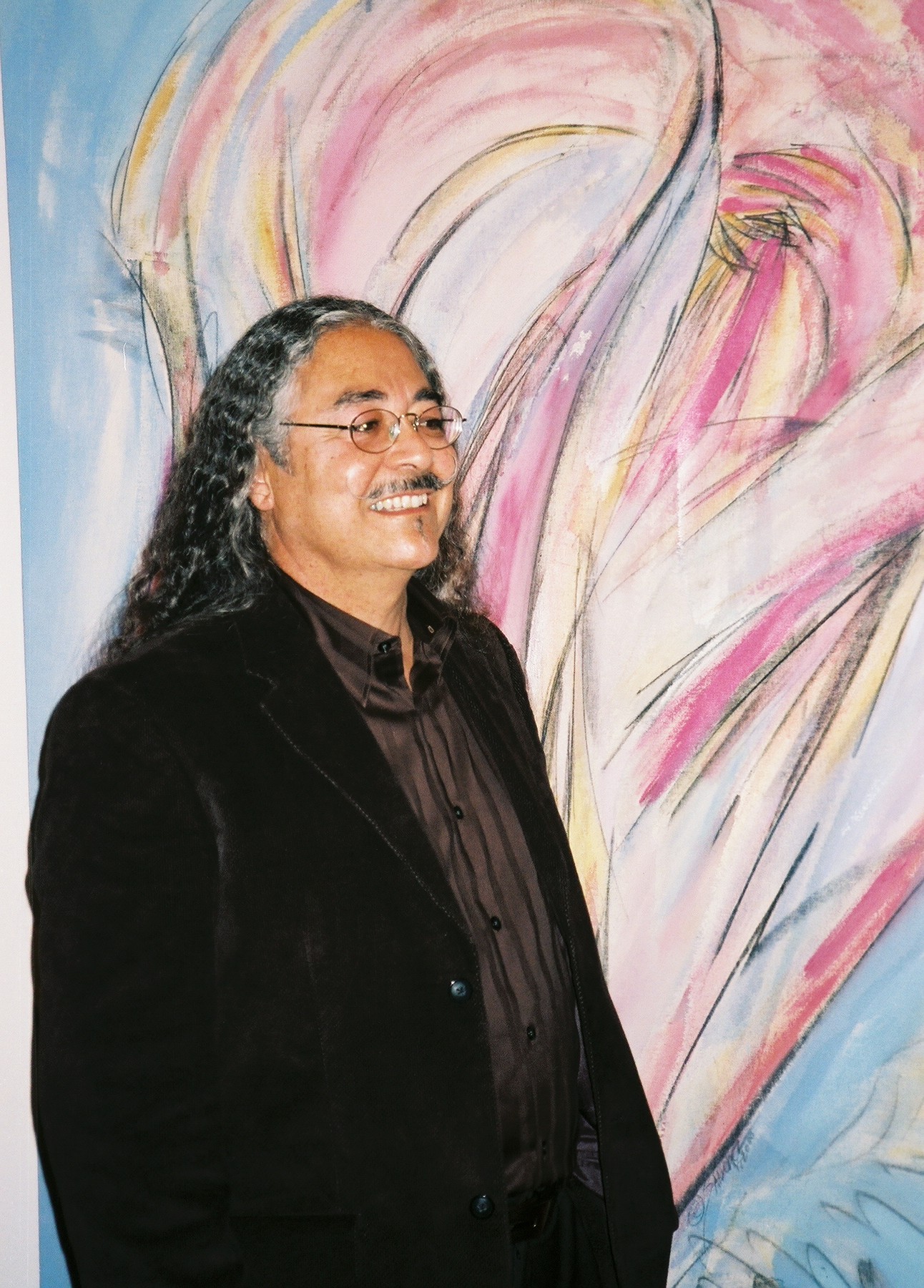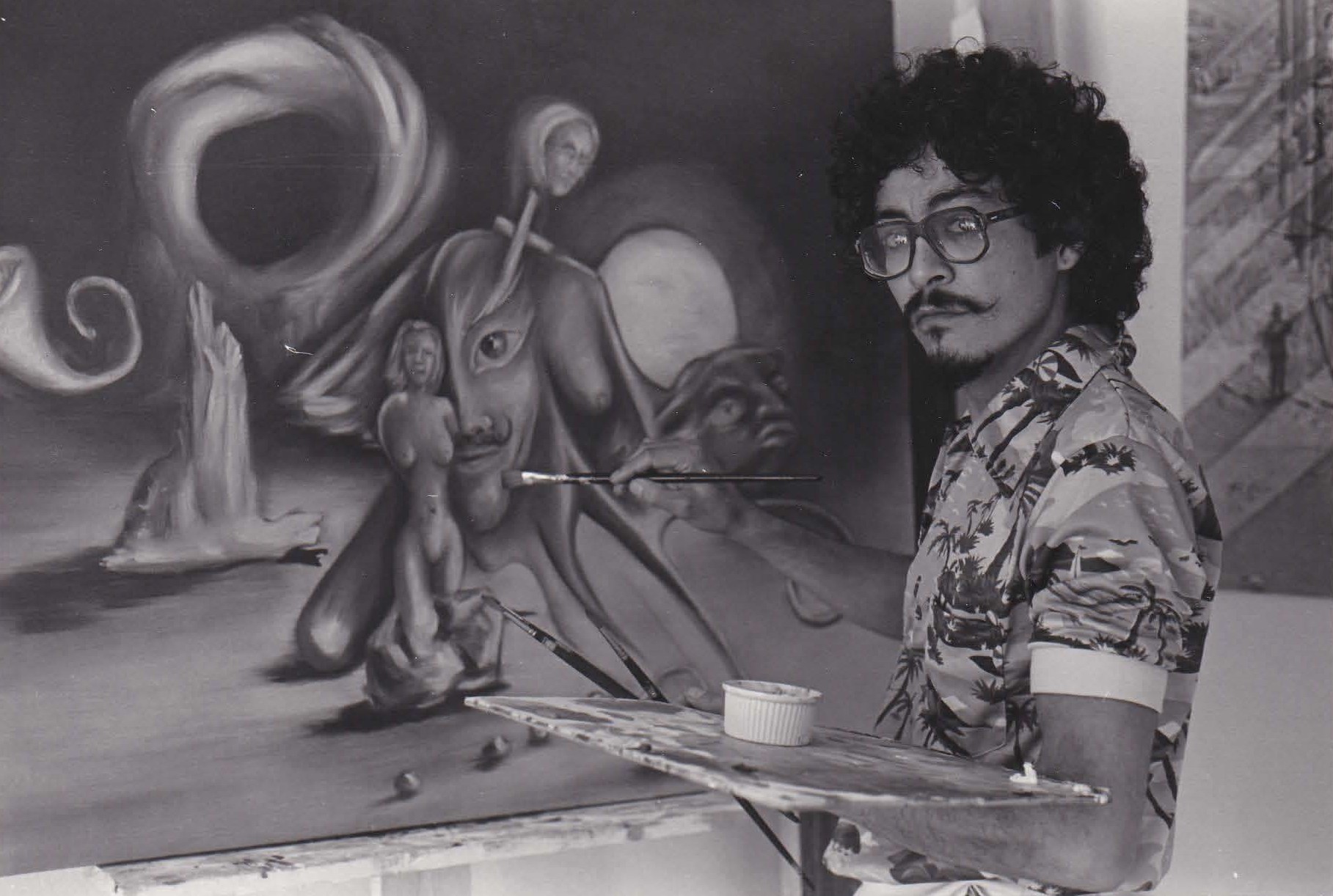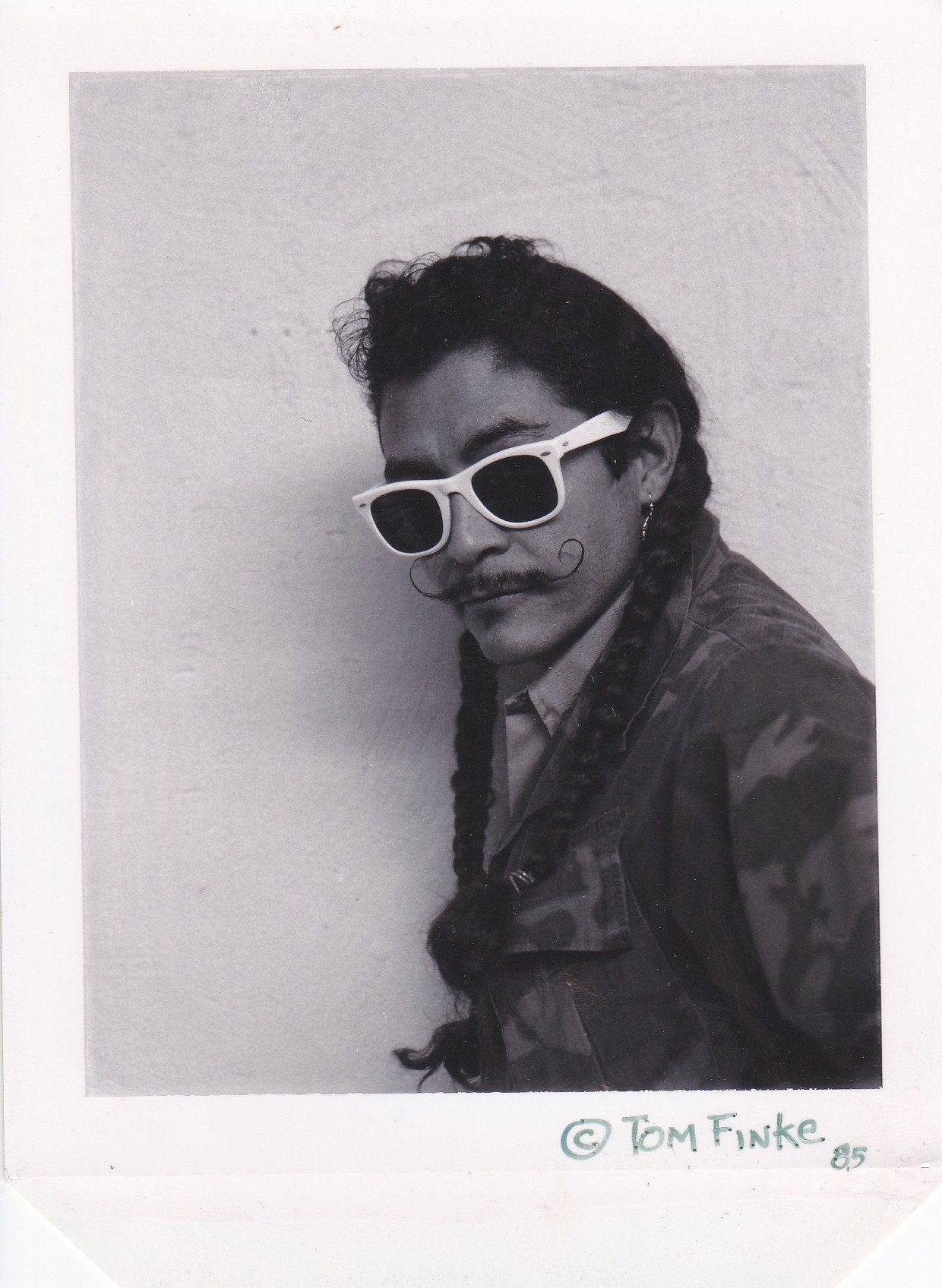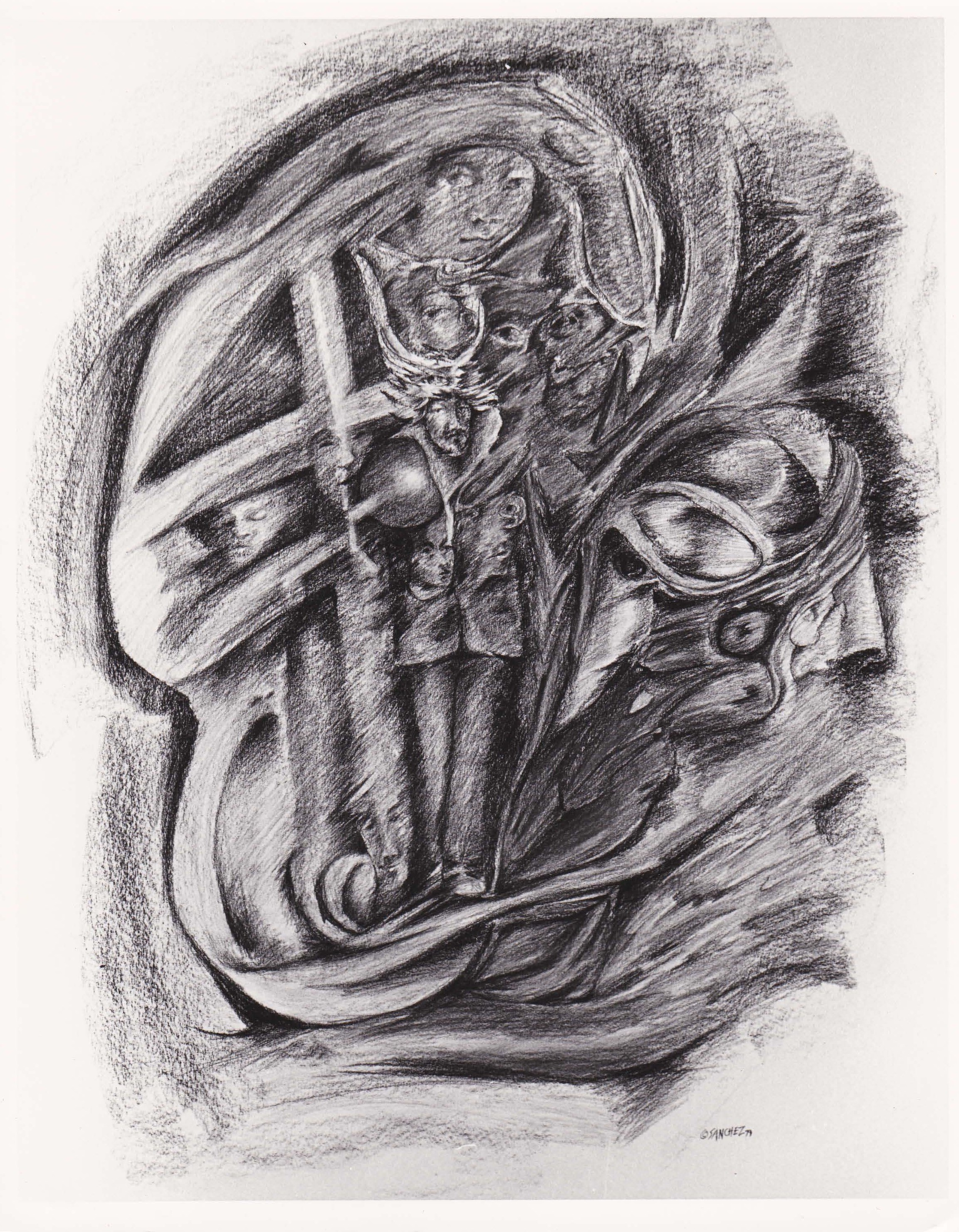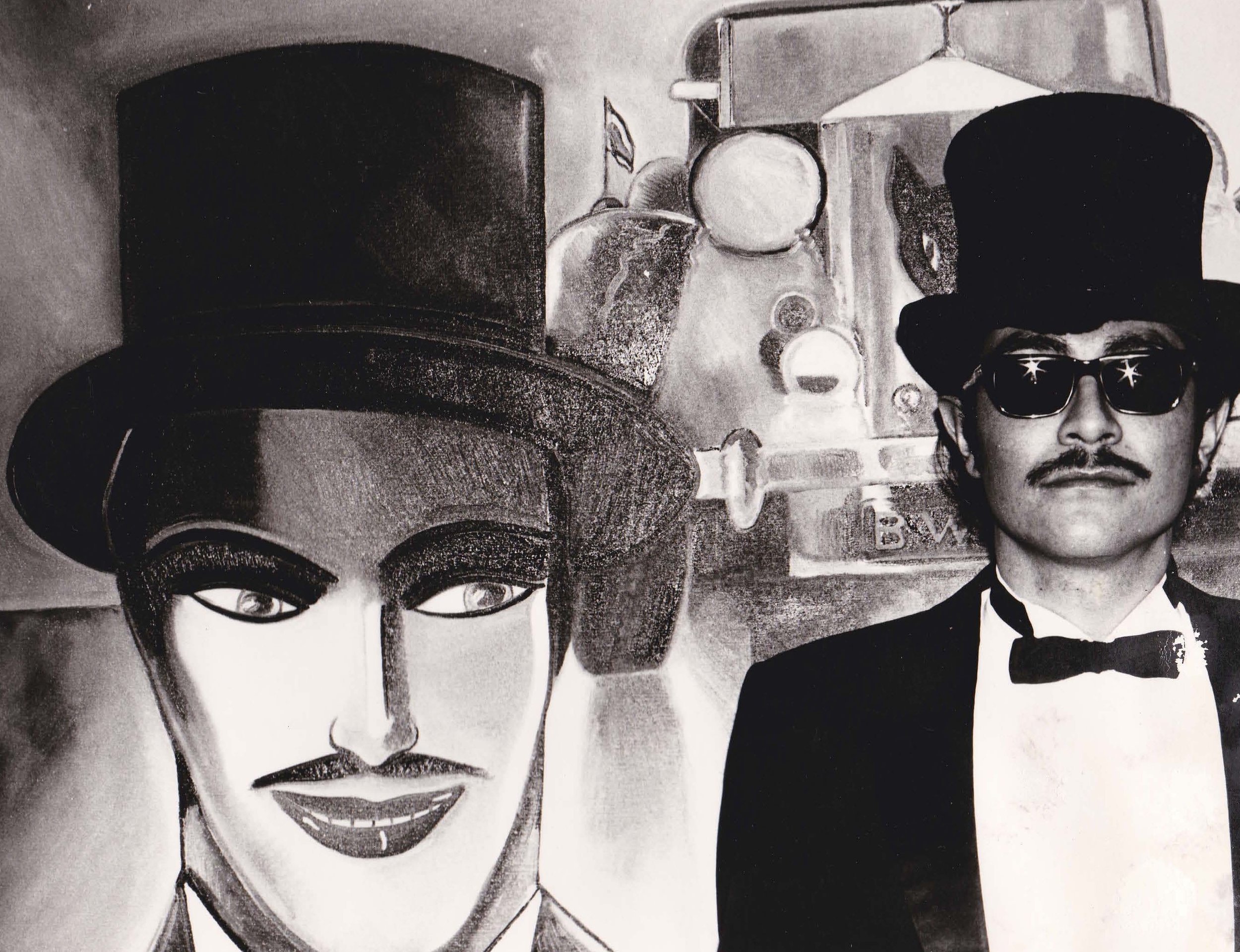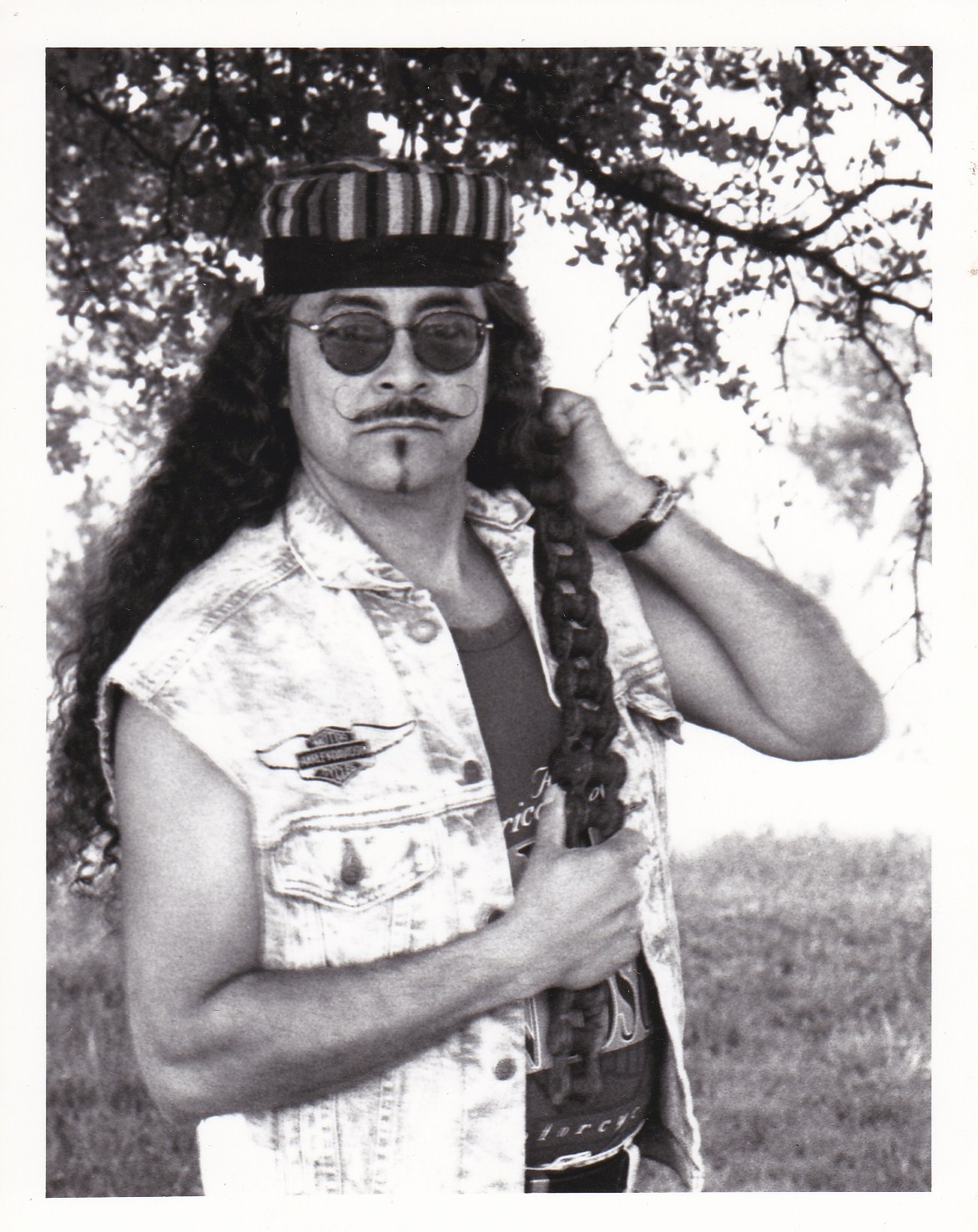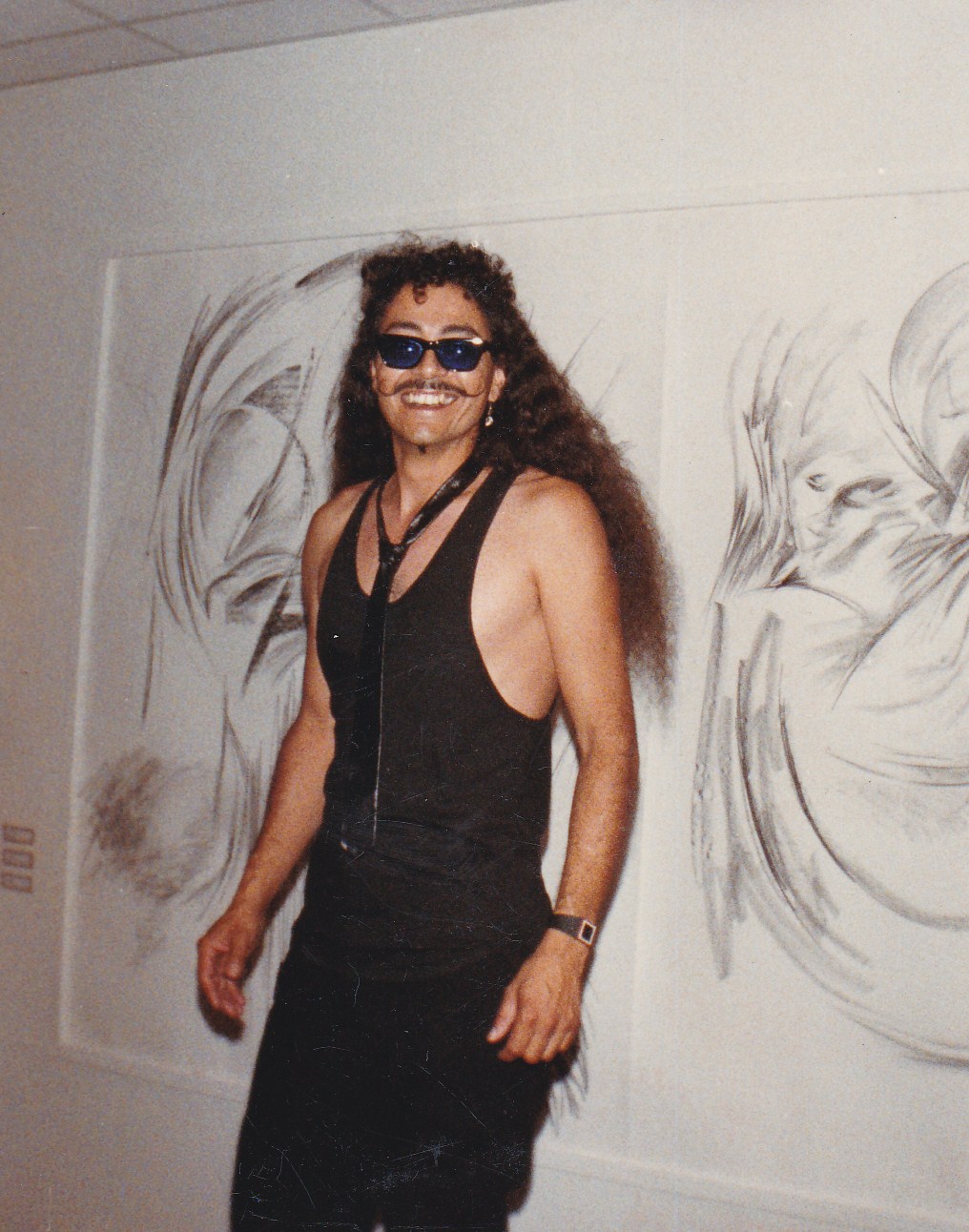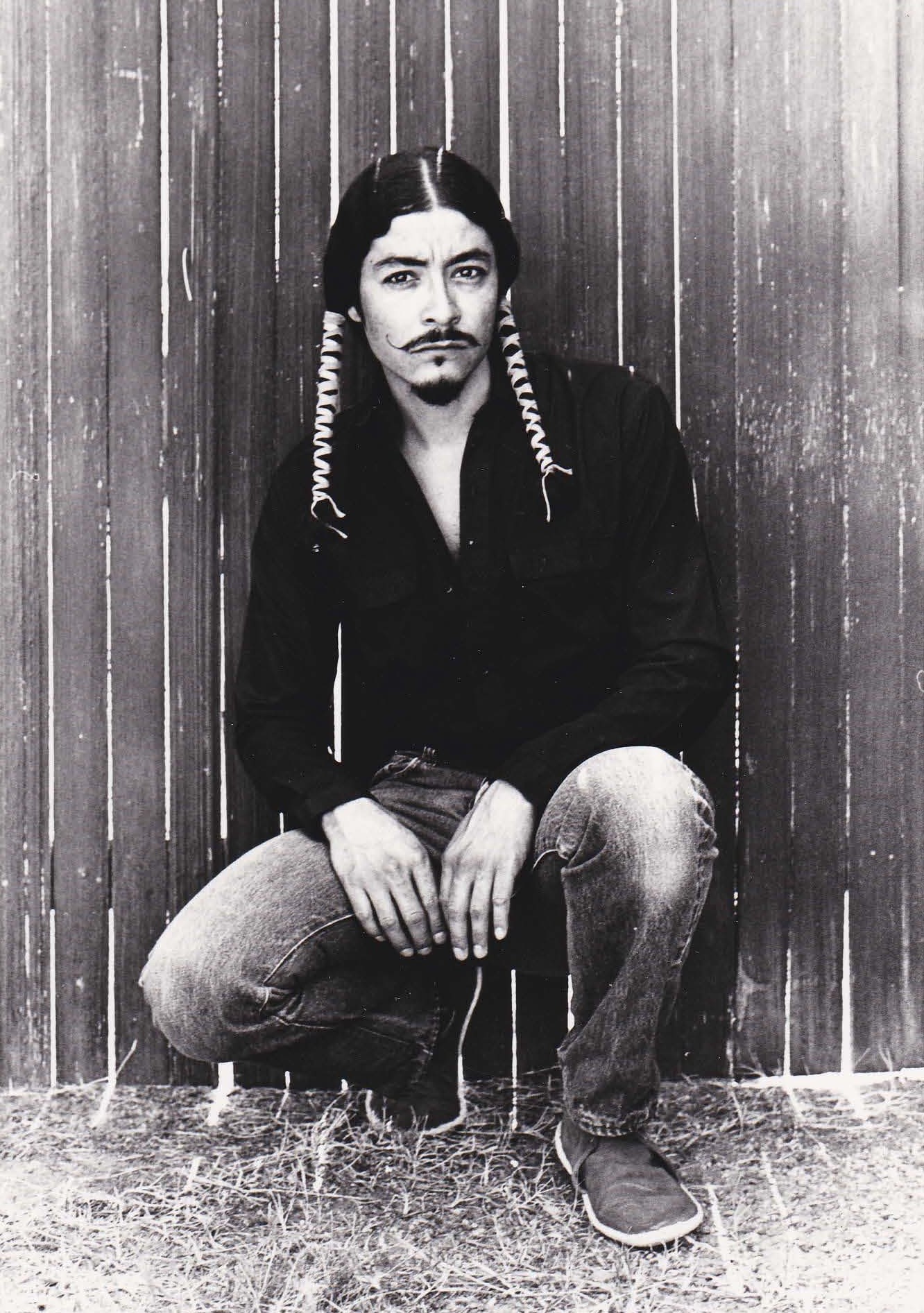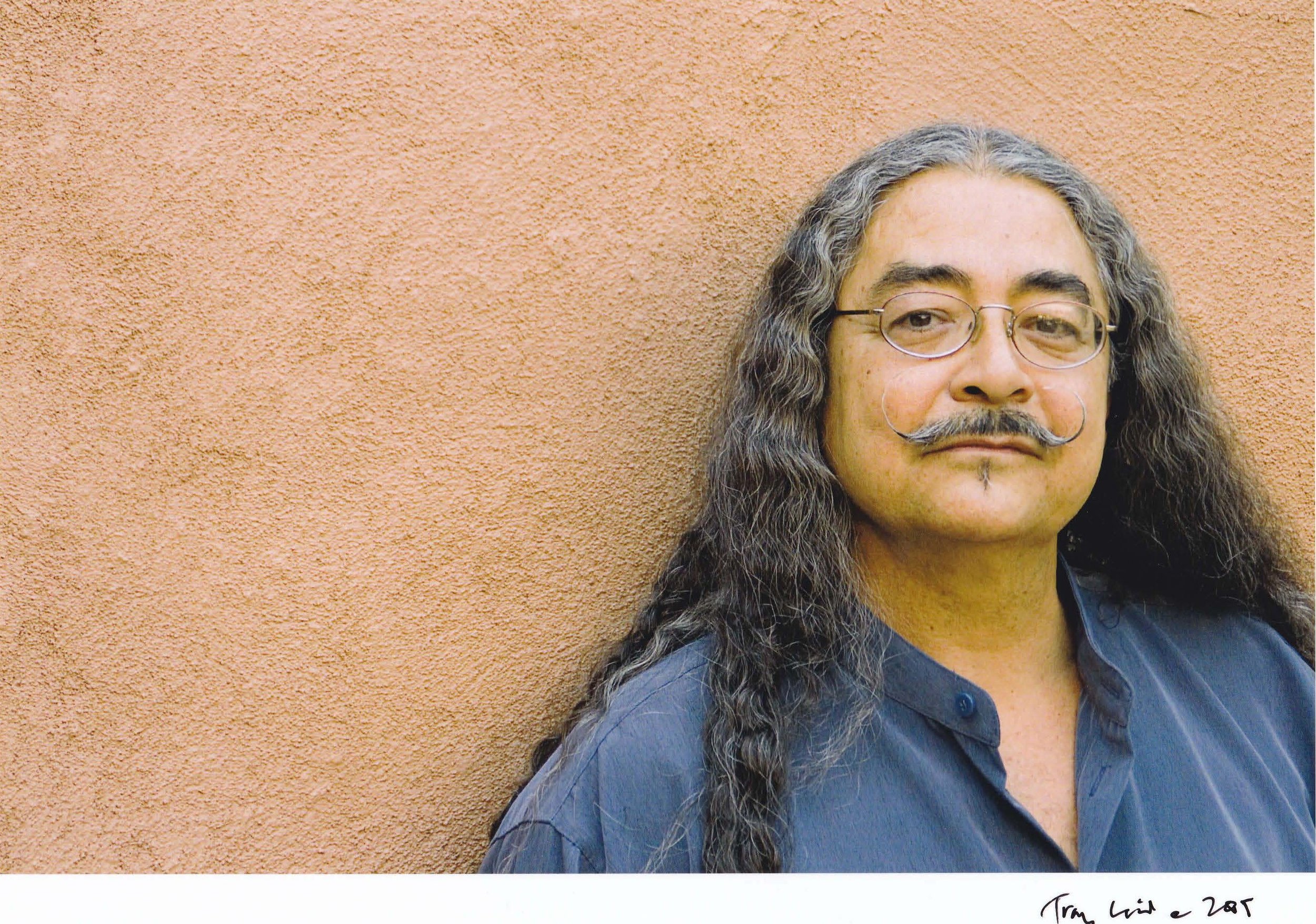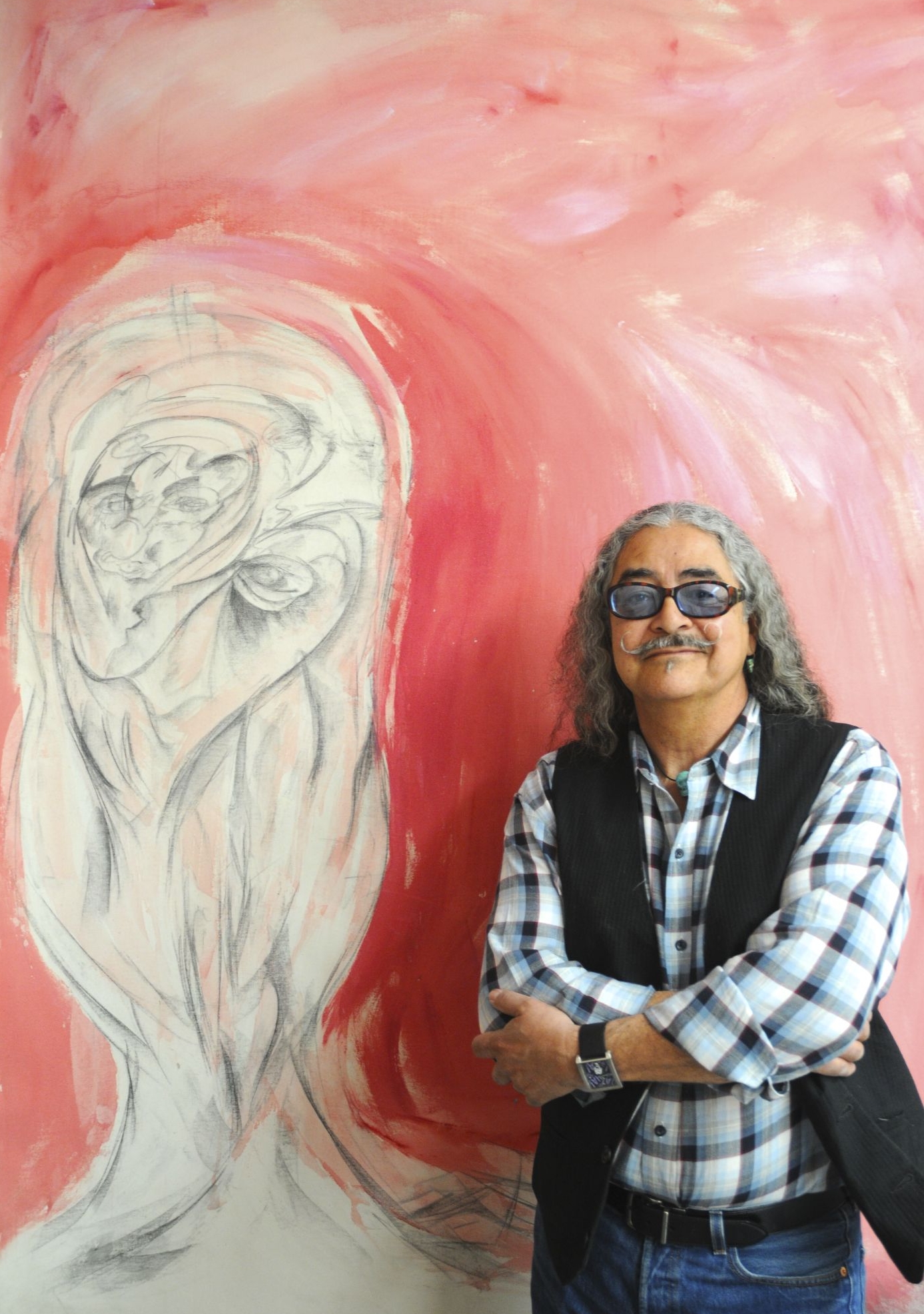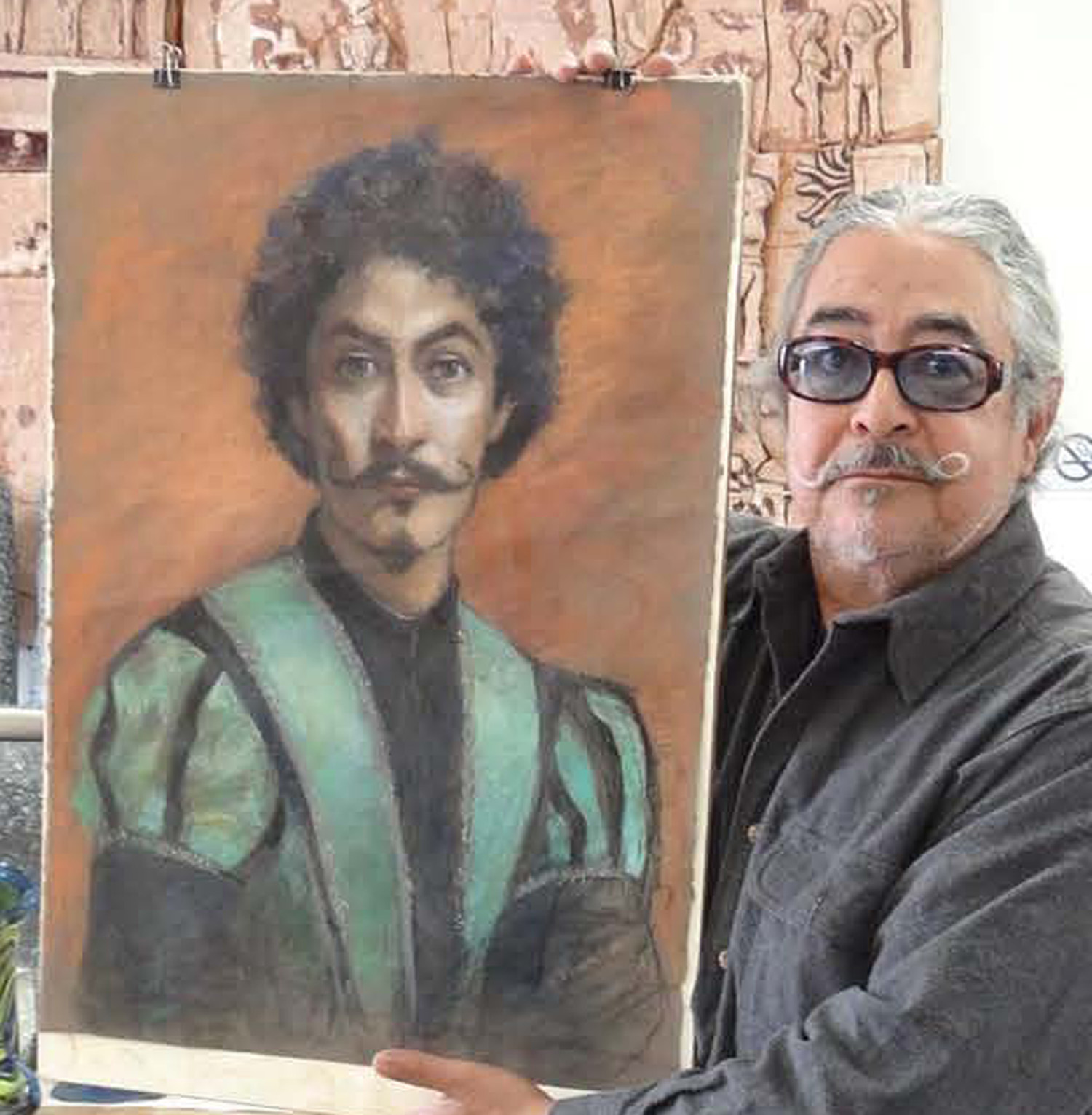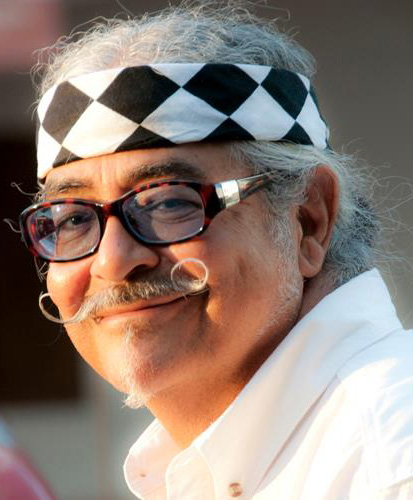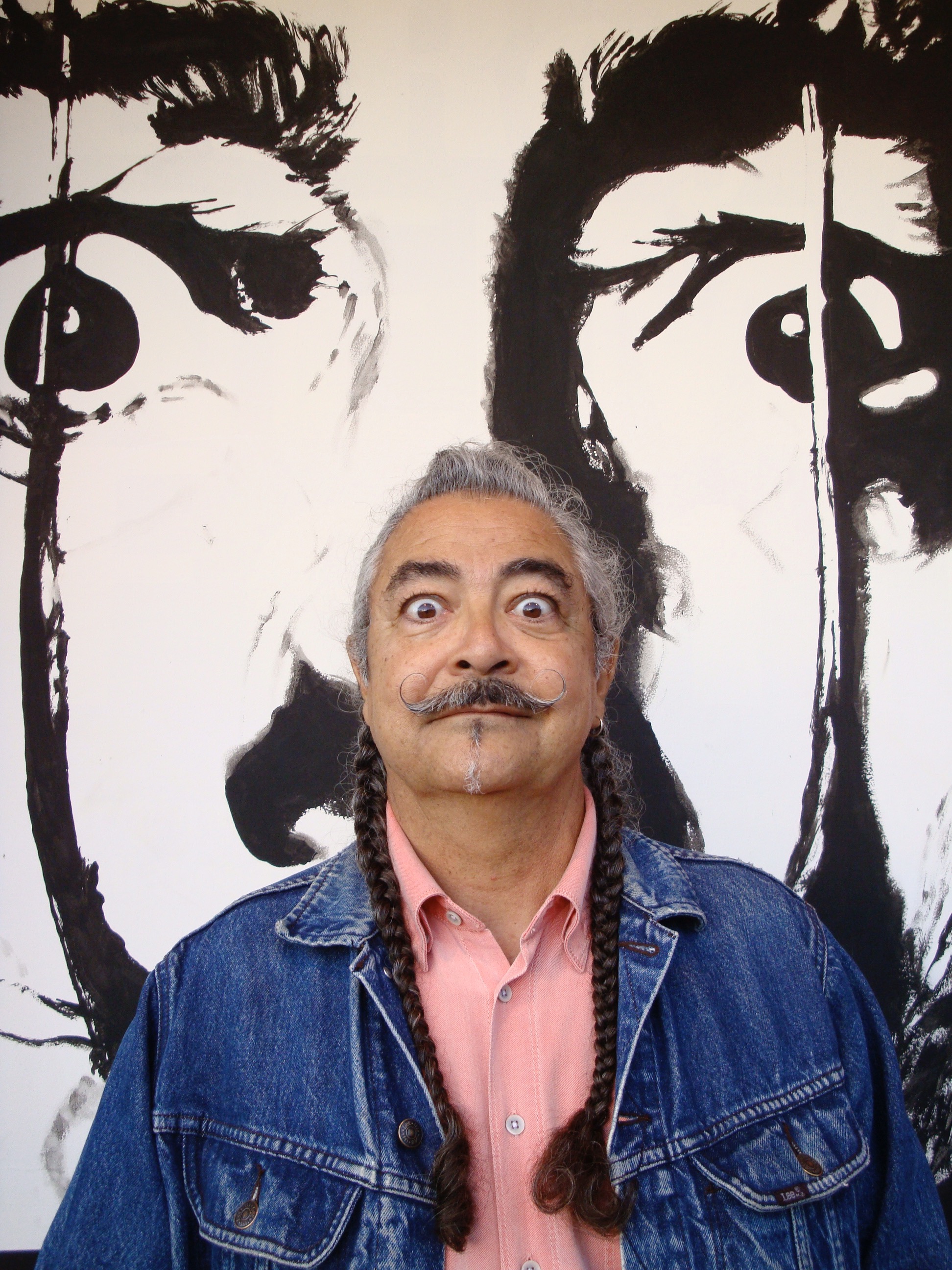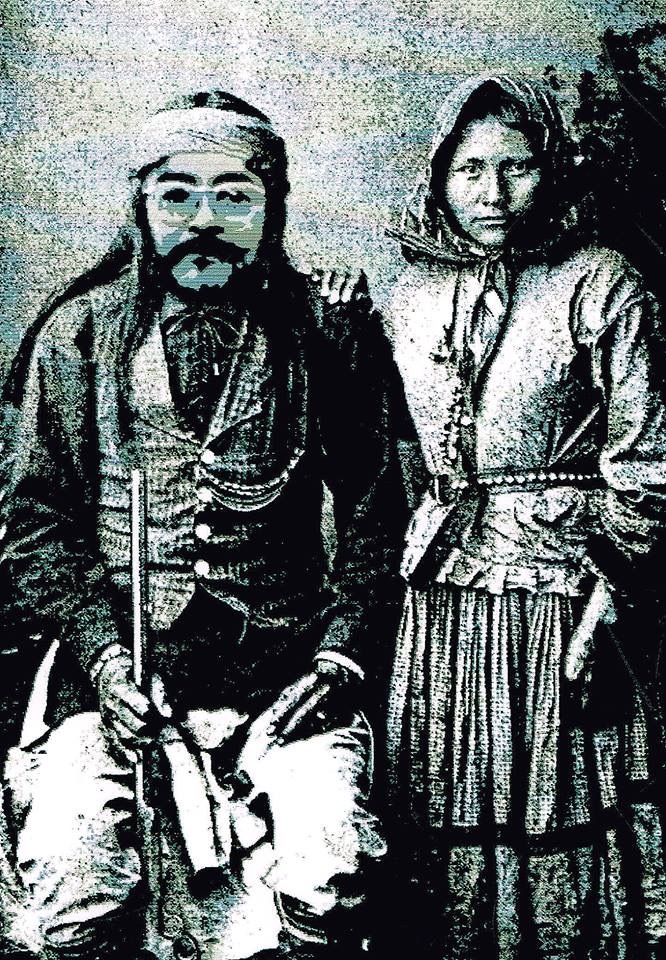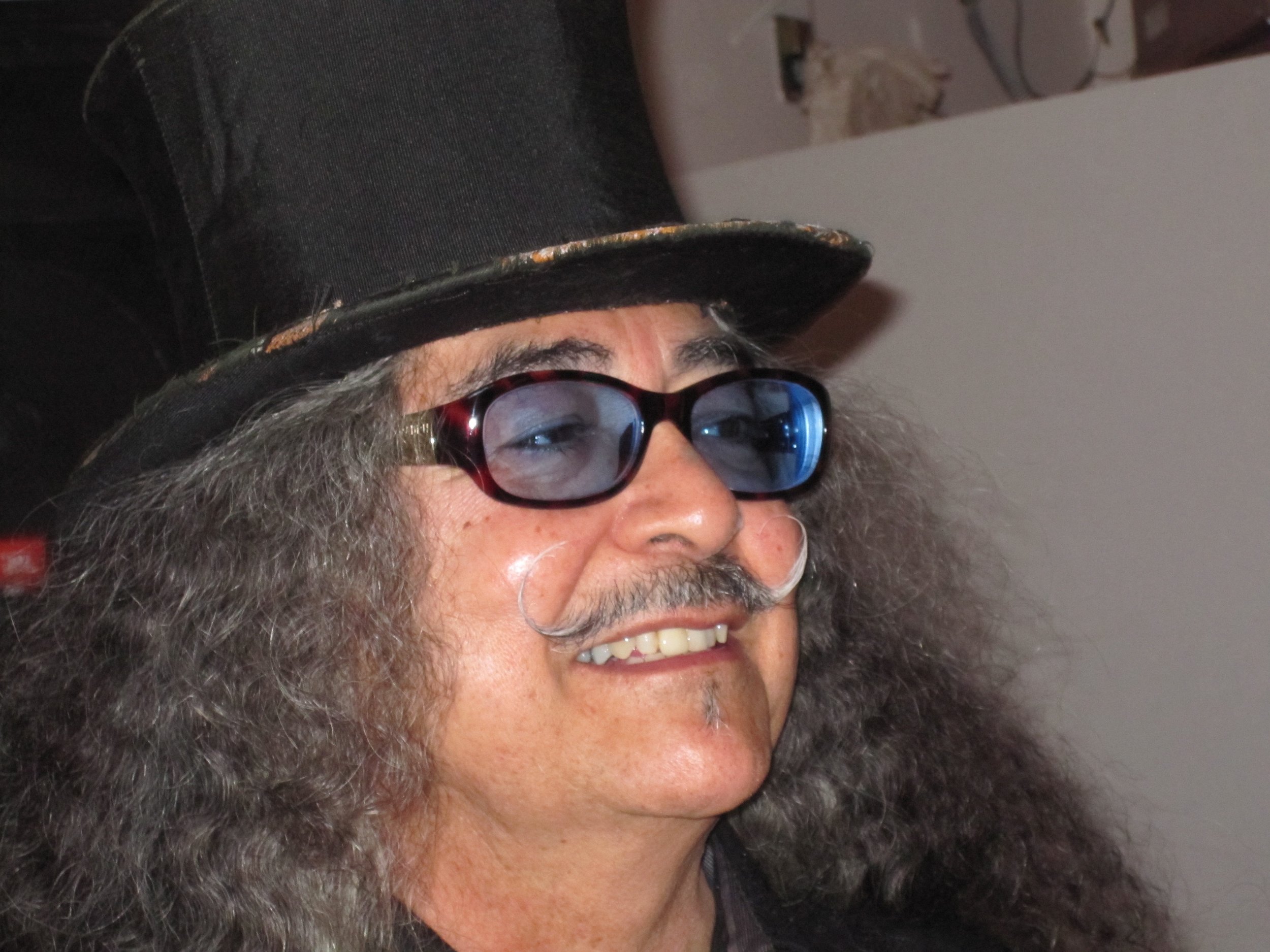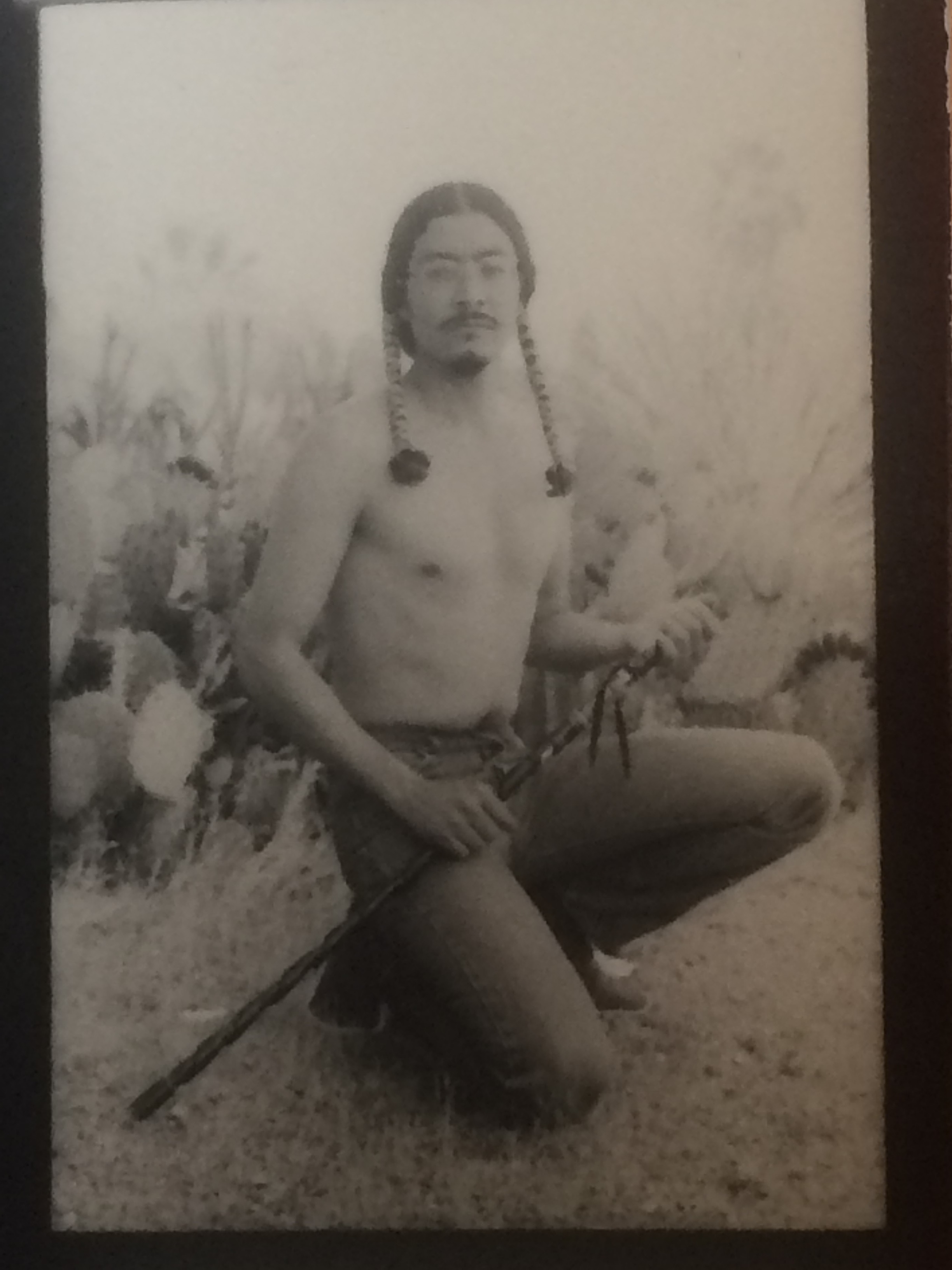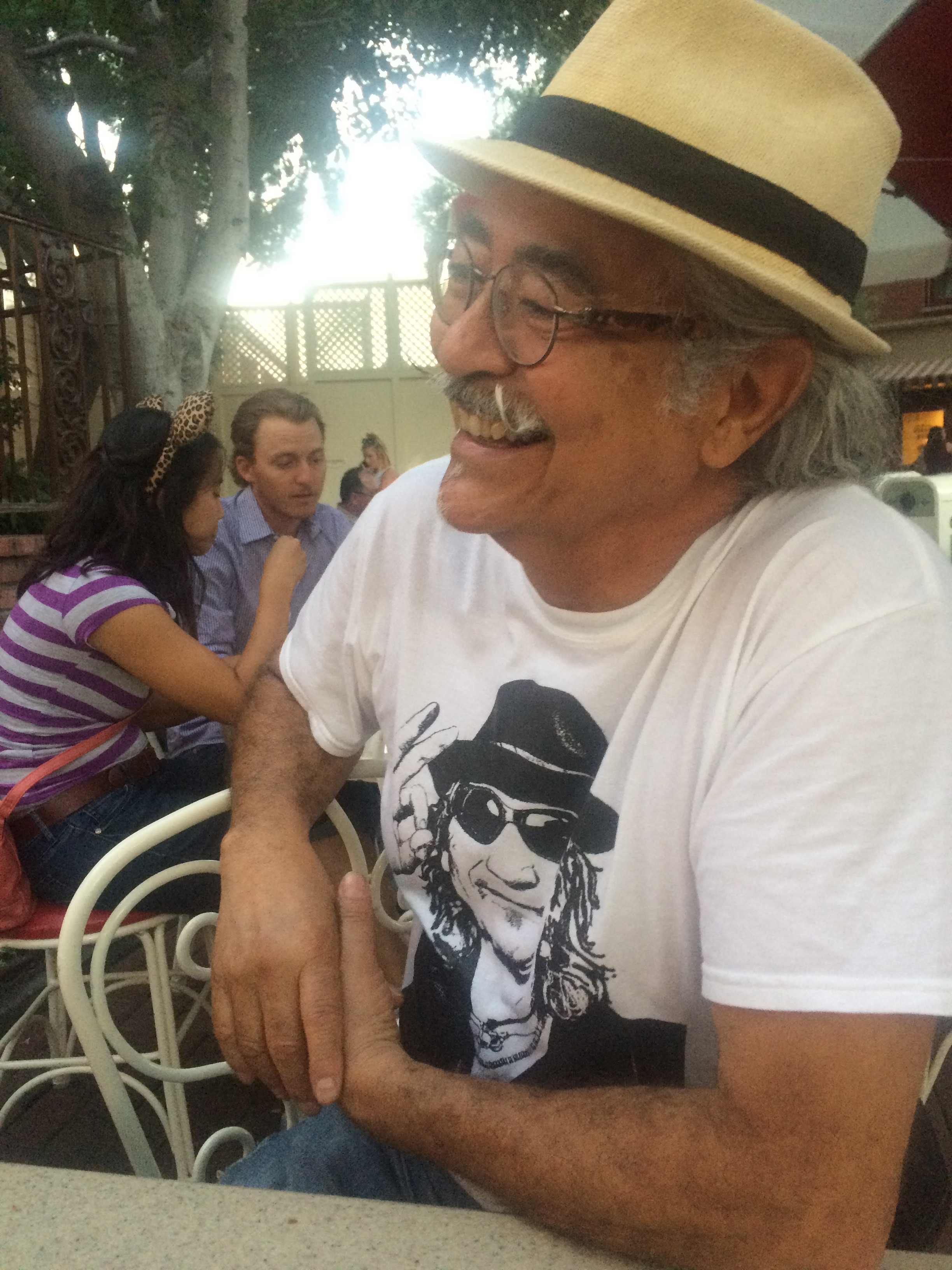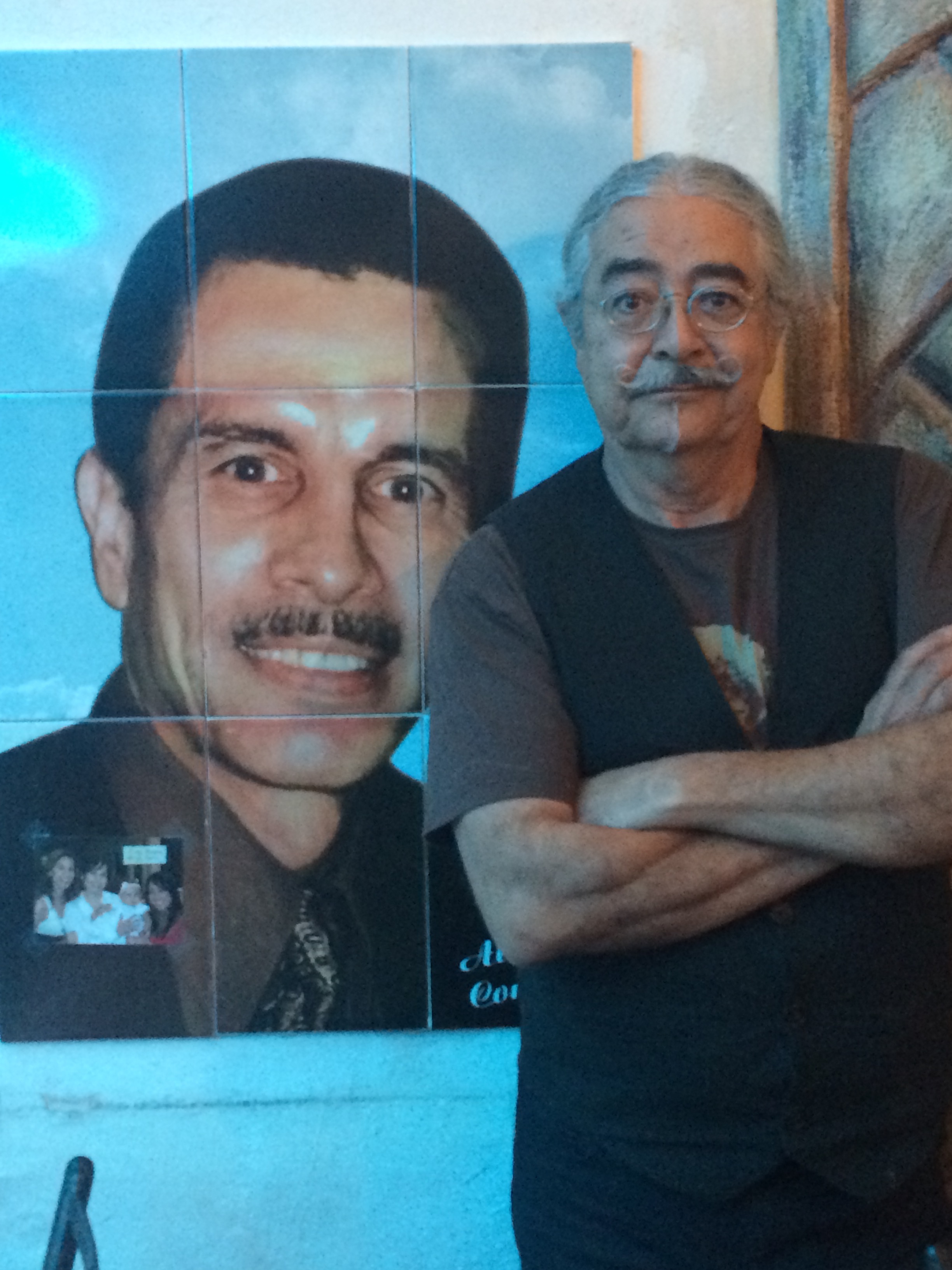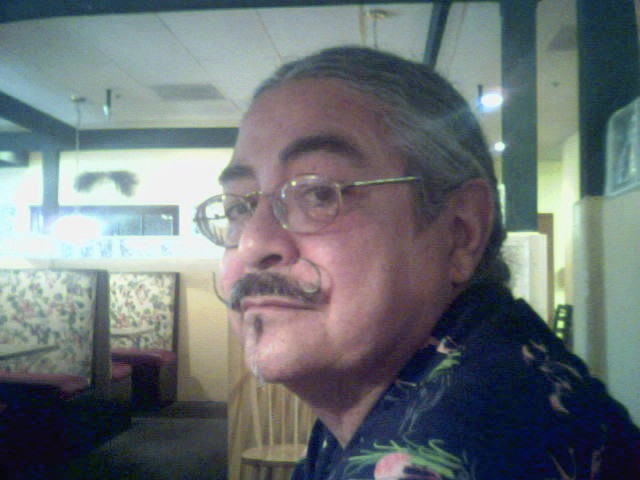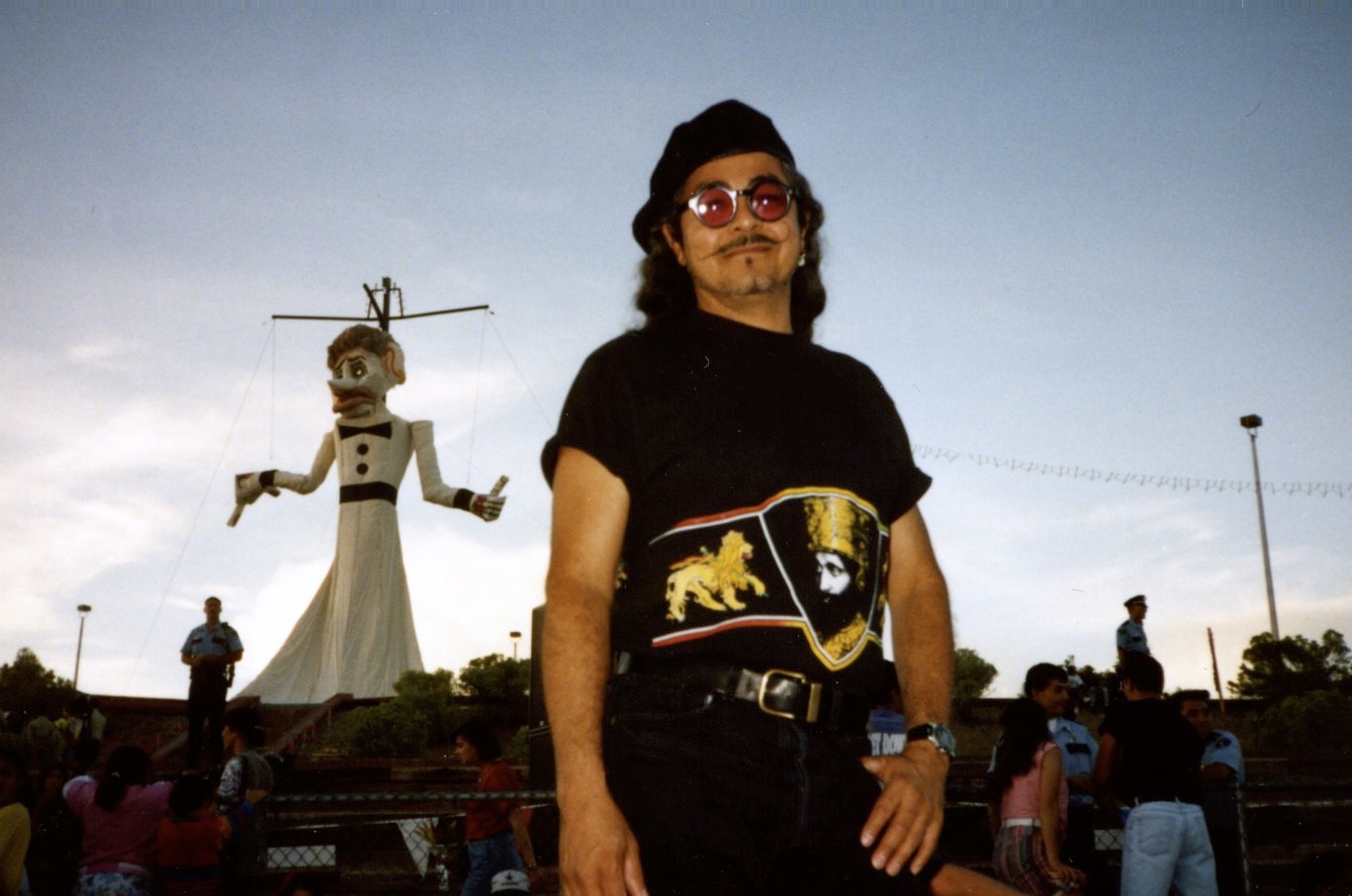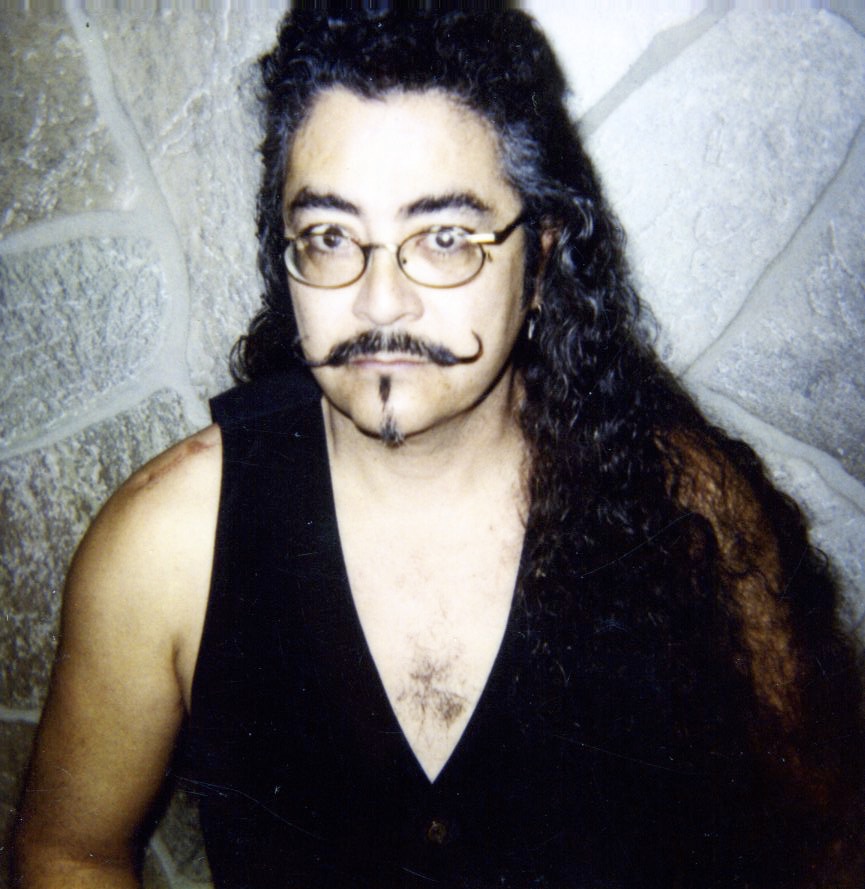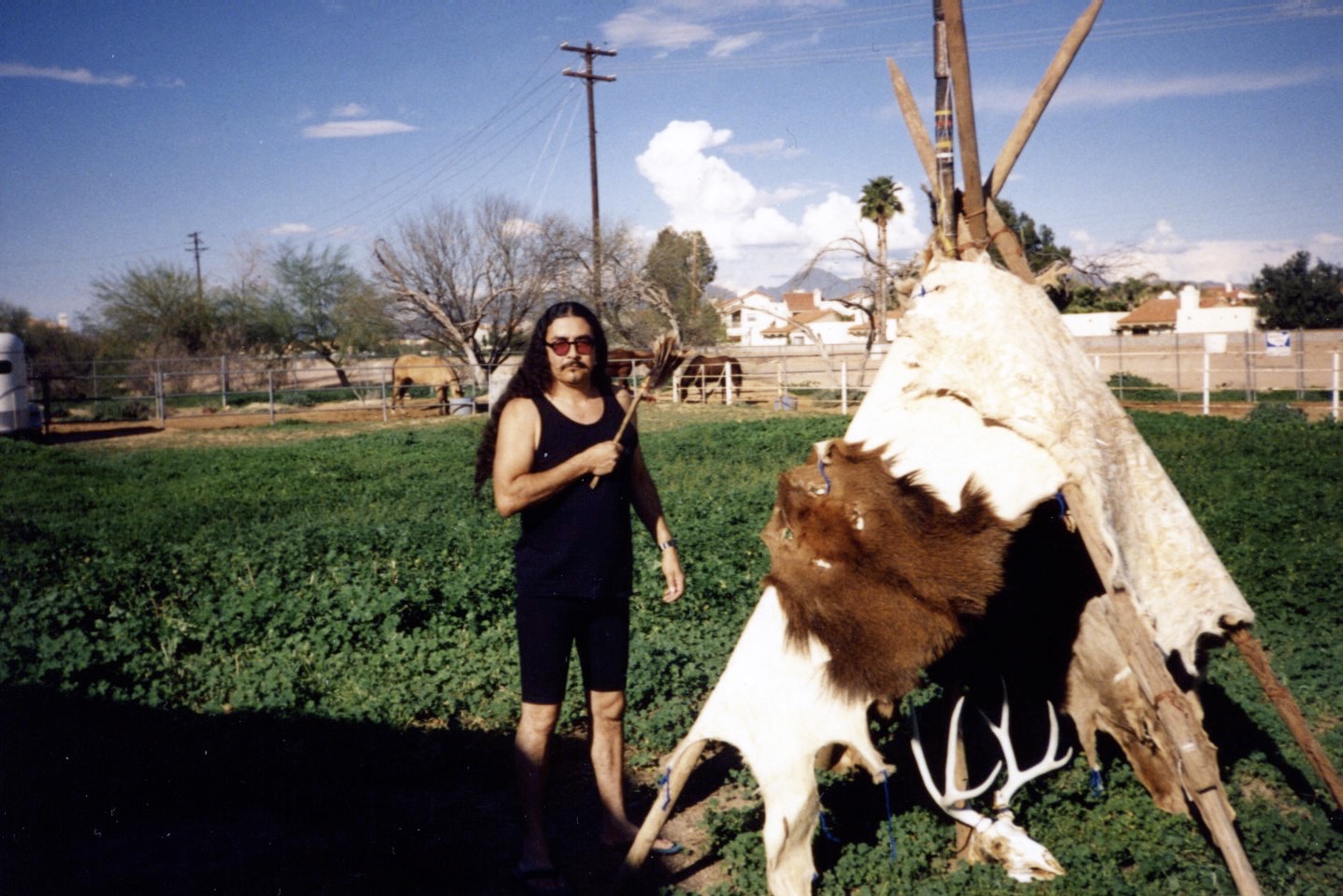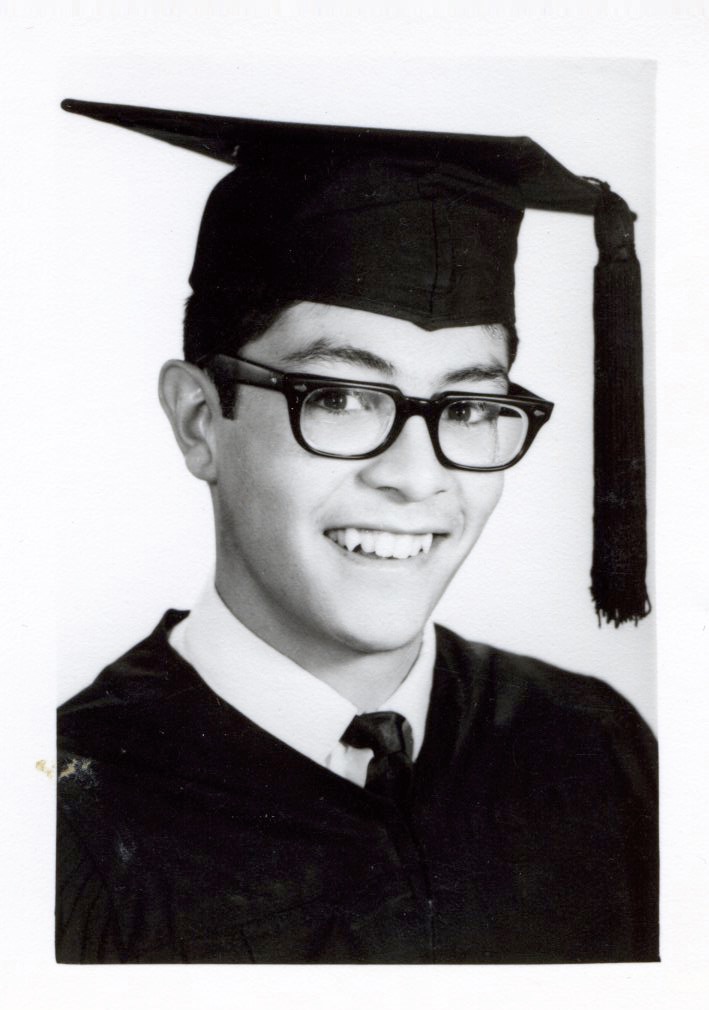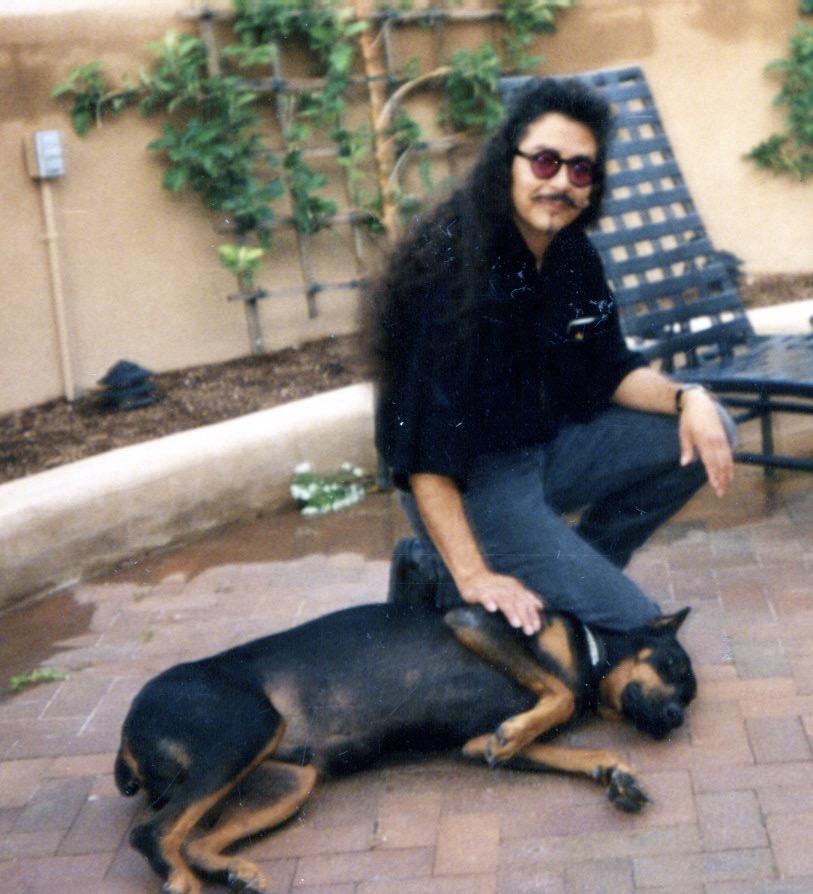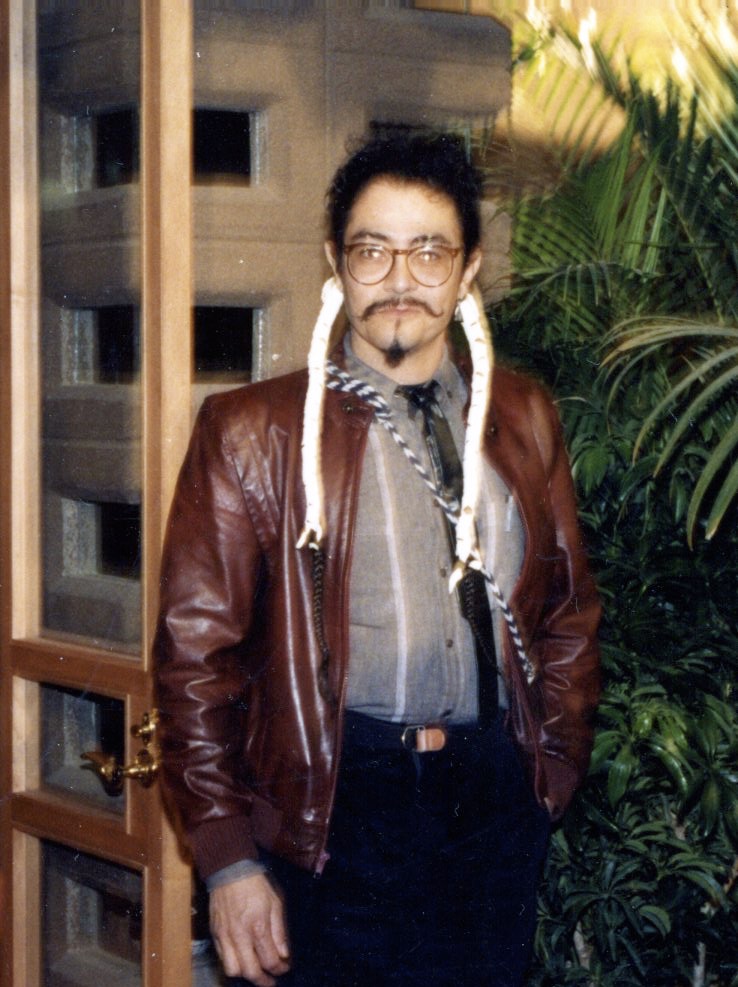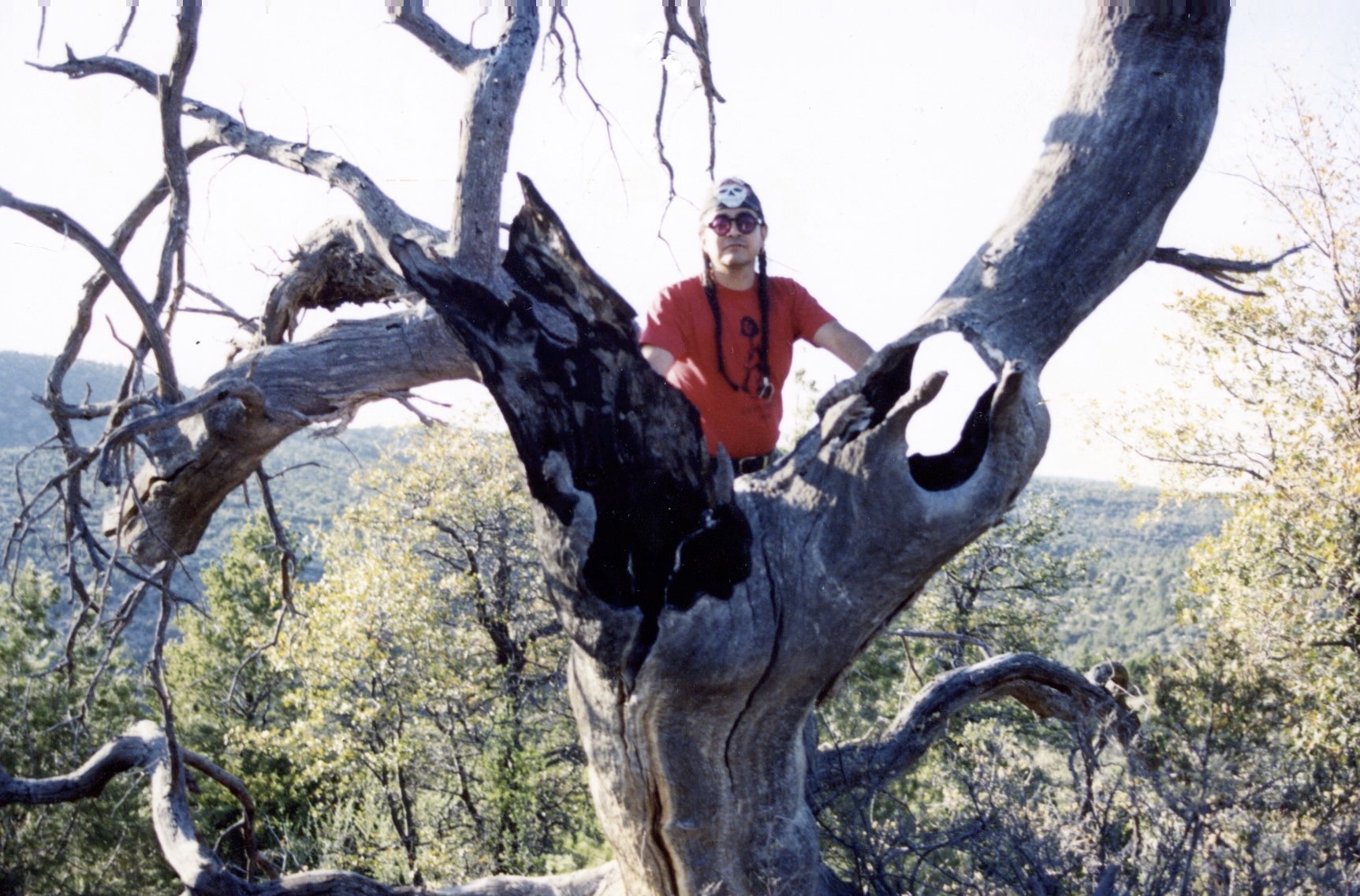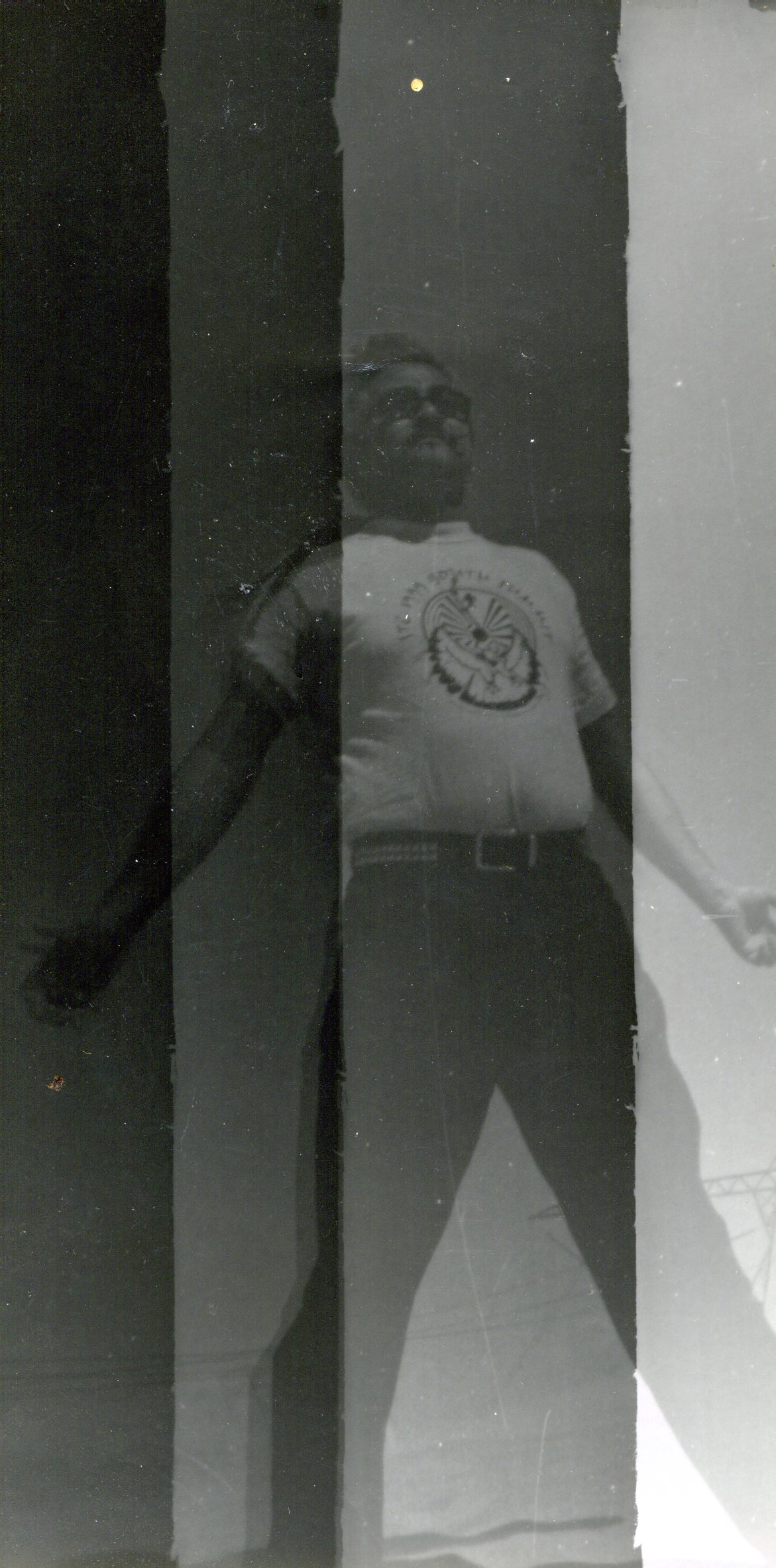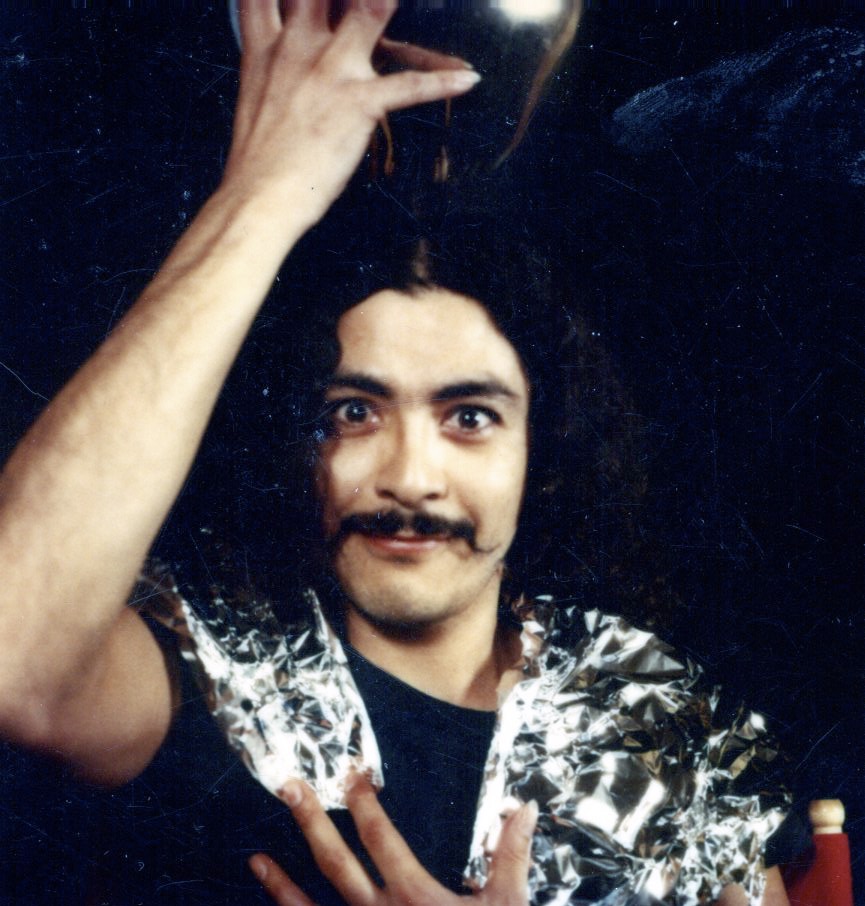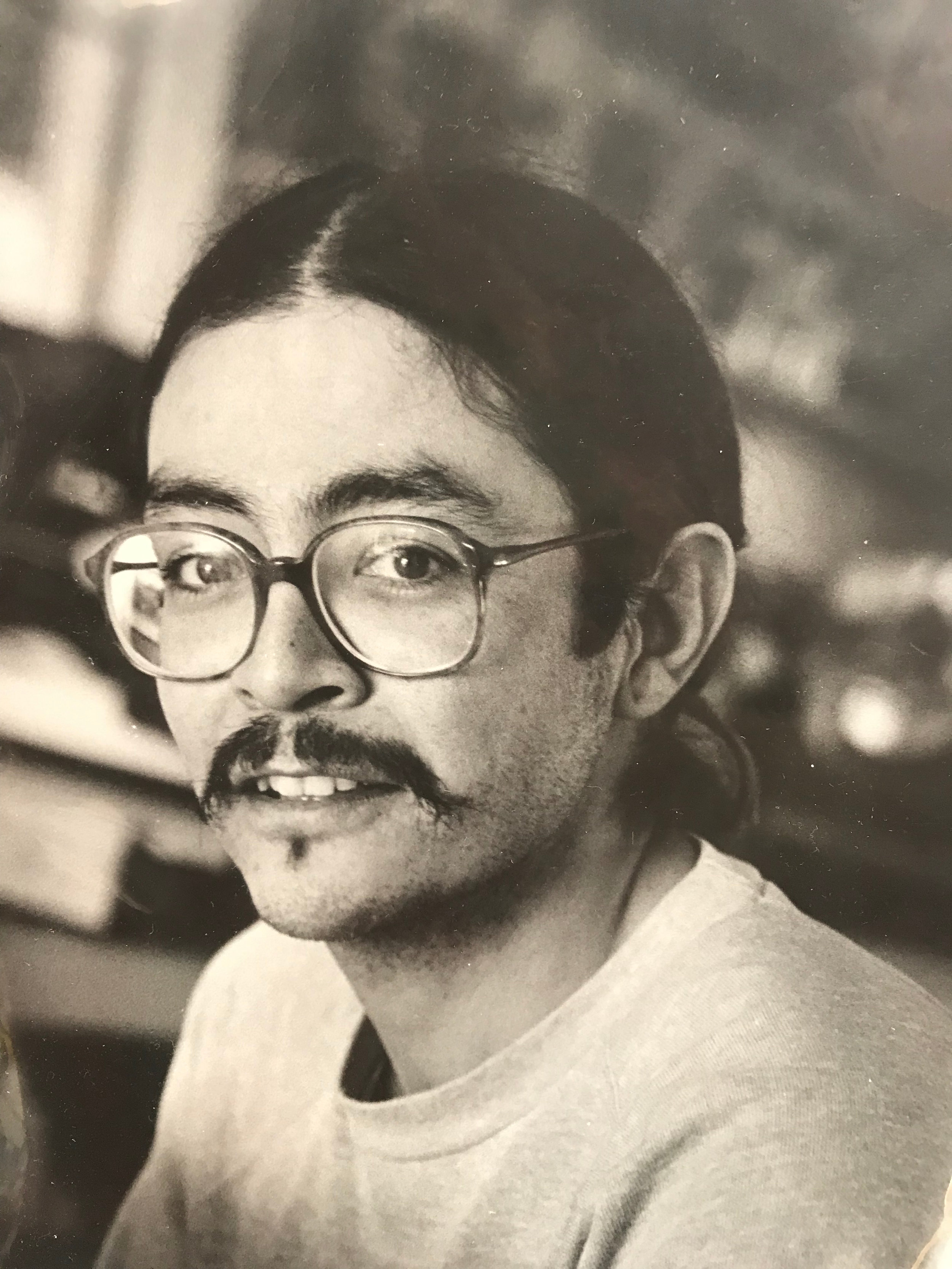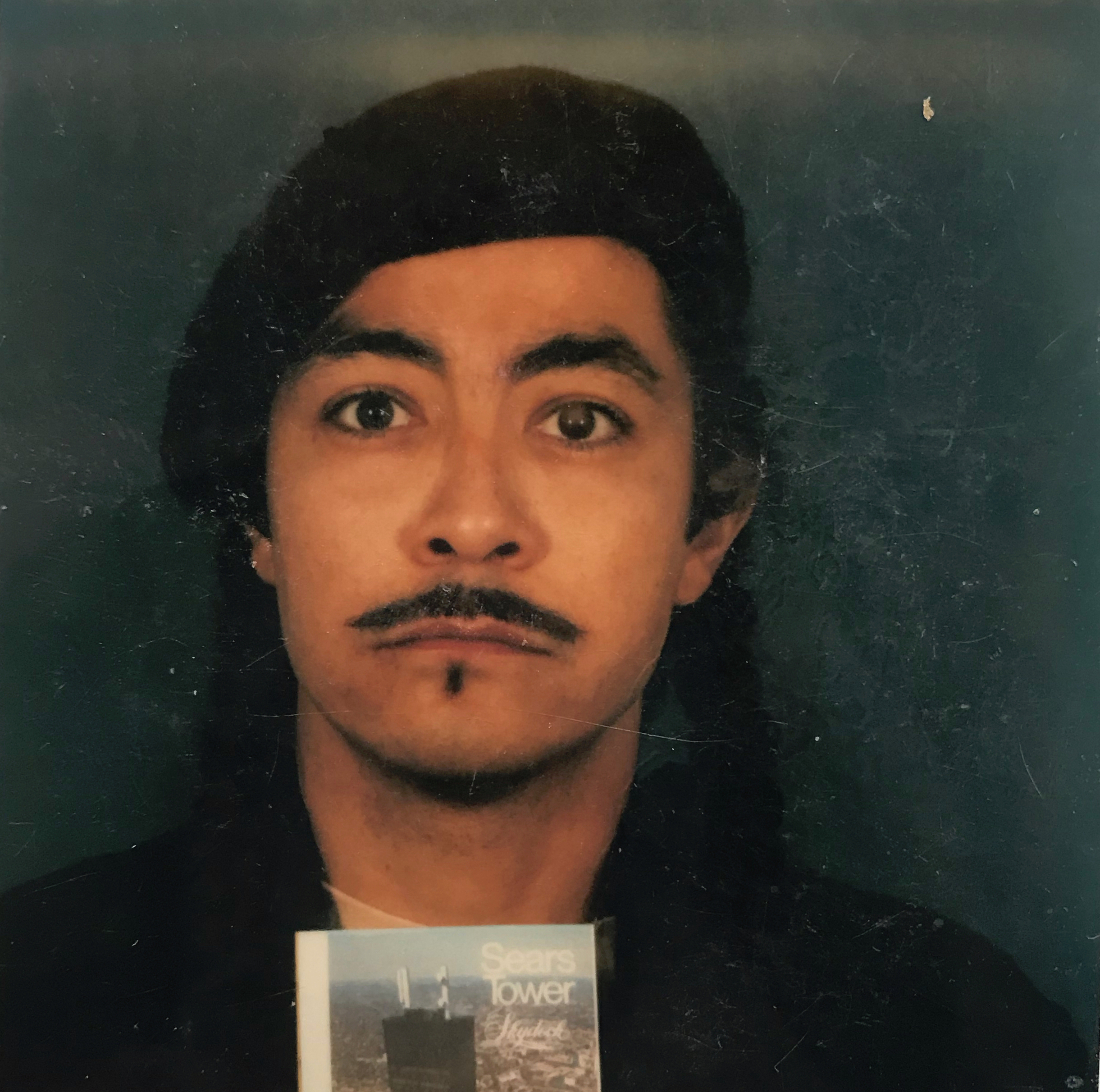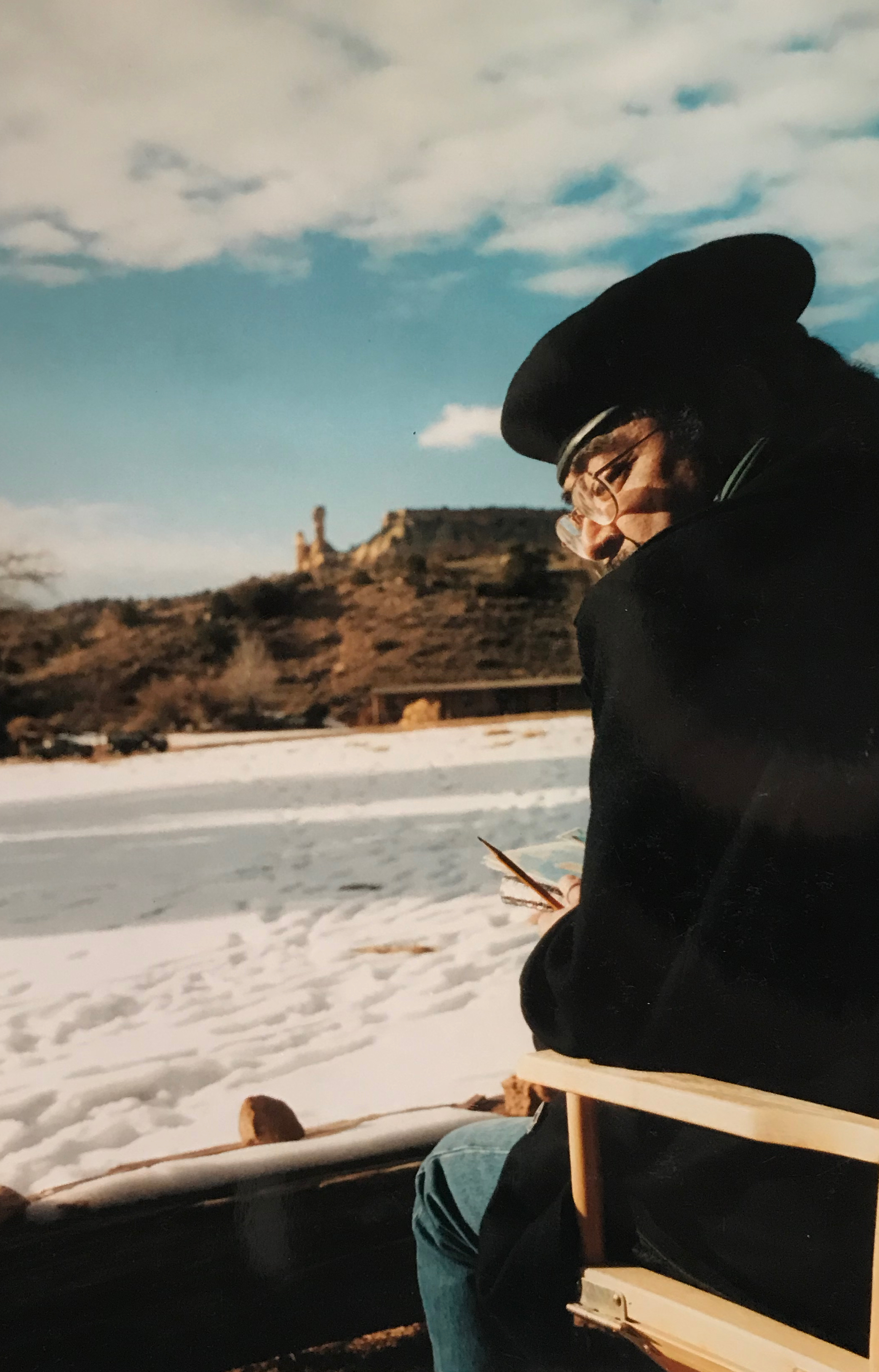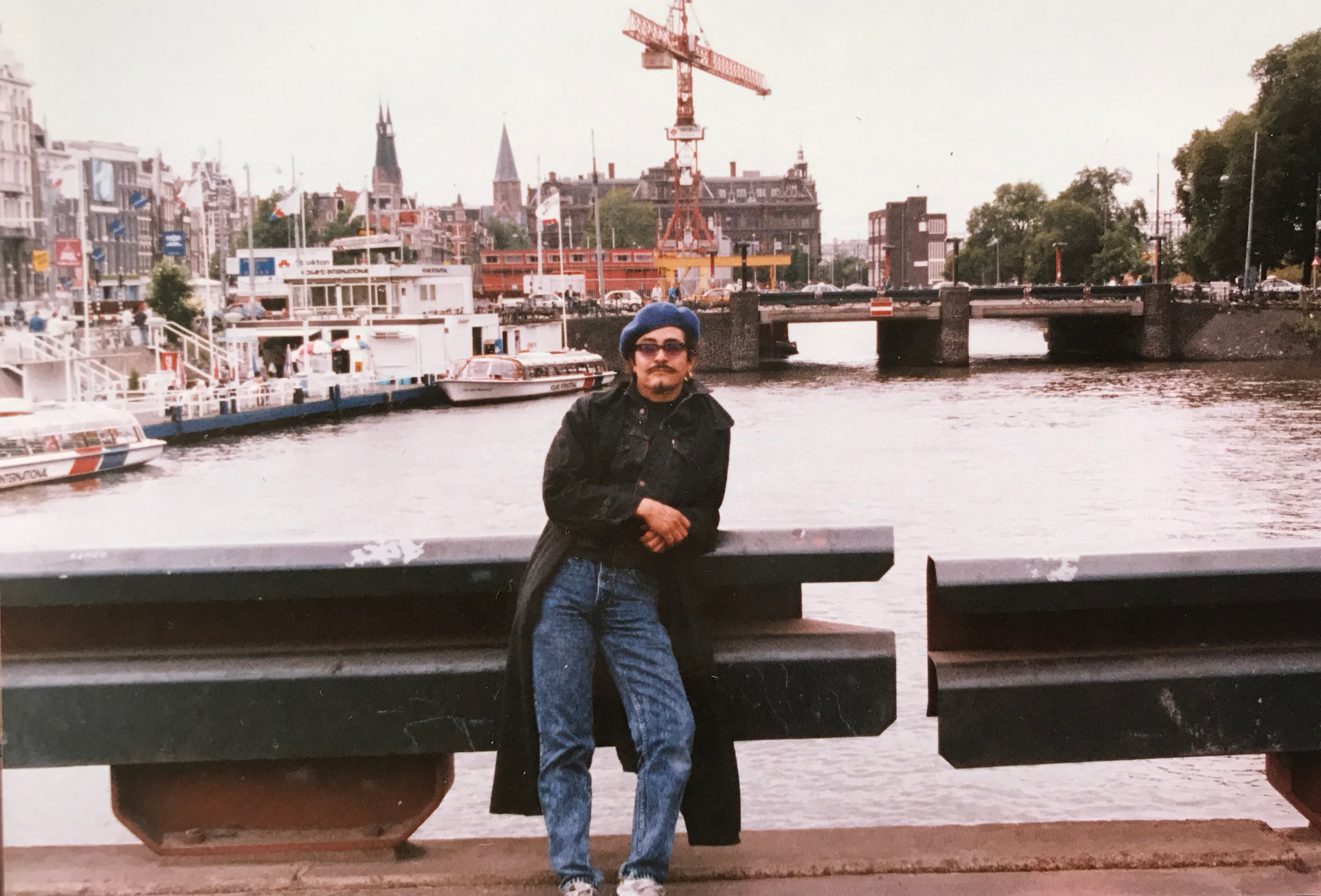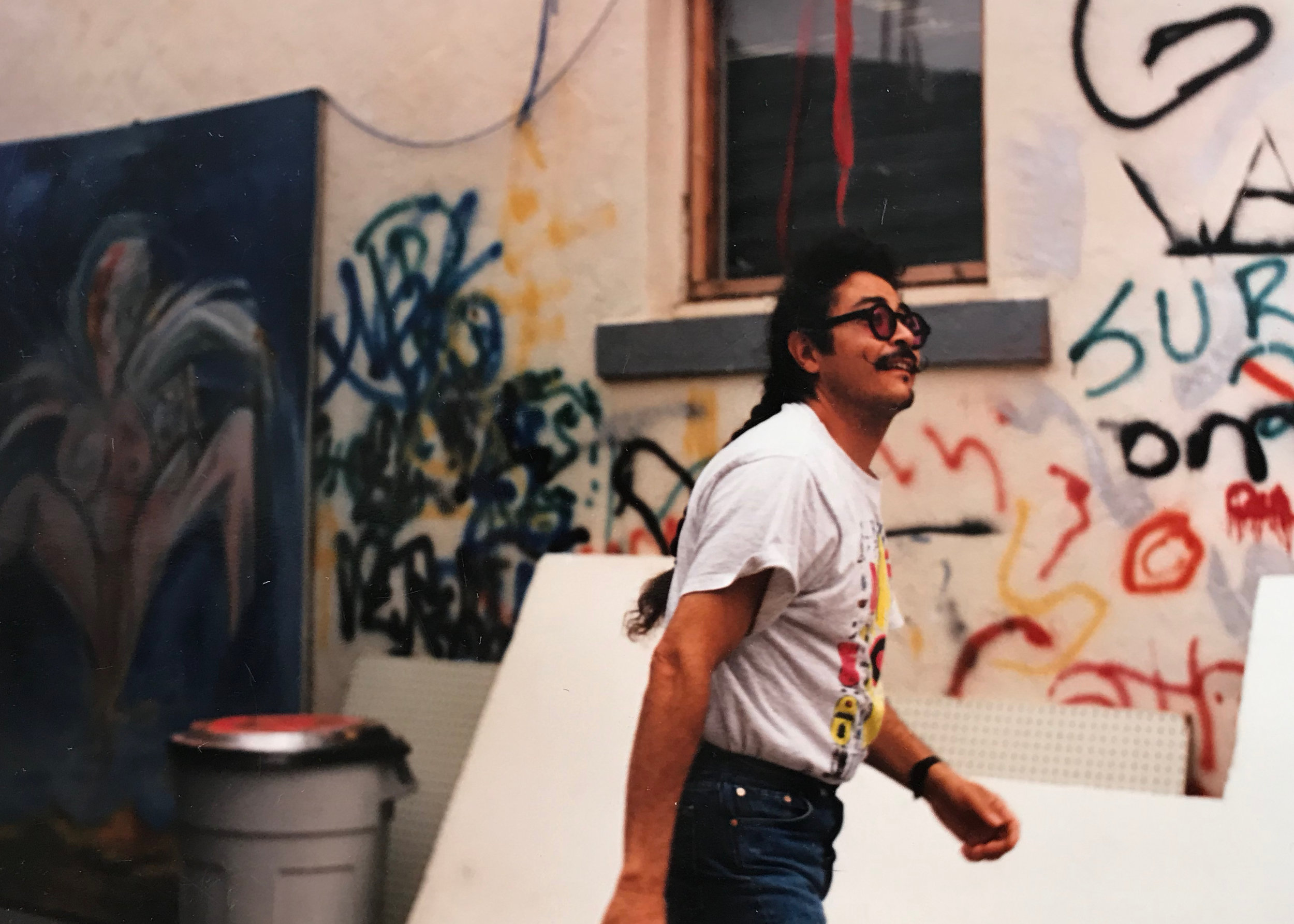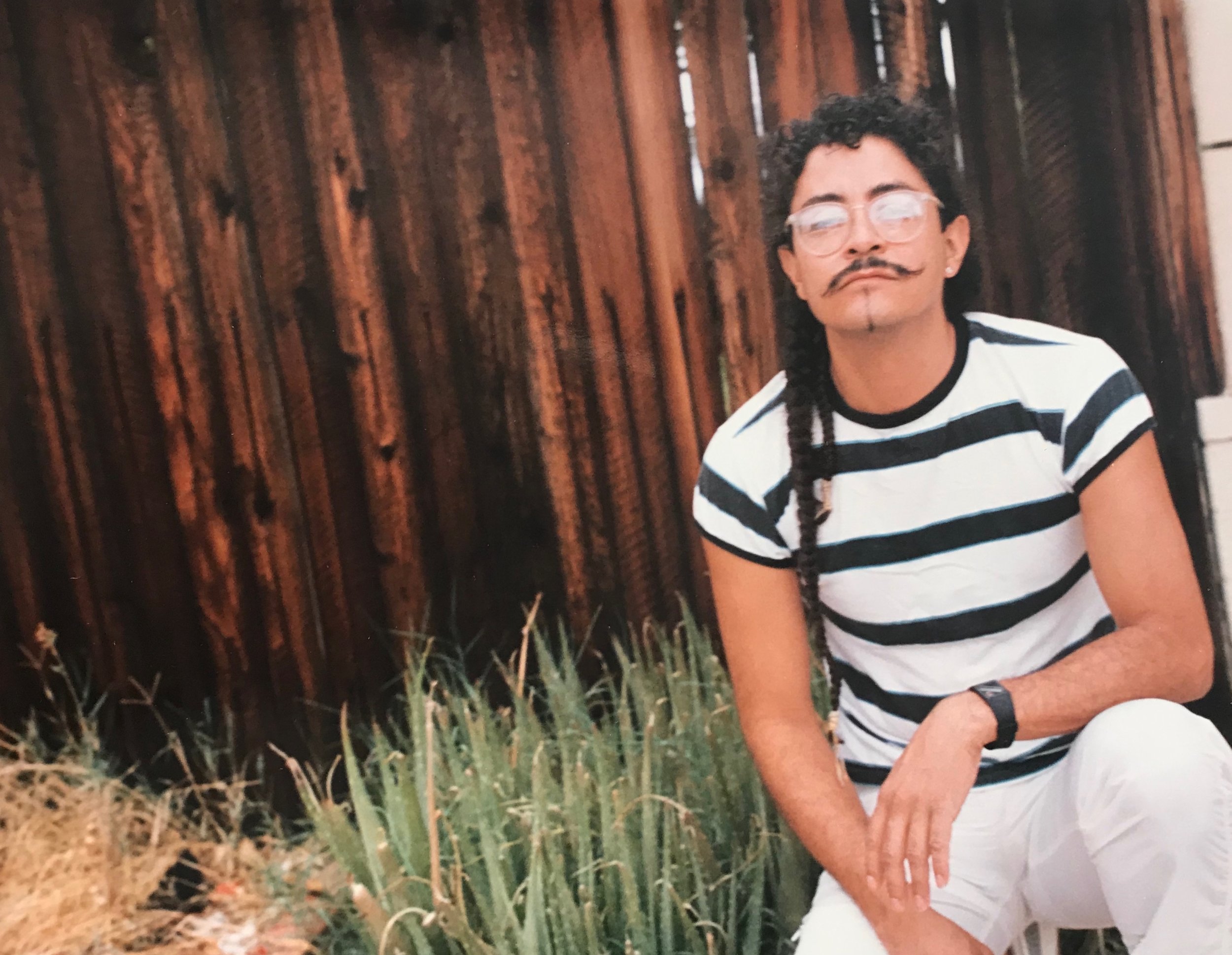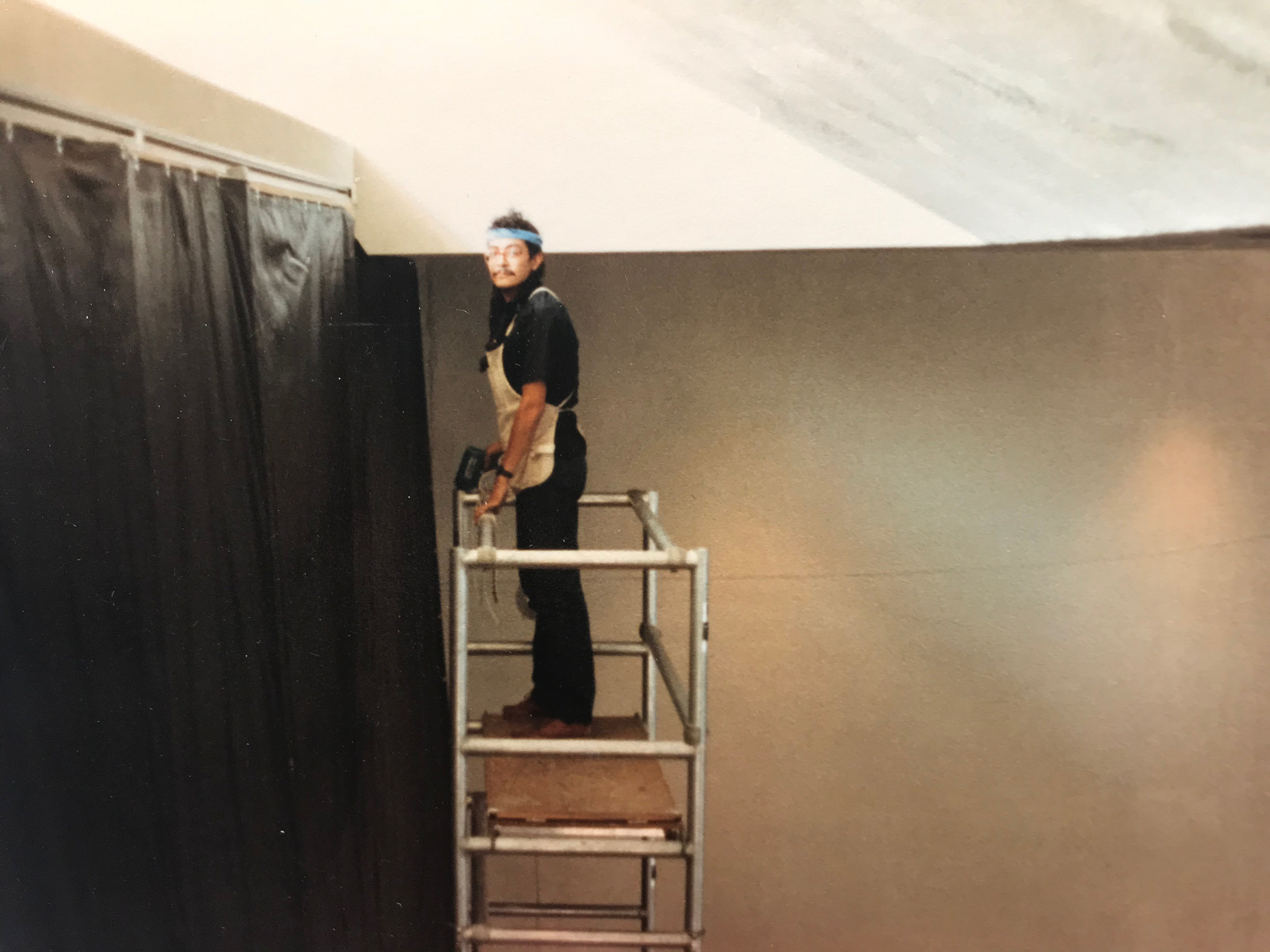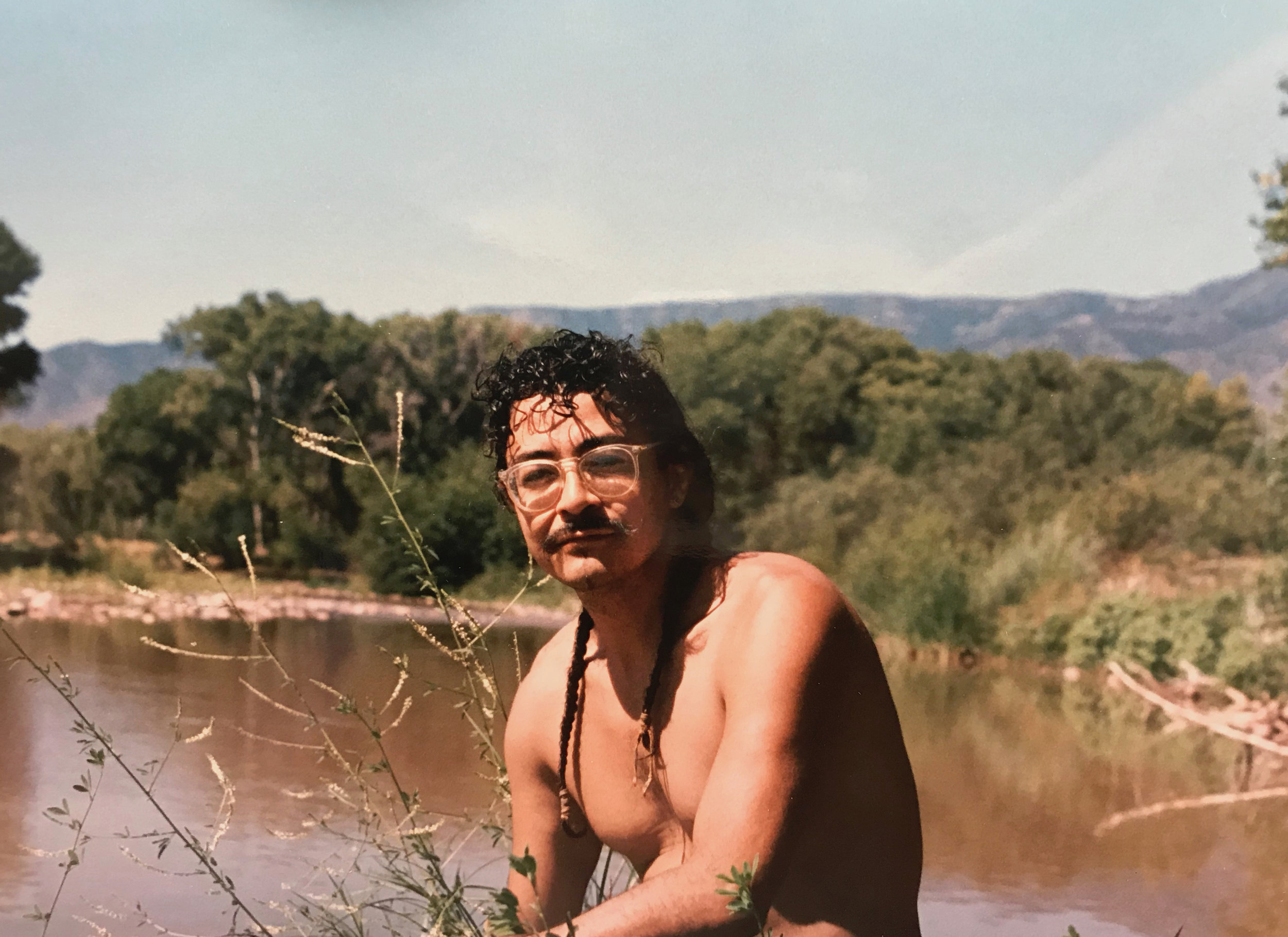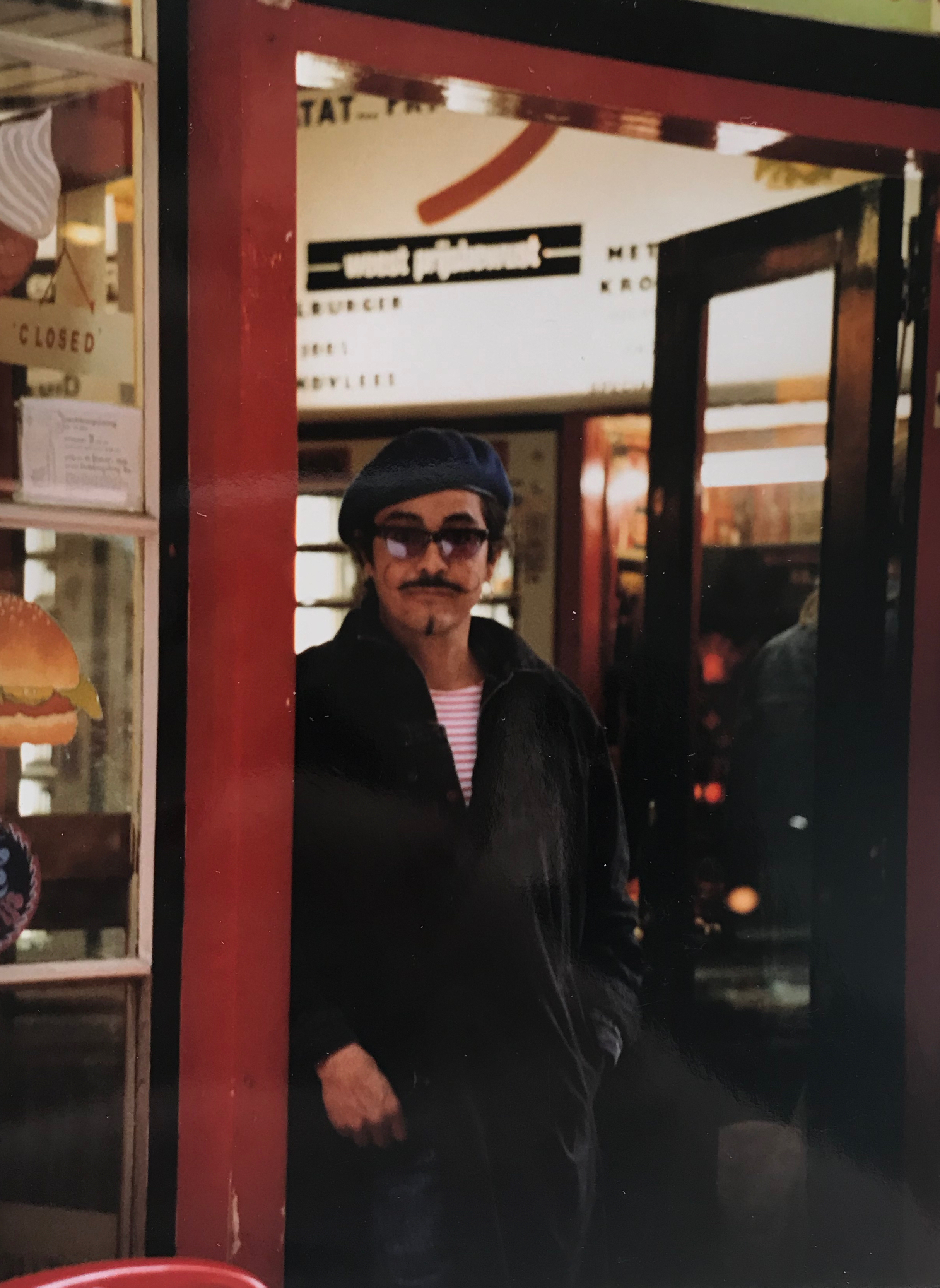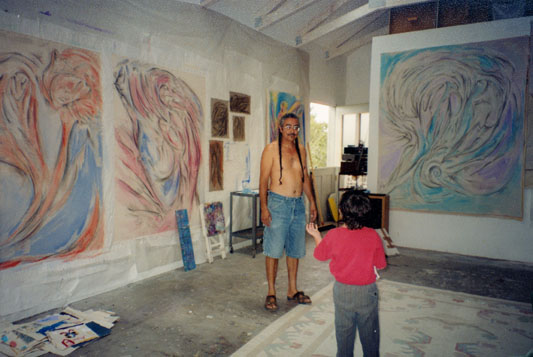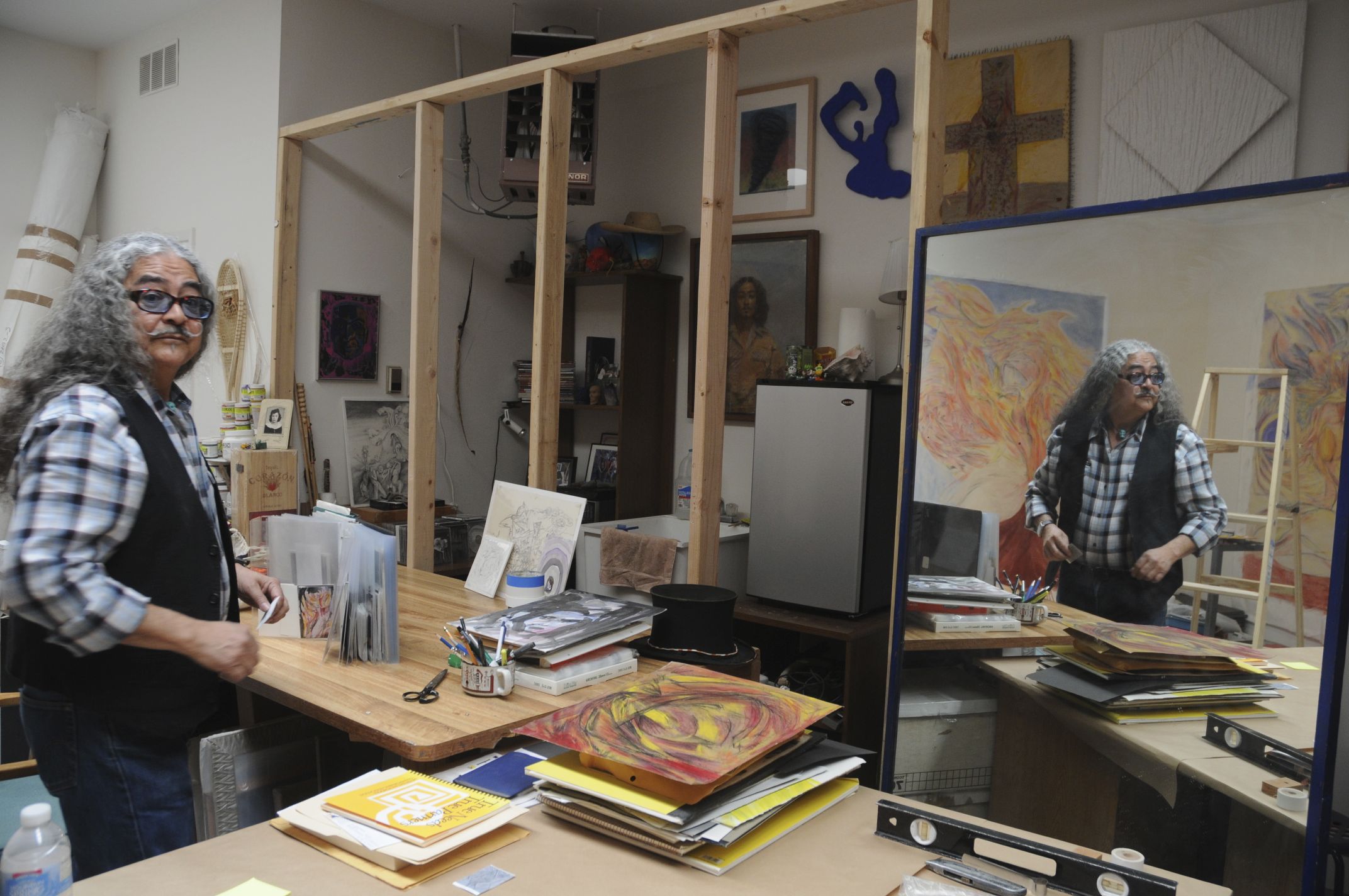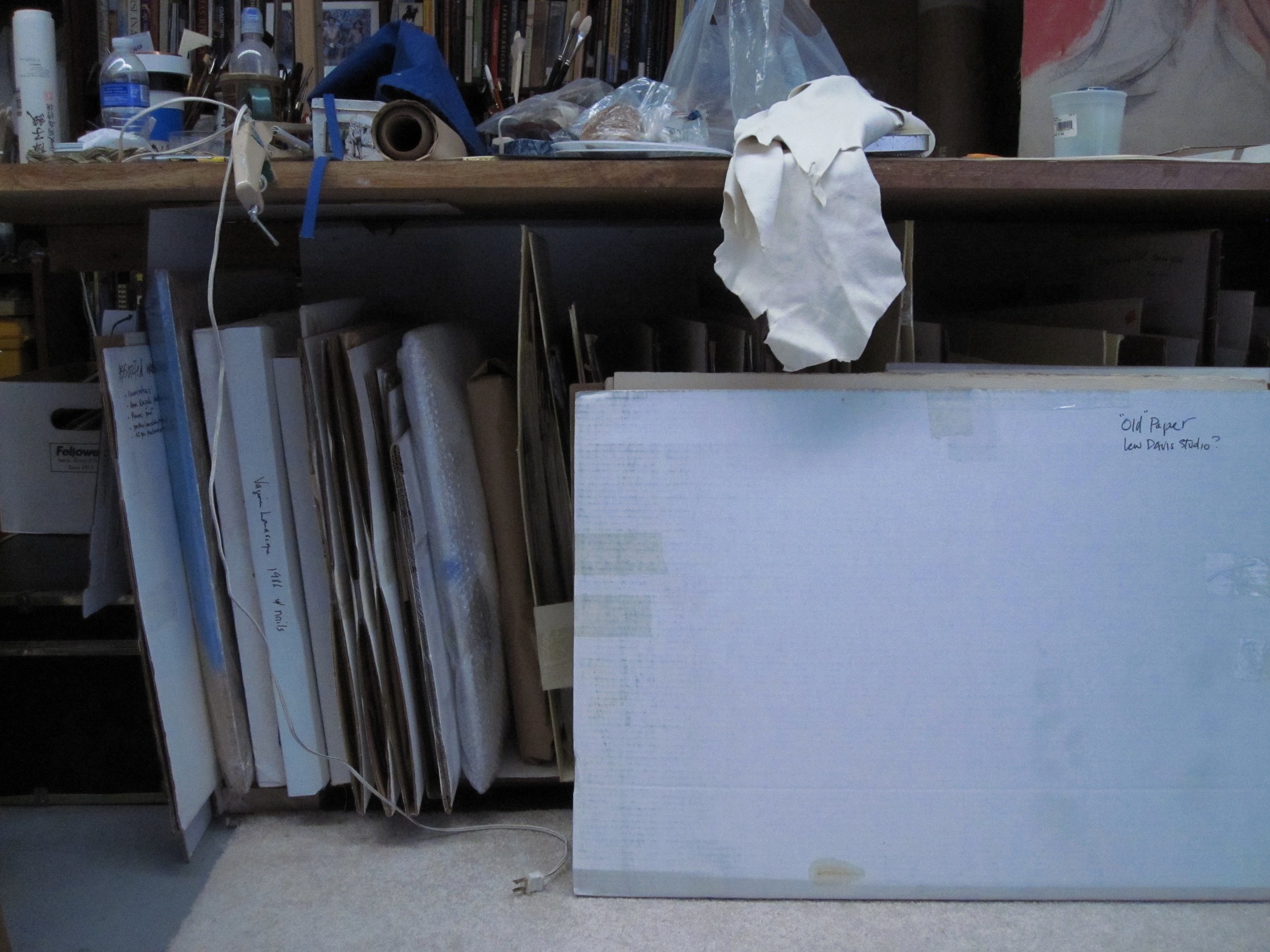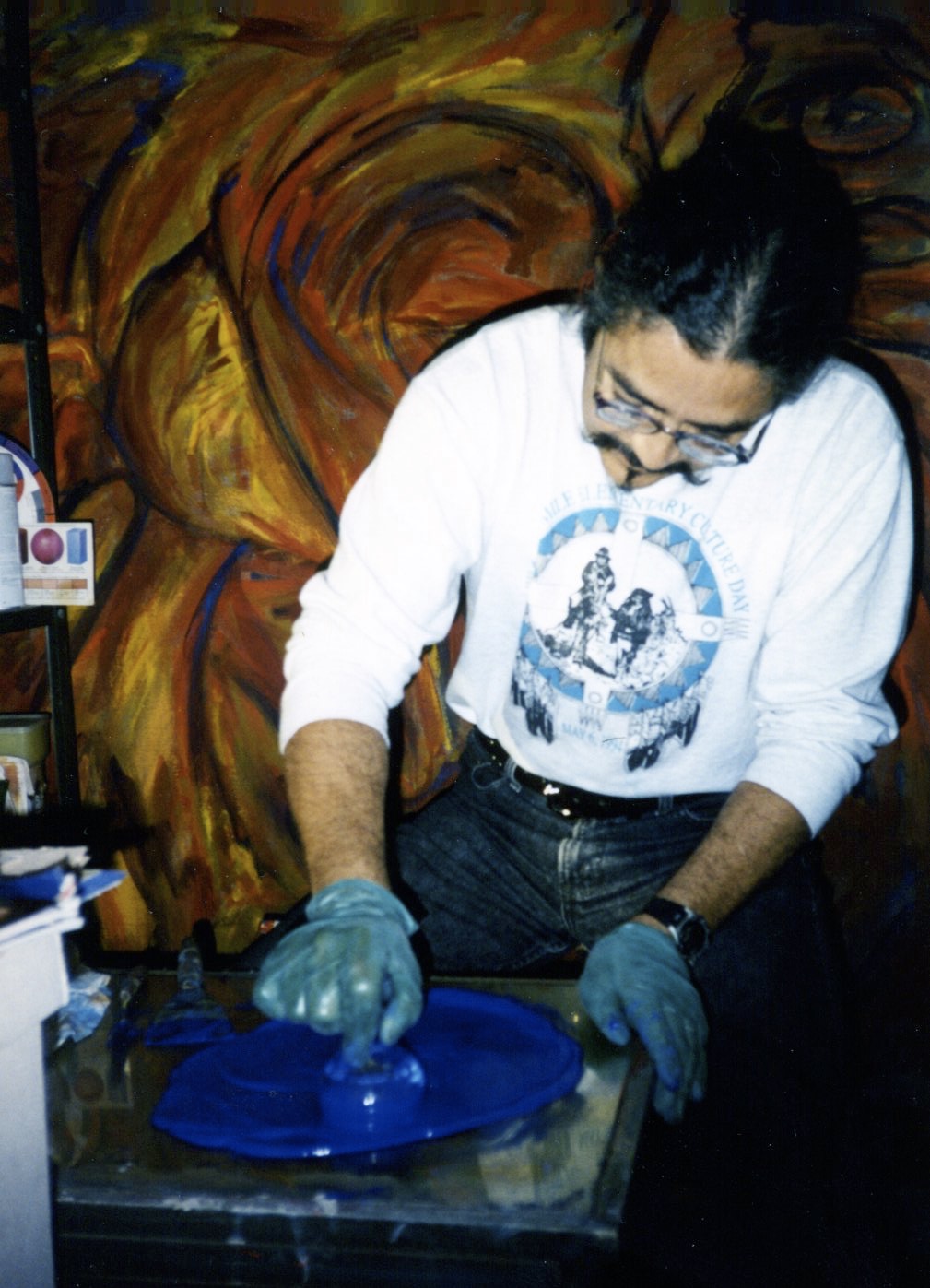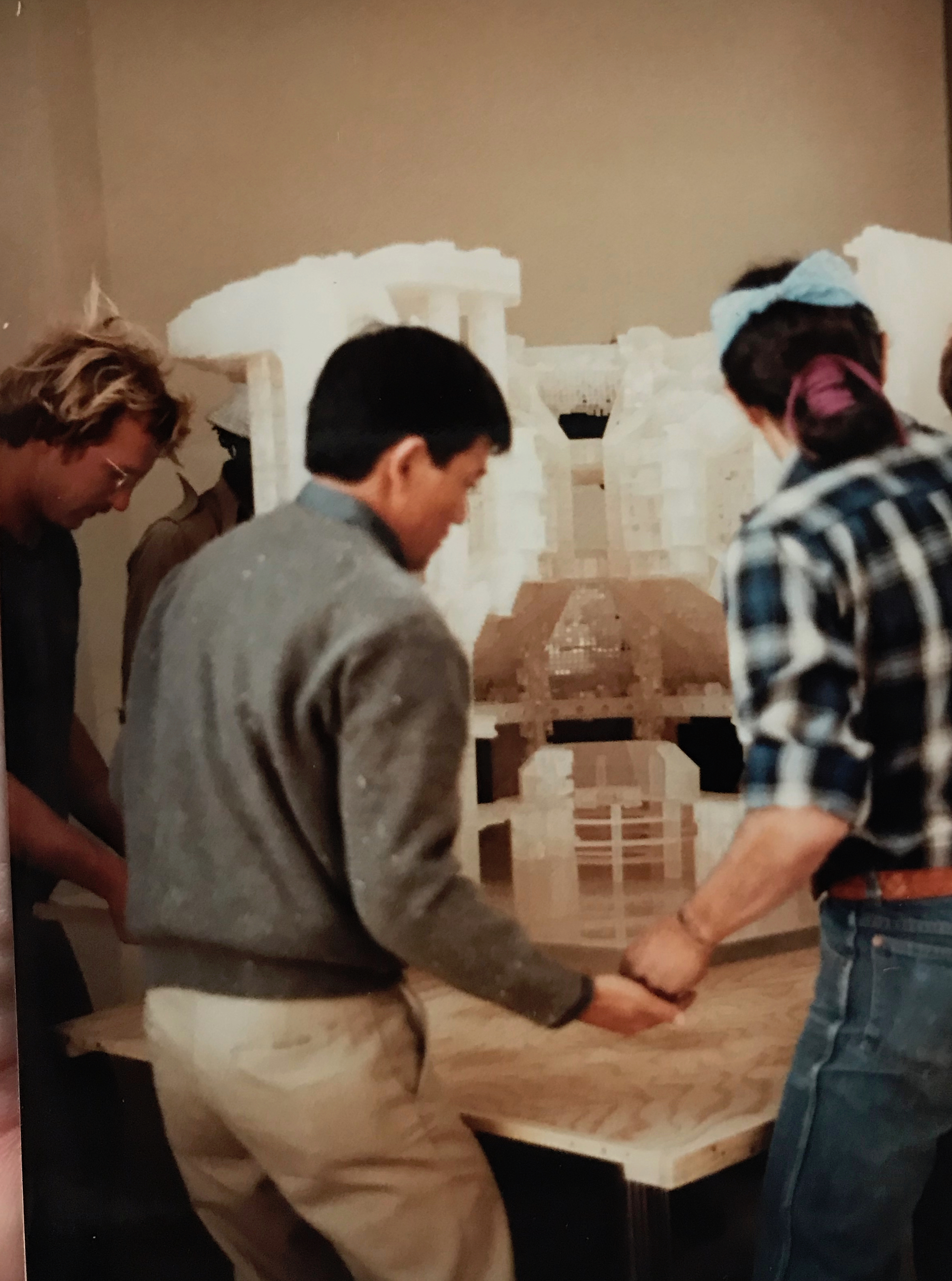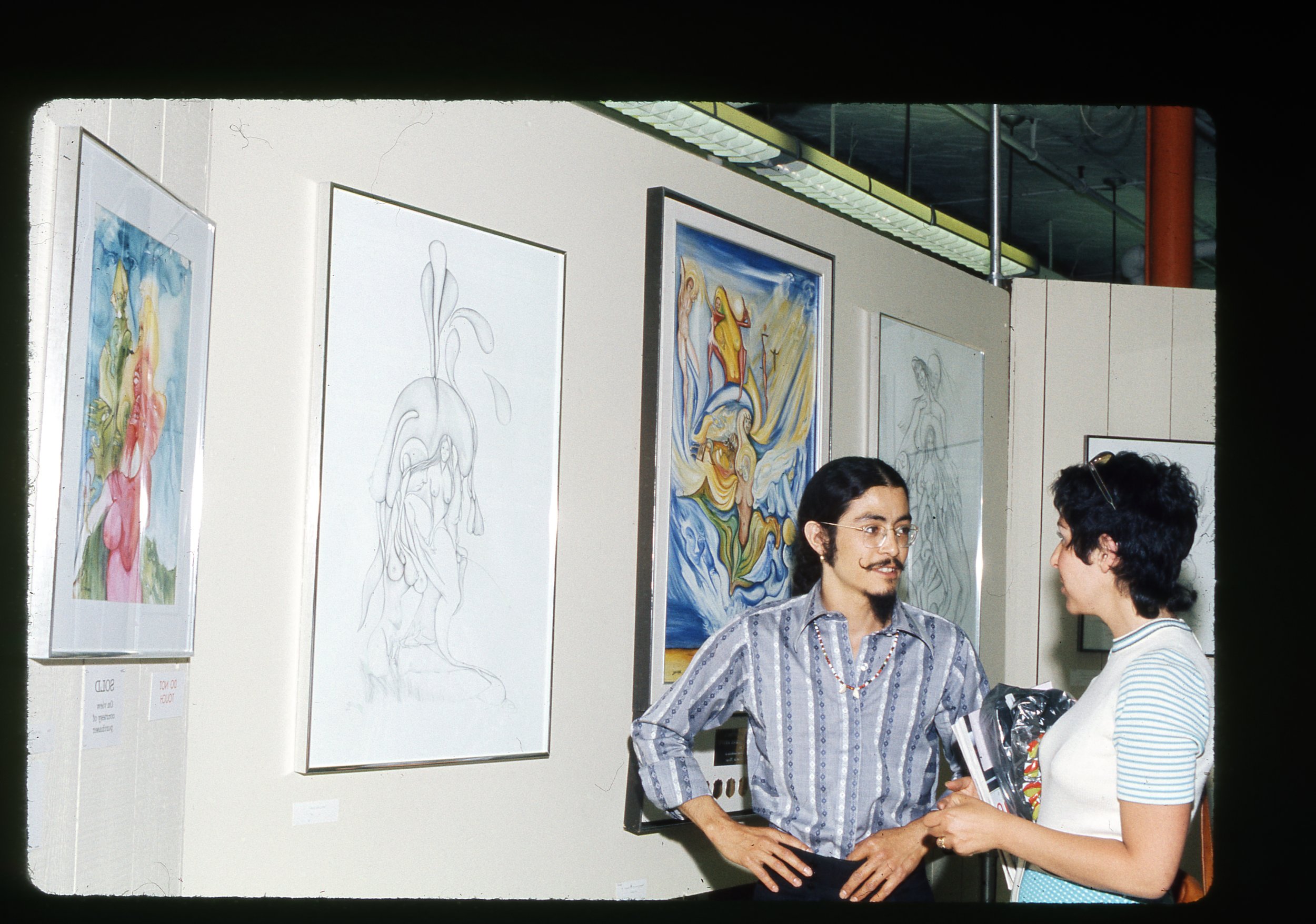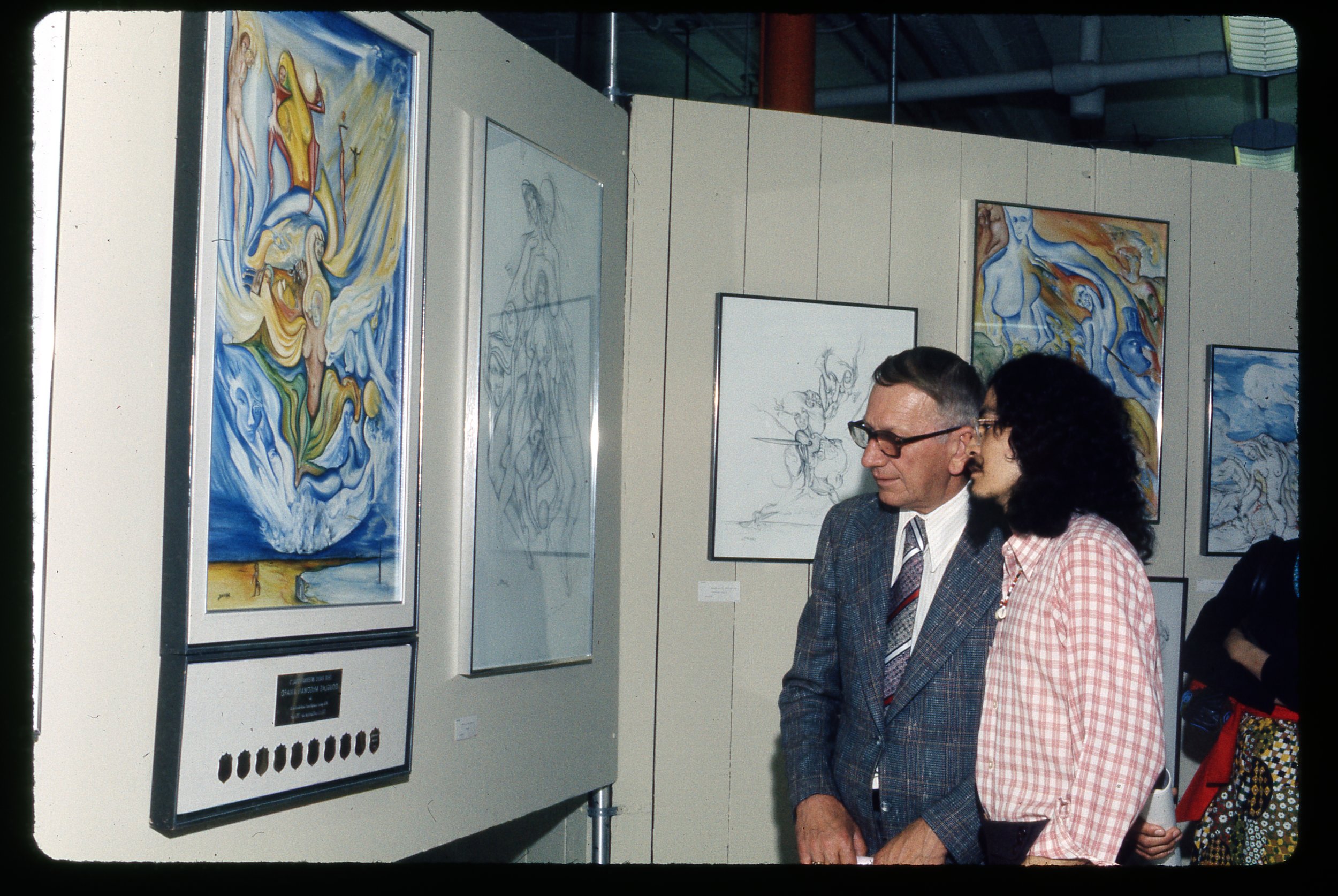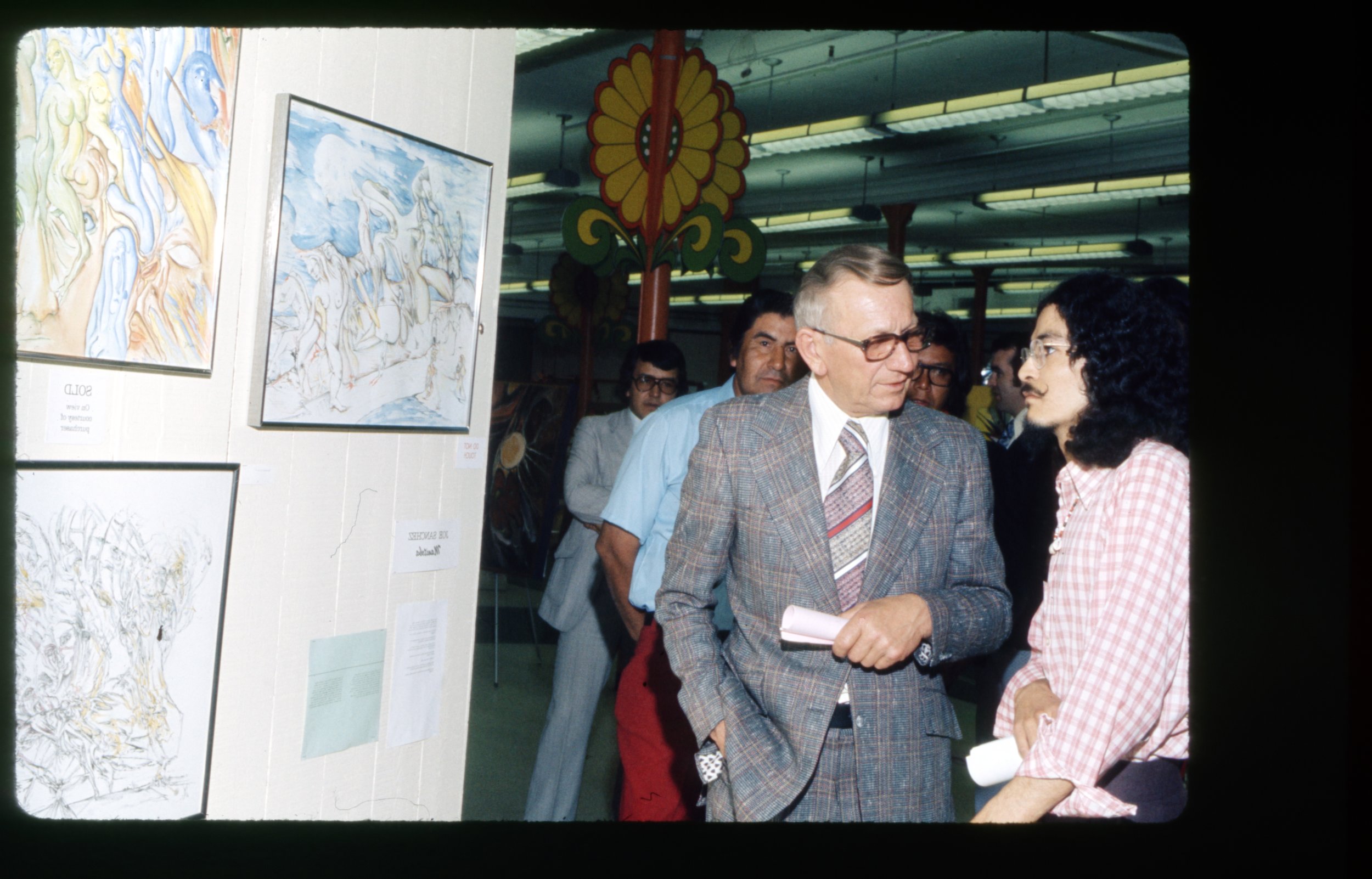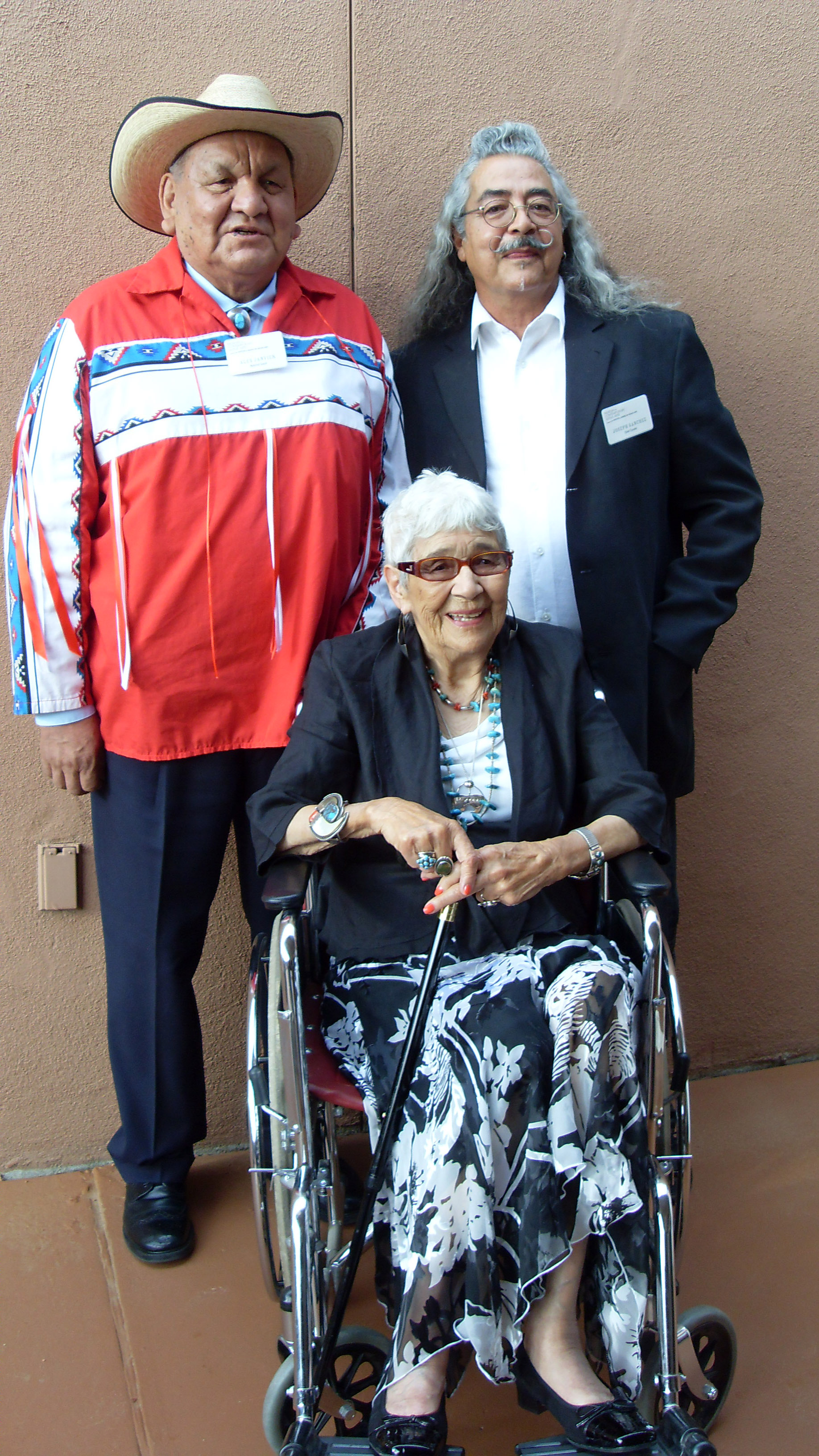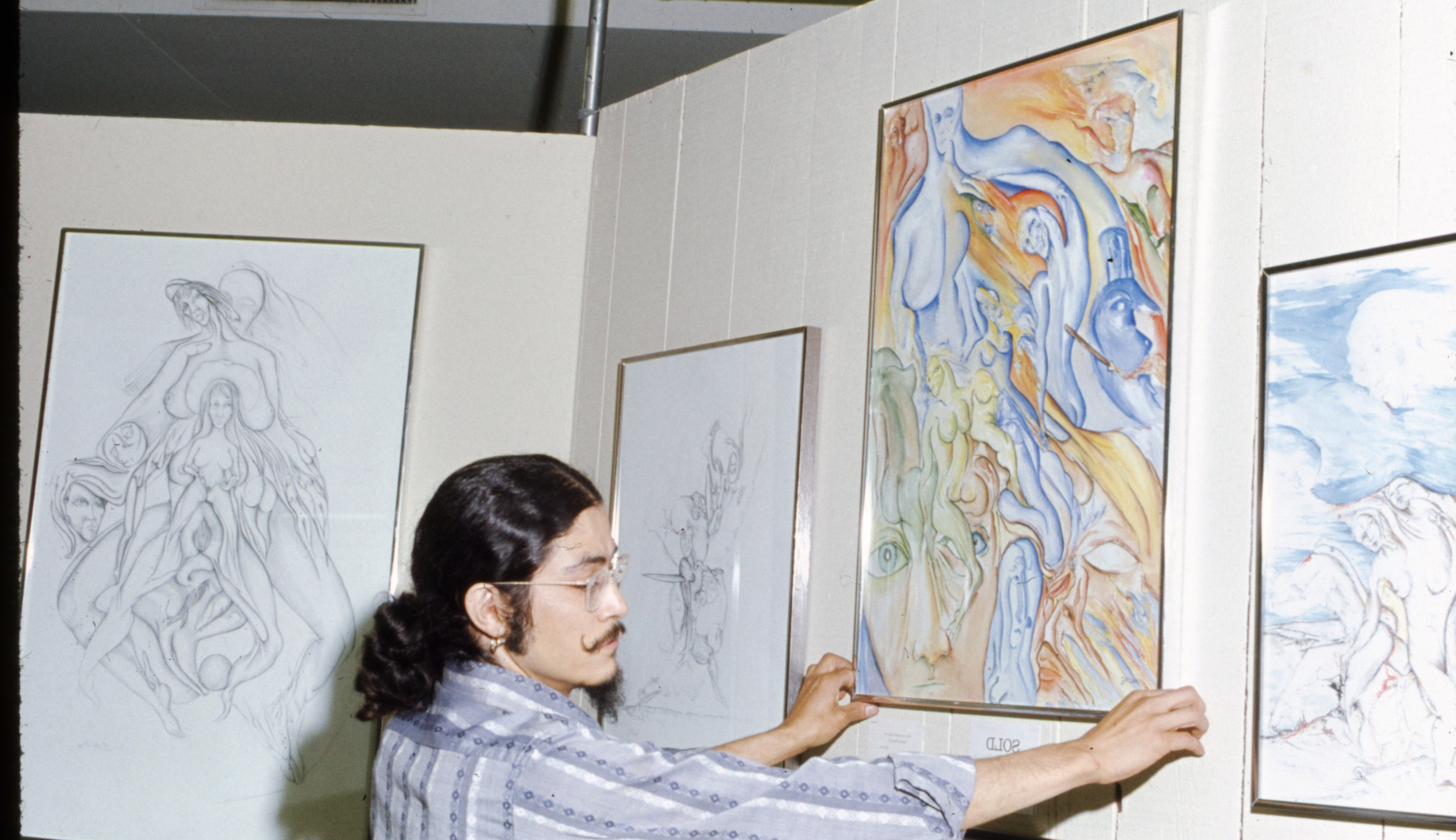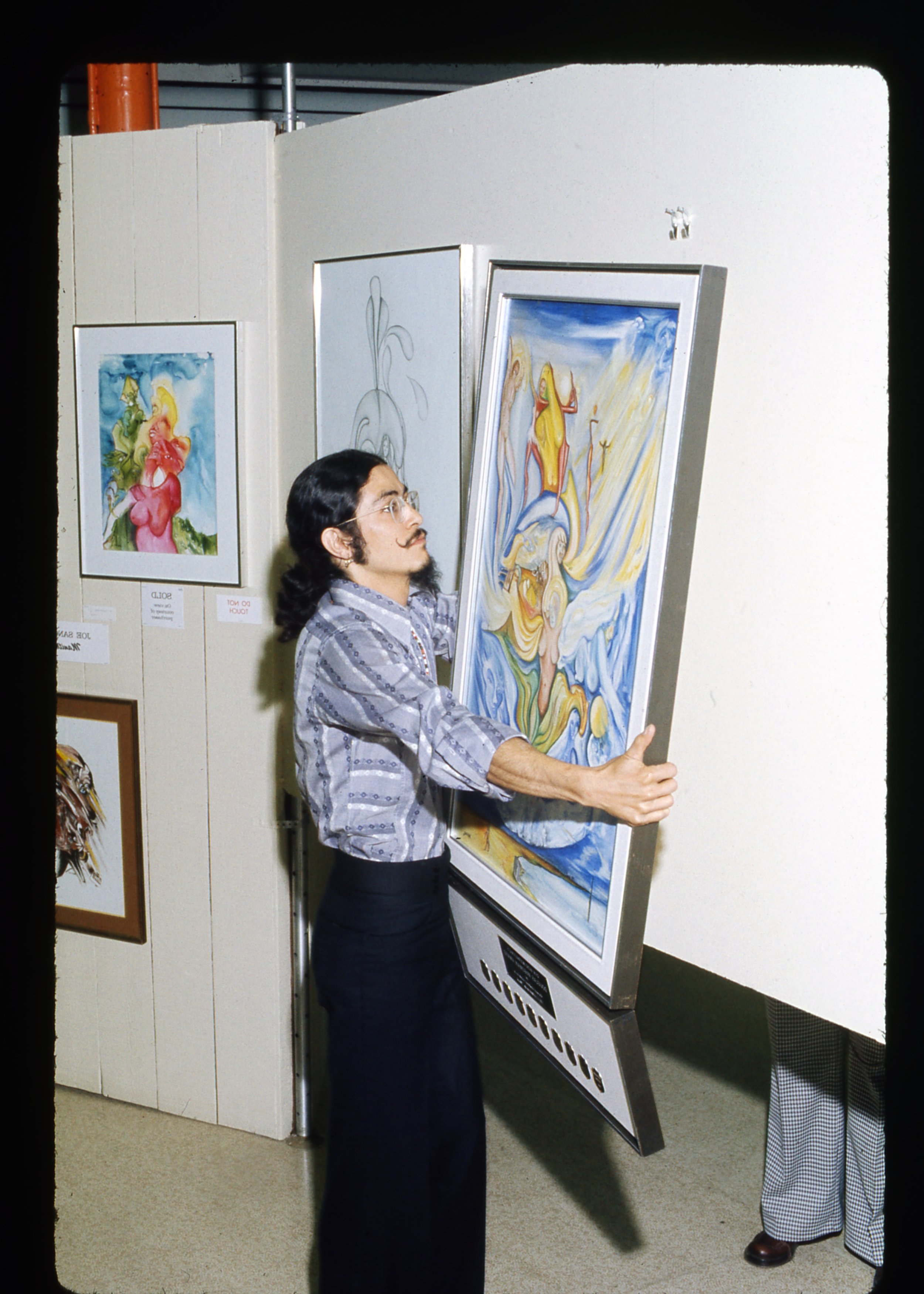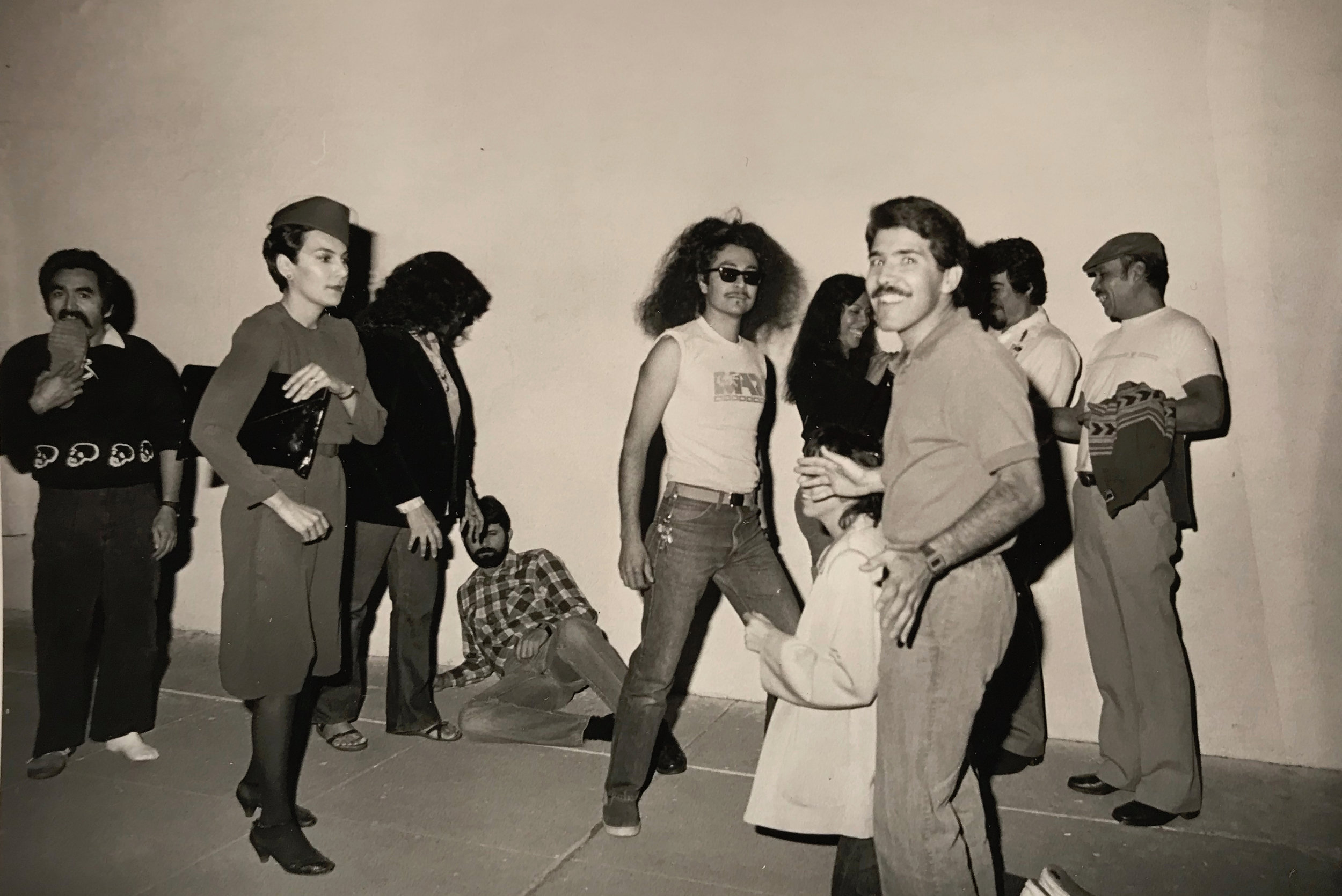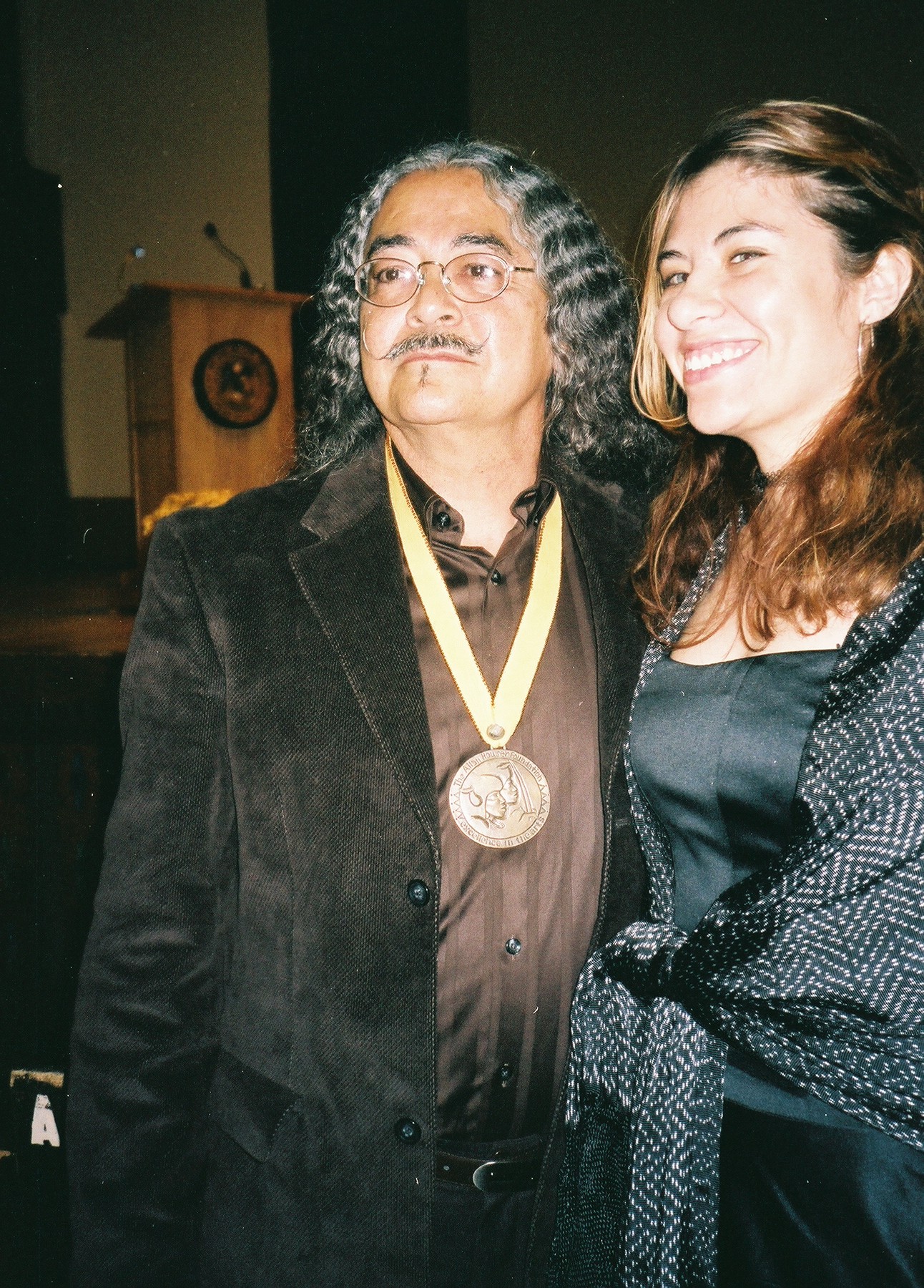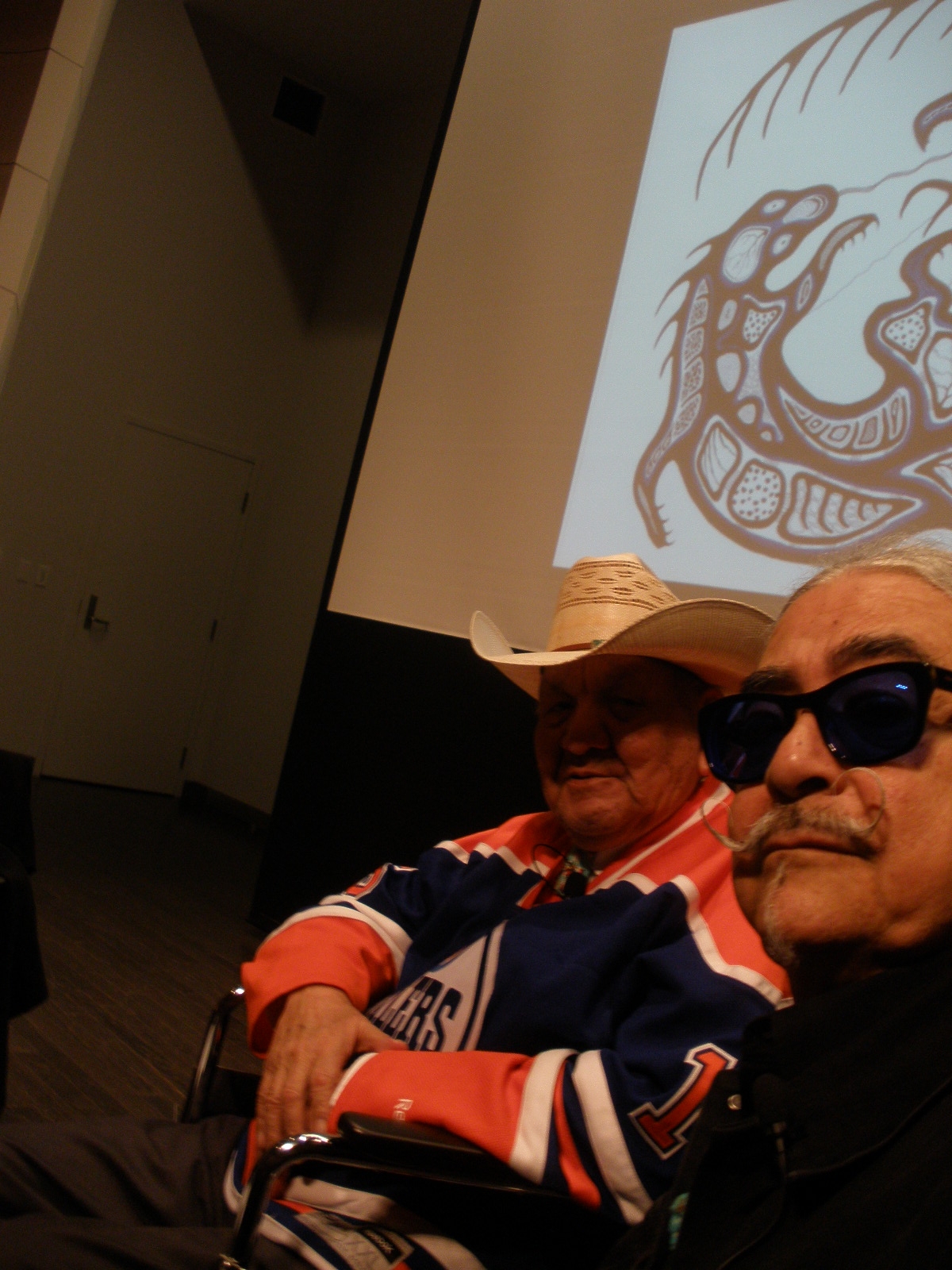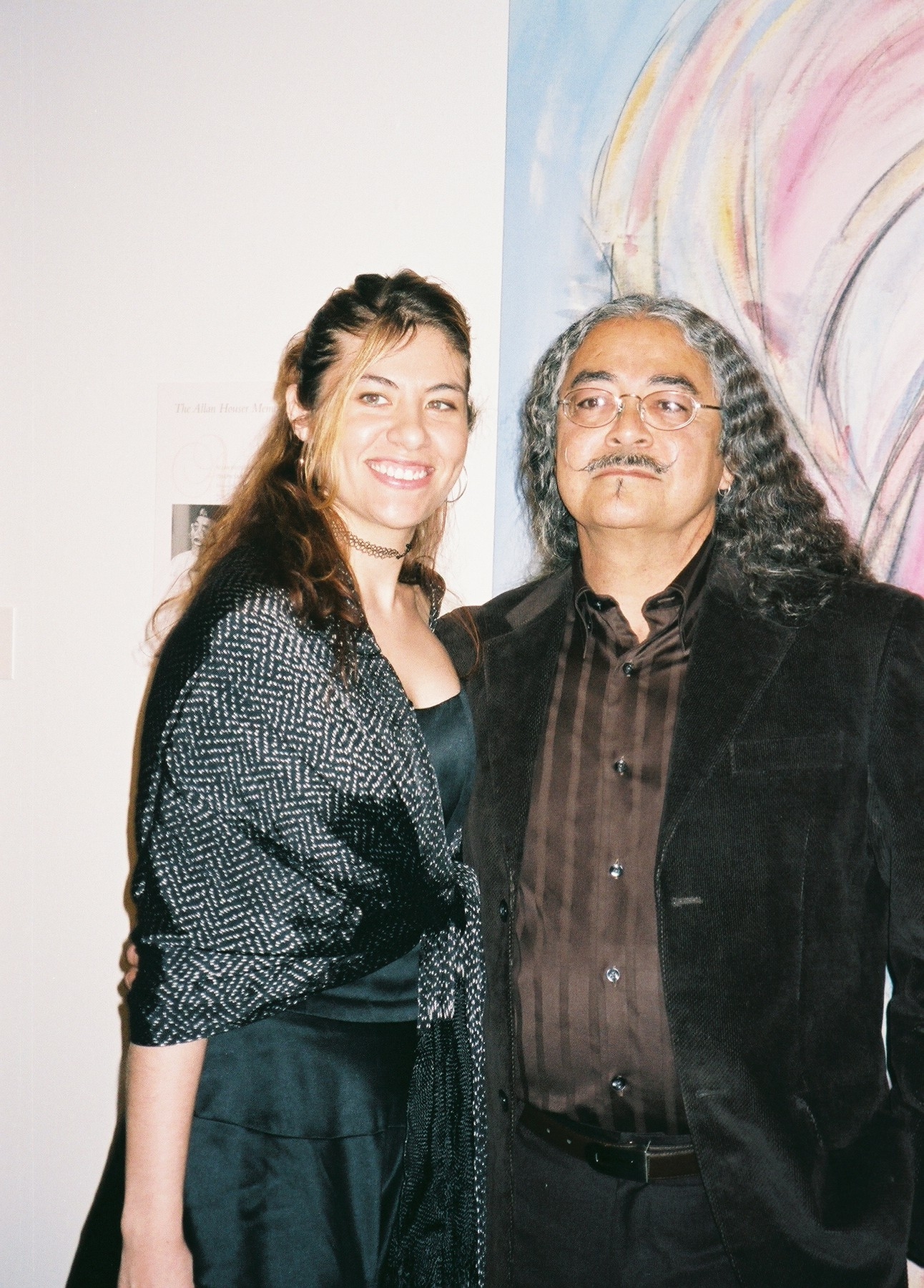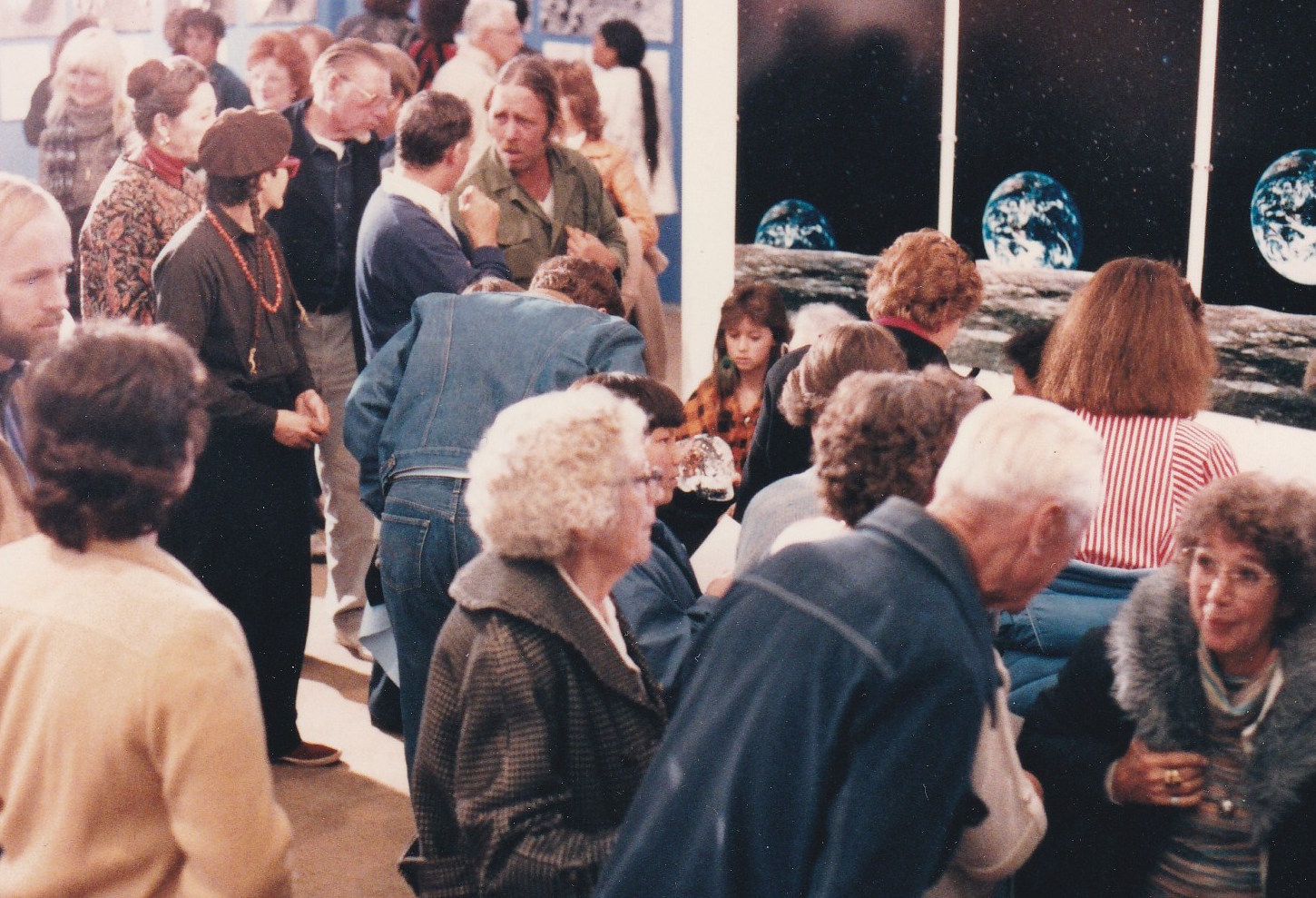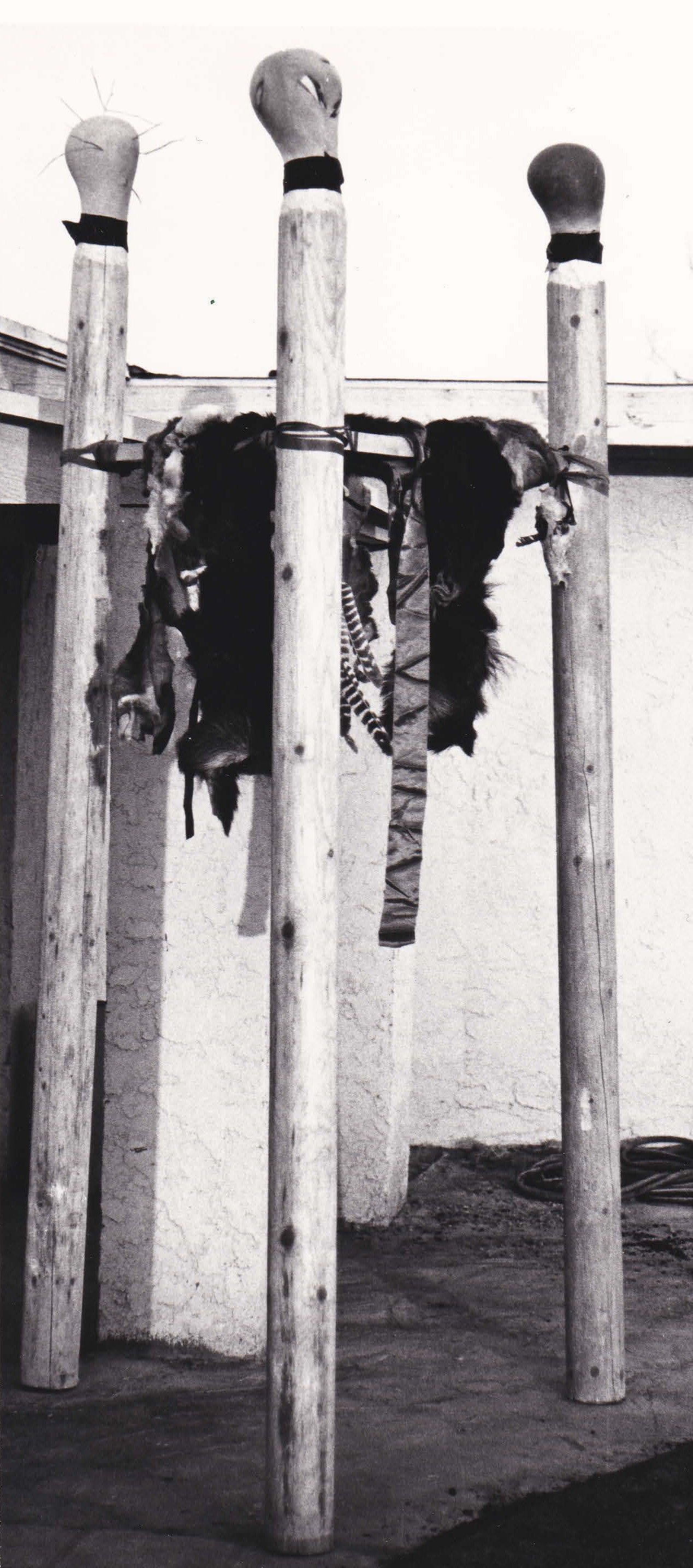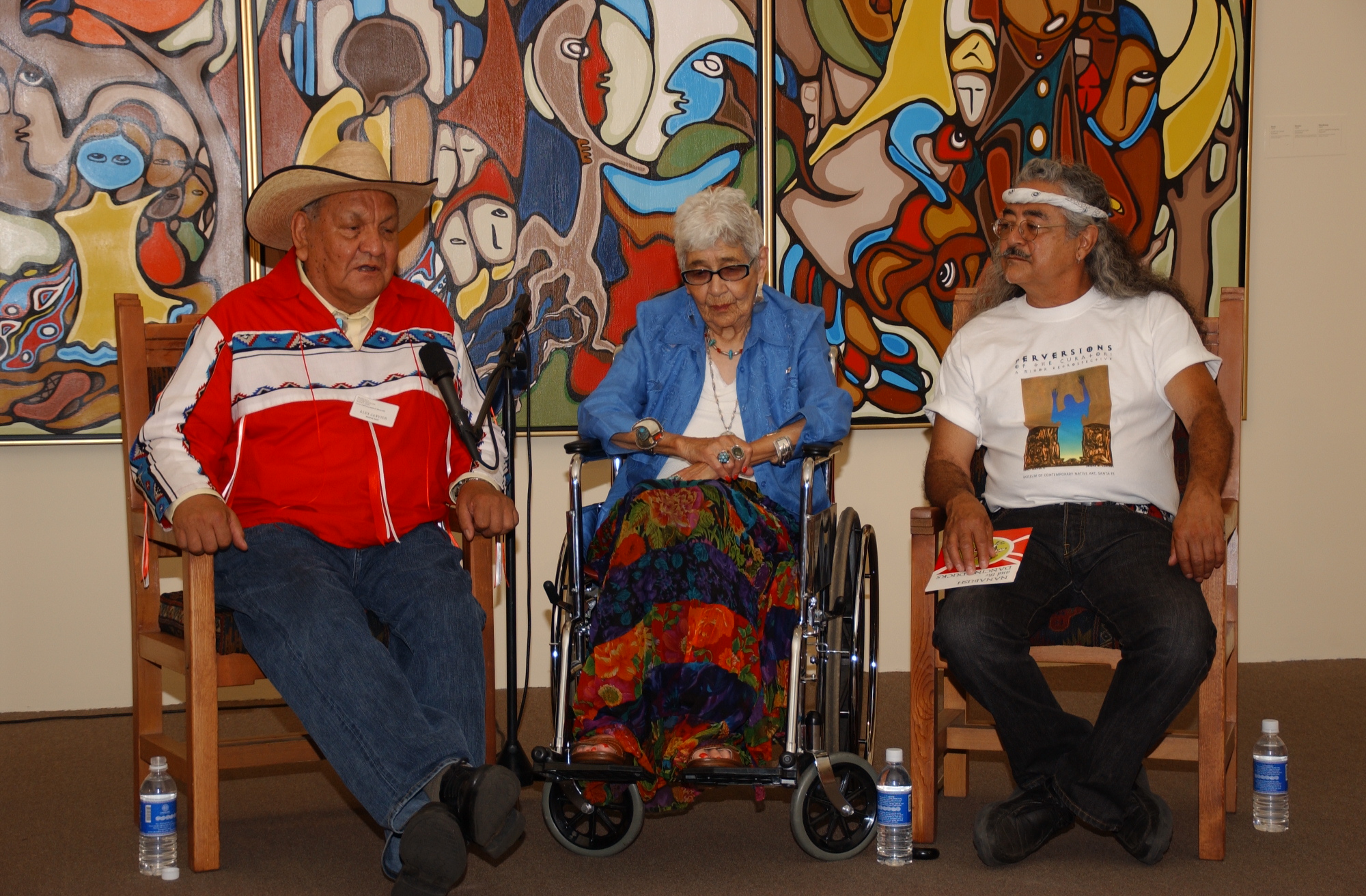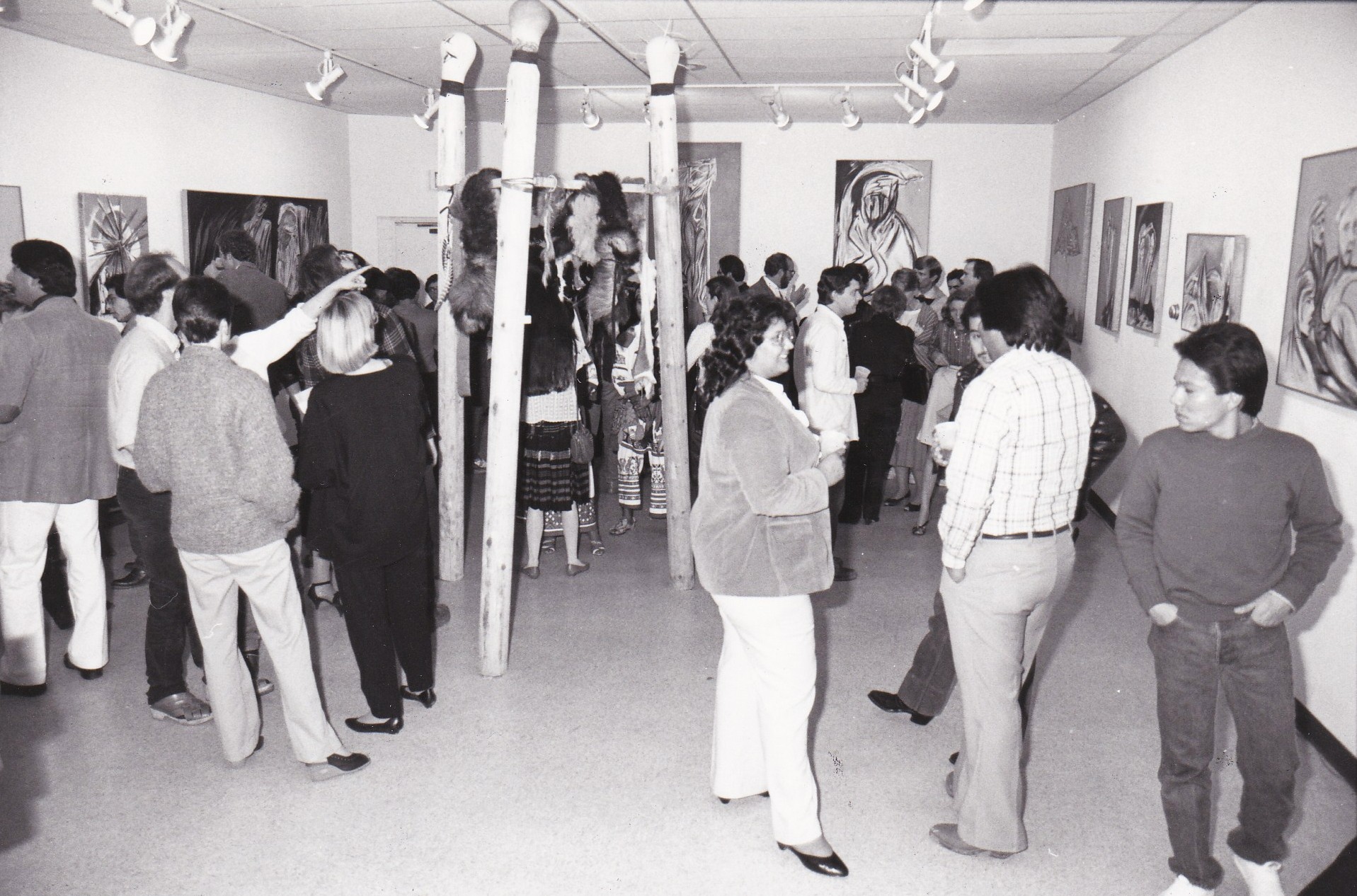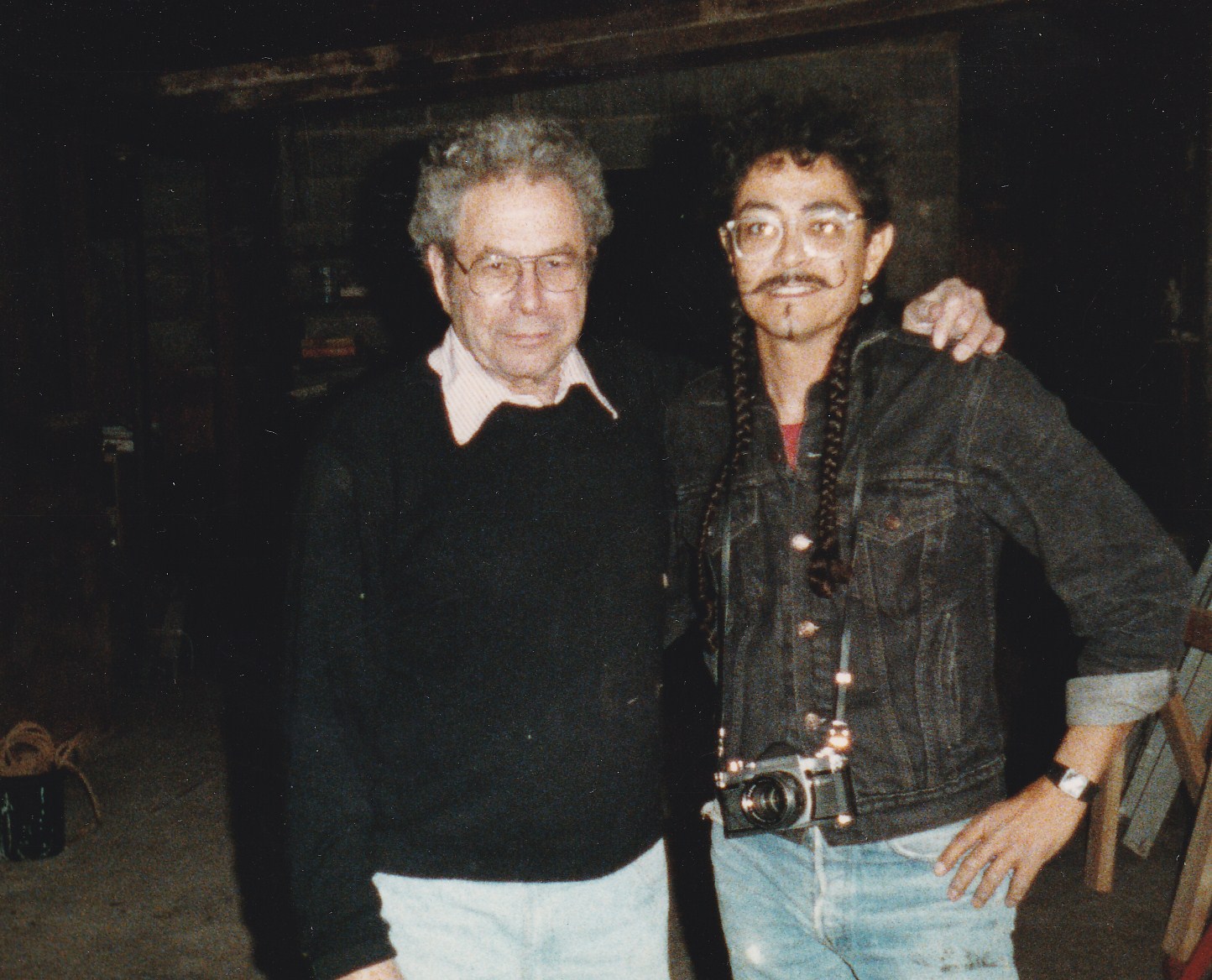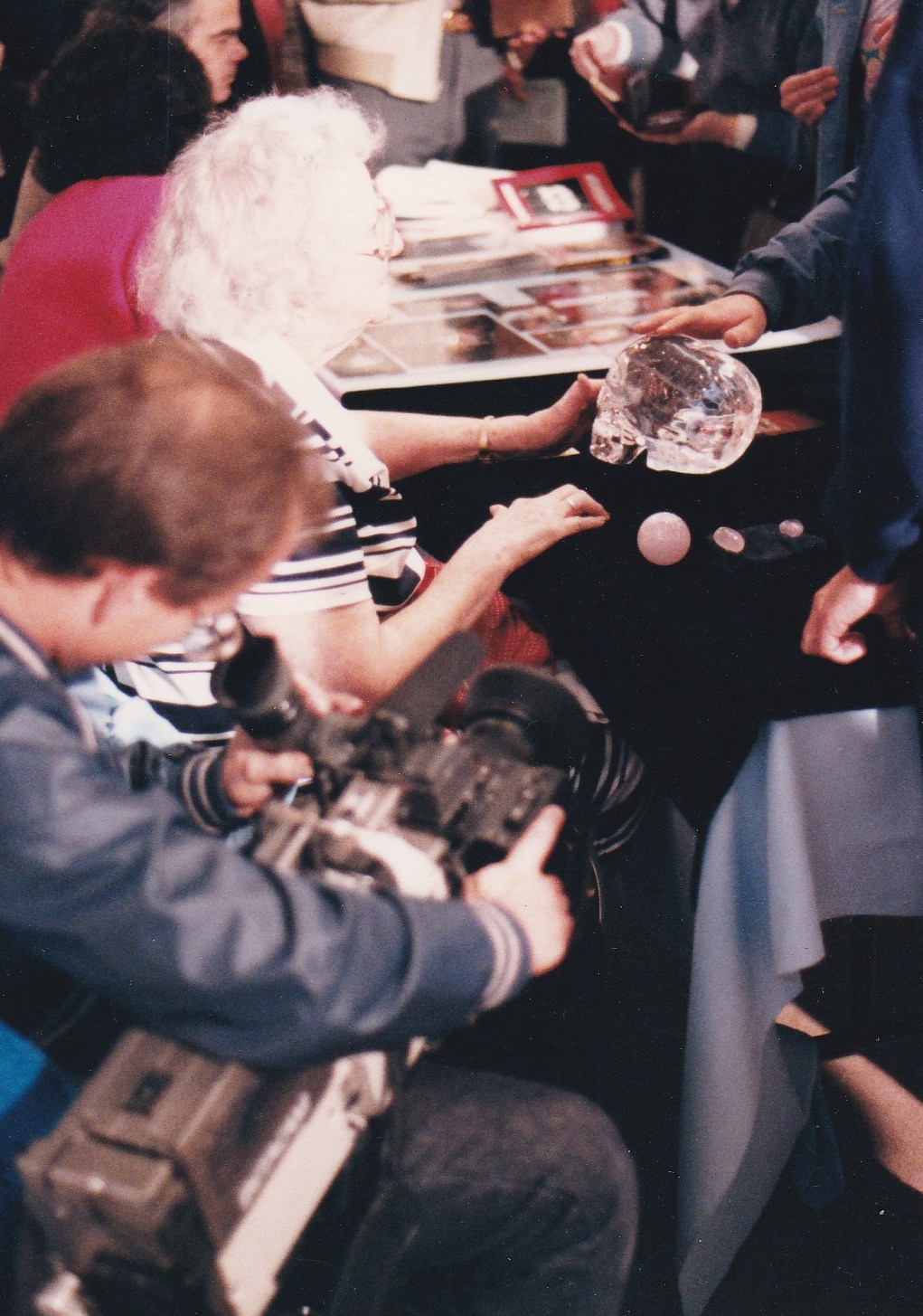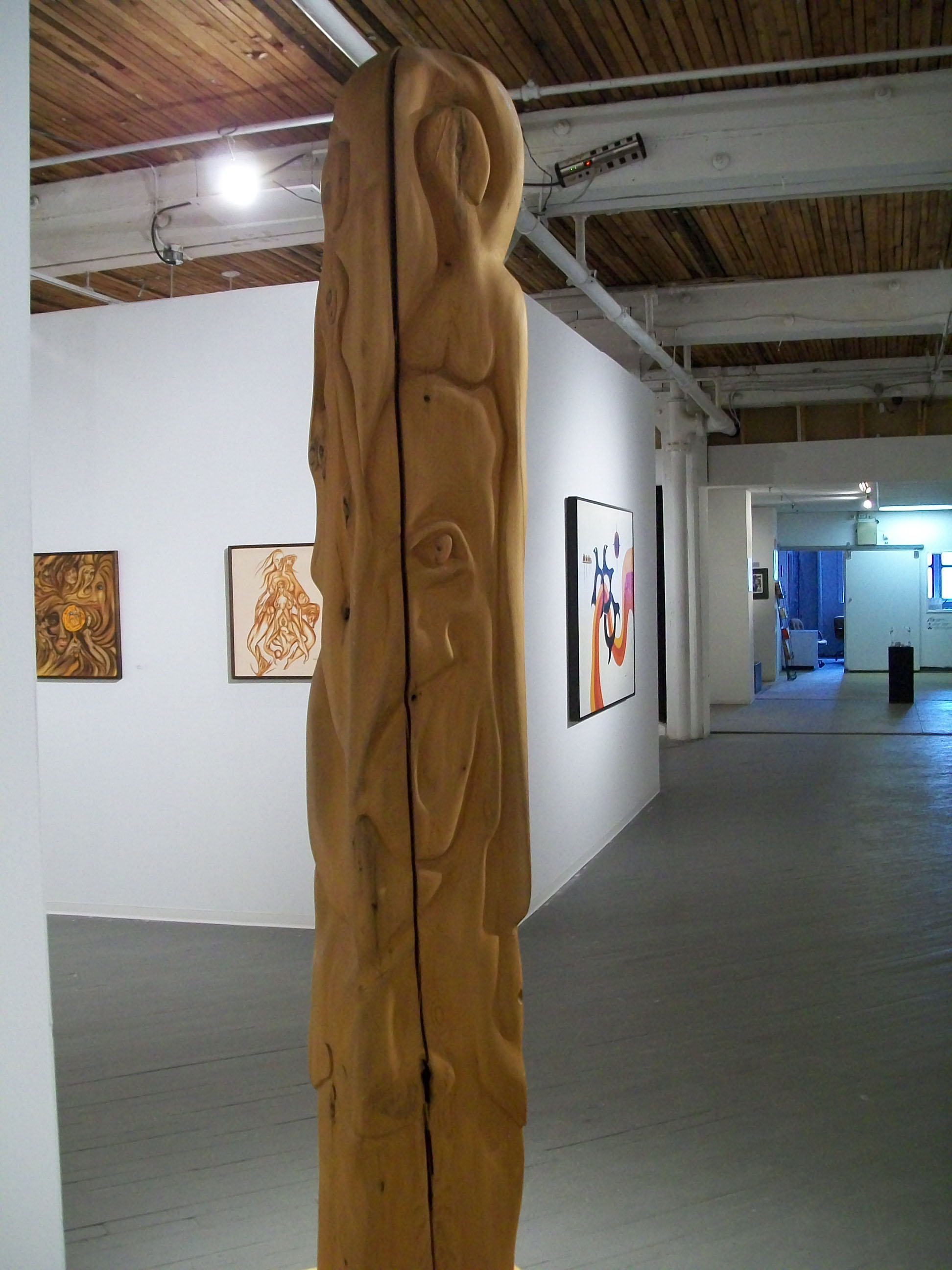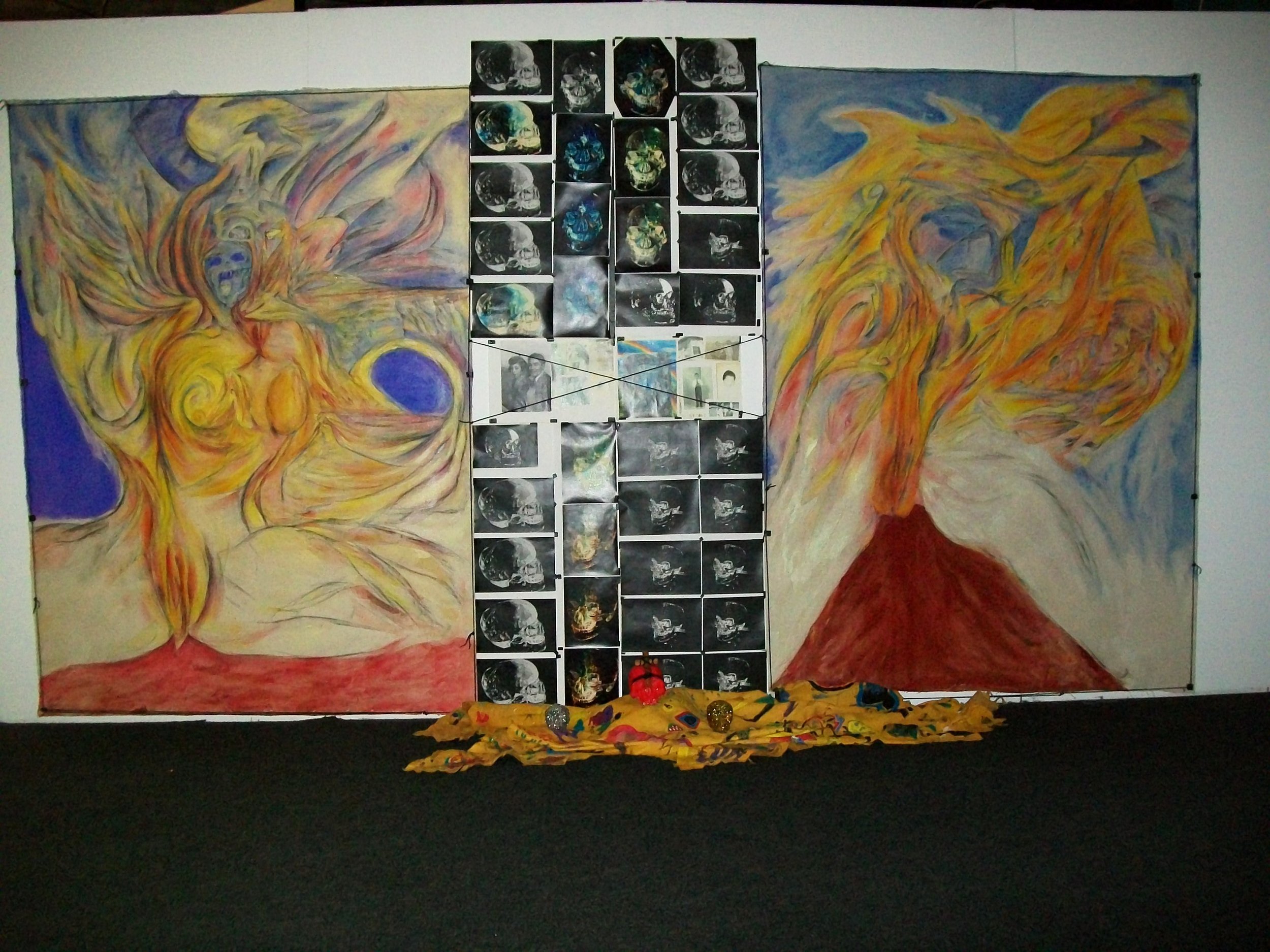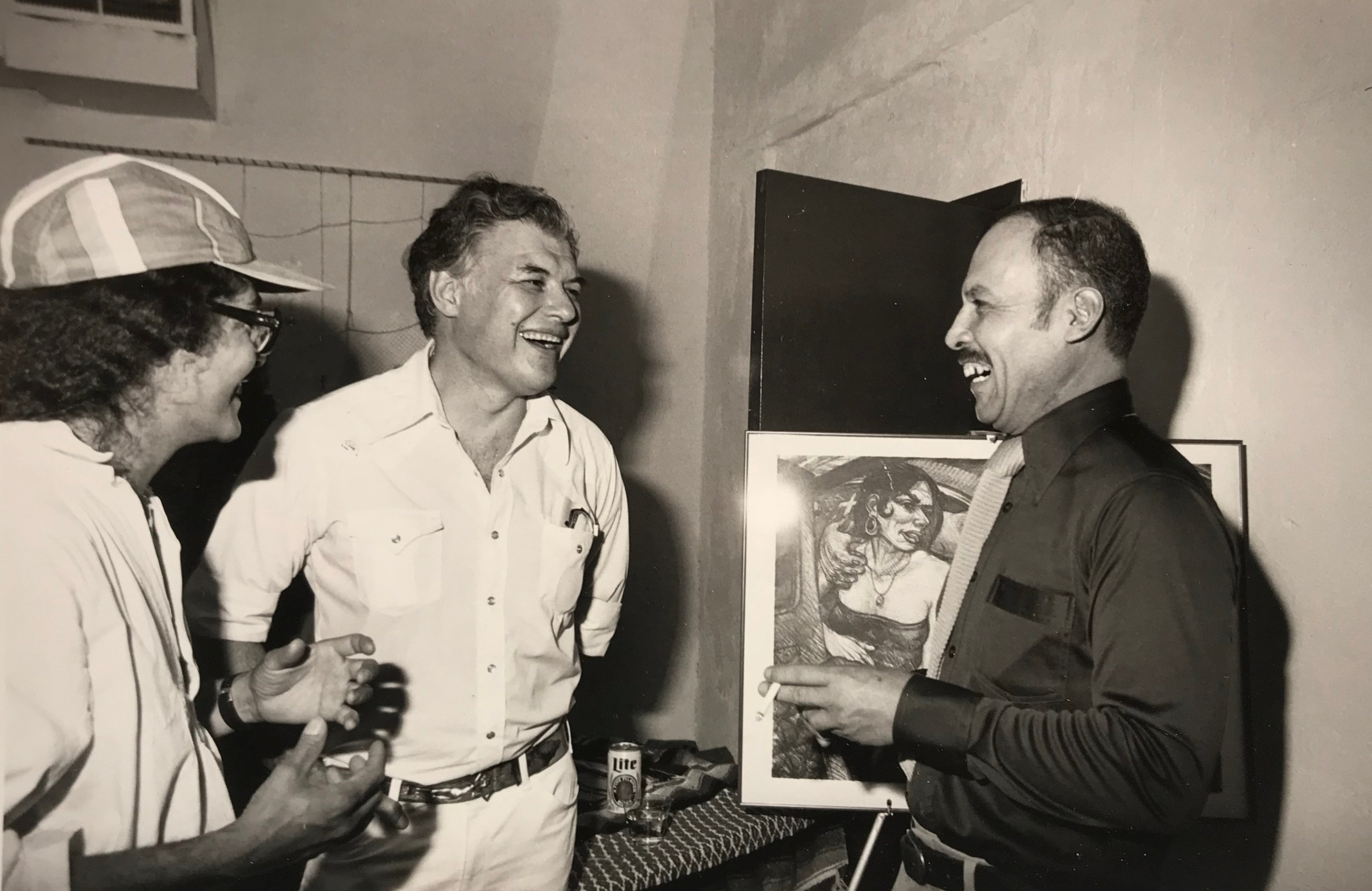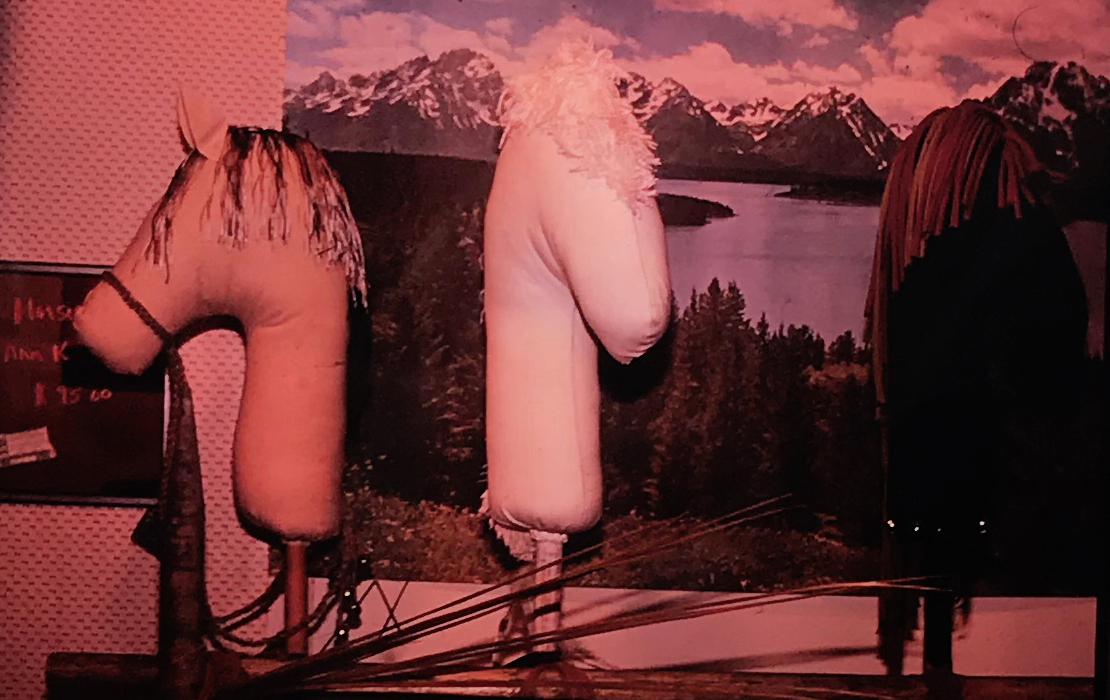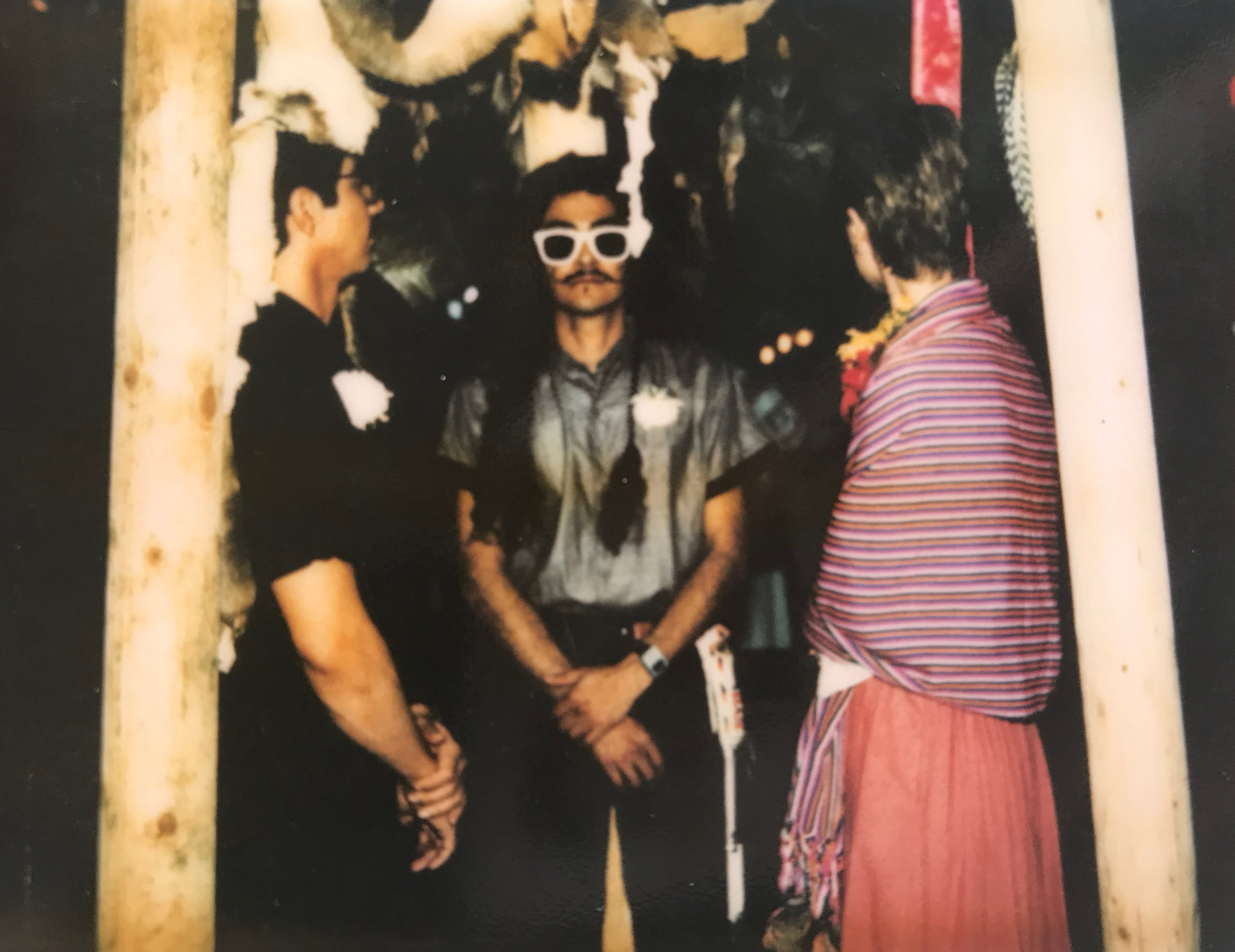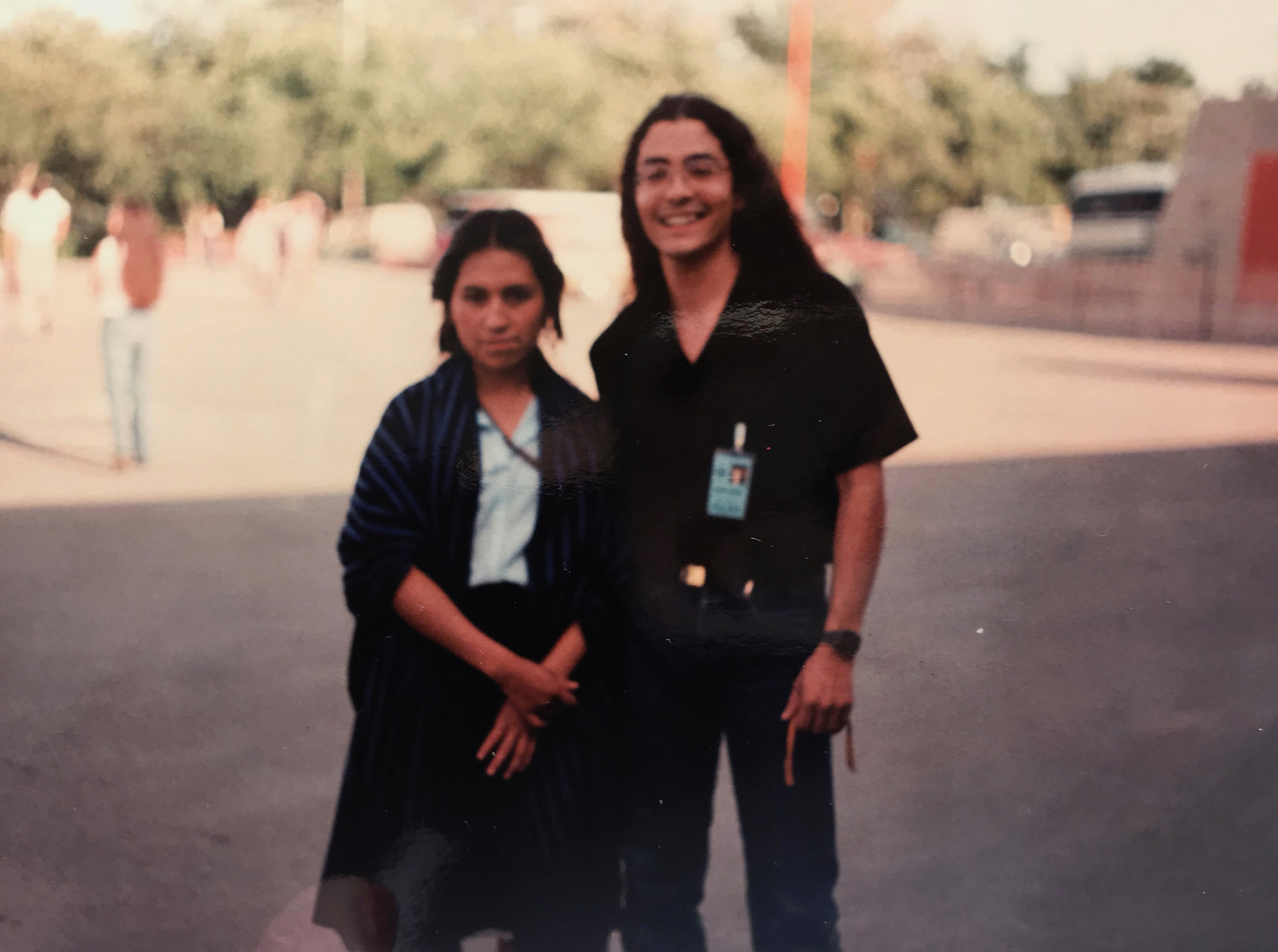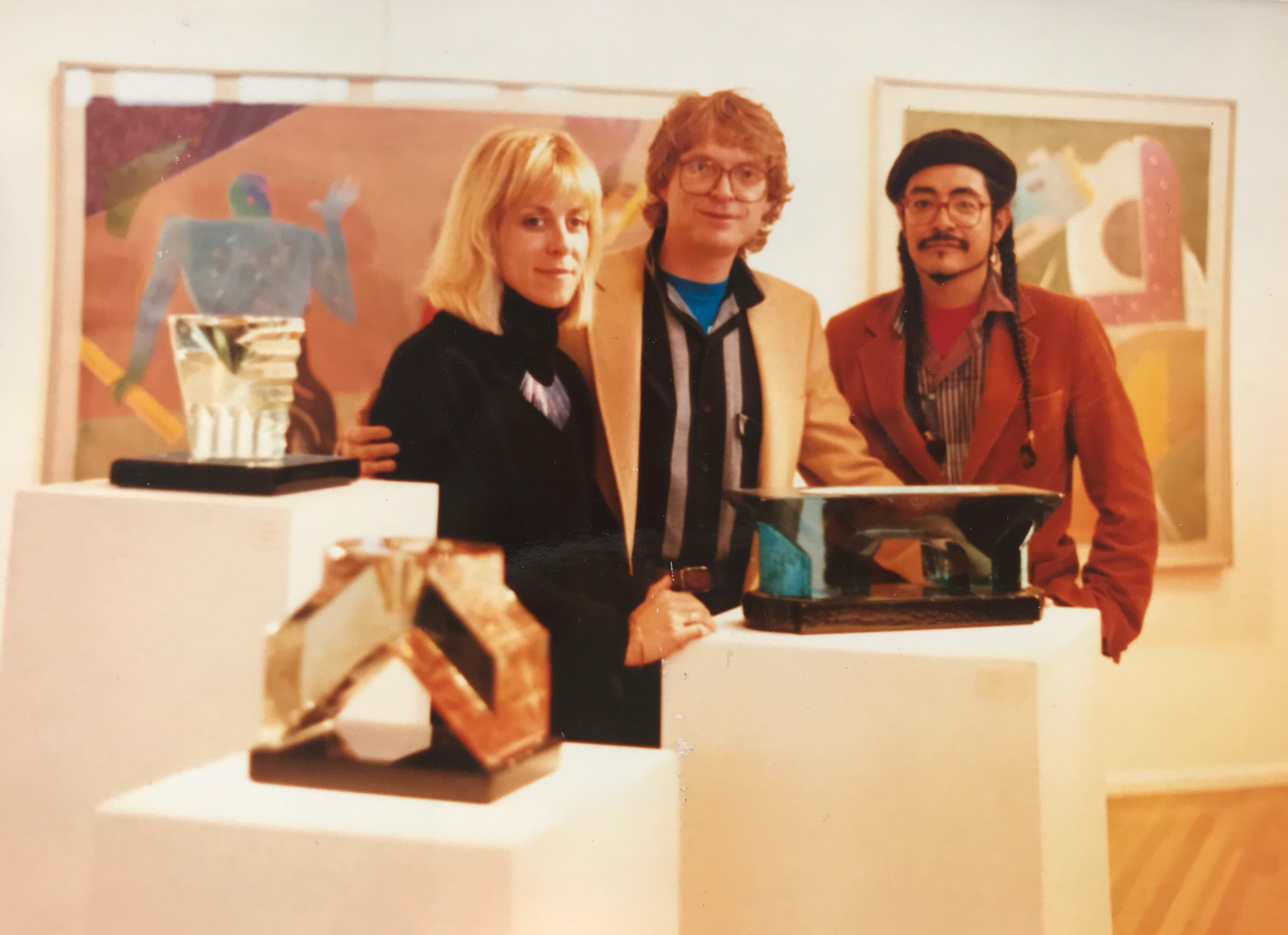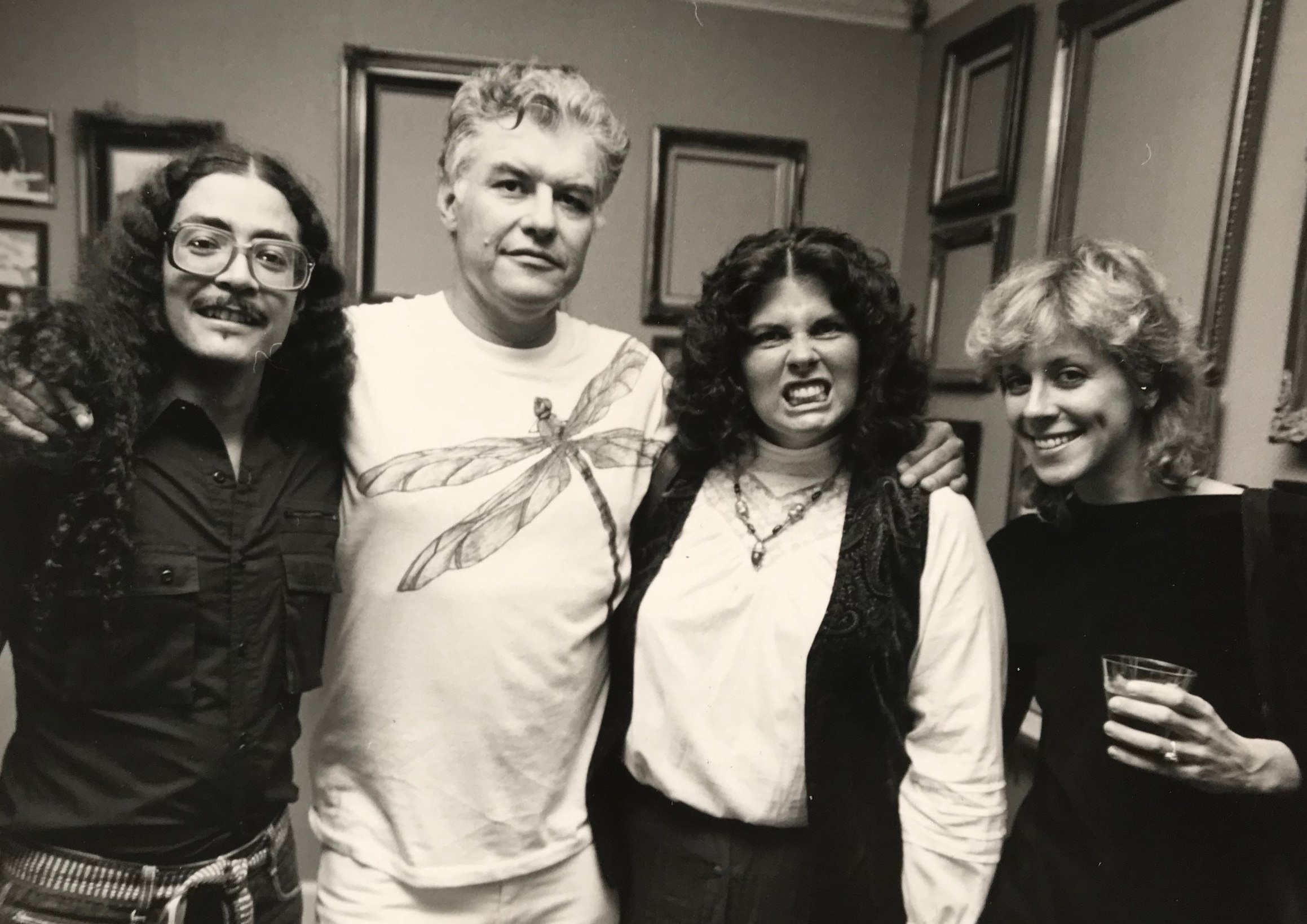

Biography
Biography
Biography
Biography
Joseph M. Sánchez is an American artist from Trinidad, Colorado, by way of the White Mountain Apache Reservation and Taos Pueblo. A leader in Indigenous and Chicano arts since the 1970s, Joseph has worked with hundreds of artists creating work, developing exhibitions, and advocating for the rights of minority artists, most importantly with the Professional Native Indian Artists (Native Group of Seven). A spiritual surrealist, Joseph's work is sensual and dreamlike, provocative and thought-inducing. Still producing work, and exhibiting across the United States and Canada, Joseph M Sánchez is simultaneously a community elder, and an instigator at the front lines of the battle for the creation of art and how we define it as a culture.
Biography
Born in Trinidad, Colorado to Pueblo, Spanish, and German parents, Joseph Marcus Sánchez was raised in Whiteriver, Arizona on the White Mountain Apache Reservation. In 1966, he graduated from Alchesay High School in Whiteriver, with the intent to join the priesthood. This was not the right fit, and he returned home to the White Mountains. Sadly, his mother became ill and died unexpectedly. Soon after, in 1968 he joined the United States Marine Corps and was stationed at the El Toro UCMC Base in California, where he trained soldiers drafted for the Vietnam War.
In 1970, Joseph travelled to Canada. Not long after, he met Ann Nadine Krajeck, a young photographer in North Dakota. They were married and settled in Richer, Manitoba, eventually purchasing a 20-acre farm in Giroux, Manitoba. In February 1975, Sanchez returned to the United States under President Gerald Ford's amnesty program. Ann stayed in Canada, and Joseph traveled back and forth until she joined him in Arizona in 1978.
In 1981, Joseph and Ann had a daughter, Rosa Nadine Xochimilco, and they lived in Scottsdale, Arizona, where Joseph maintained a studio on Cattletrack Road. During the 1980s, Sánchez developed a program as an artist in residence at Rosa's schools, teaching college level art history and technique to elementary school students. More than half of those students have gone on to become professional artists.
Sánchez travelled for his work, and in 1990 began traveling to Santa Fe, New Mexico where he met Margaret Burke. In 1996 he made his Santa Fe residence permanent, and they had a son, Jerome Bonafacio Xocotl. Joseph and Margaret were married in 2006.
Artistic Career
Though mainly self-taught, the skills and valuable critique of the many artists and art professionals Joseph M. Sánchez has worked with as a collaborator, assistant, exhibition designer, curator, and museum has provided him with an education the fine arts.
An artist from an early age, beginning in 1956 with the encouragement of his 5th grade teacher Ms. Gutierrez, his first mediums were painting on glass and embroidery. He continued to work; creating large portraits of friends and family, and in high school began to independently study art in the Renaissance, Surrealism, Dada, and Contemporary Art of the 1960s. His personal surrealist style began to formalize in 1968 during his years as a member of United States Marine Corps with a drawing on newsprint called the Unconsummated Rape of Mongo.
Sánchez lived in Canada from the early to mid-1970s, and was a founding member of the "Professional Native Indian Artists, Incorporated”, otherwise known as the Indian Group of Seven. In Winnipeg he met Daphne Odjig, who had opened up the Warehouse Gallery in the early 1970s (now the Wahsa Gallery). In 1971, Sánchez showed Odjig a second version of the "Unconsummated Rape of Mongo," which she purchased and used to create an offset print, starting the career that continues today.
It was with Odjig, Alex Janvier, Norval Morrisseau, Jackson Beardy, Eddy Cobiness, and Carl Ray, that Sánchez collectively created the PNAI, Inc. in November of 1973, which was officially incorporated in February of 1974. Although more than 50 artists had been invited to participate, it was only these seven that answered the call to come to Winnipeg. Solo and with the group, he has exhibited in Canada, Europe, and the United States. It was during this time, he was named by the Ojibwa.
In 1974, Sánchez was commissioned to create the painting "The Virgin of Light" to be given as the Juno Award for Multiculturalism in Music. The same year he was measured and photographed with the painting for the Toronto Wax Museum. Also that year, Sánchez was commissioned to create “Fertility Totem,” a nine-foot sculpture made of Manitoba cedar, which was installed in the Franco-Manitoban Center in St. Boniface, Manitoba, and created for the Winnipeg Centennial.
Sánchez returned to the United States in 1976 and, meeting new artists, formed three collectives near Phoenix, the Movimiento Artistic del Rio Salado (M.A.R.S.), Azoma, and Ariztlan, helping lead Chicano artists to collaborate and exhibit together. In addition he helped create the National Association of Artist Organizations (NAAO) to benefit American artists on a national level. With this activist attitude, Sánchez developed exhibitions, changed museums, and created artist in residence programs for schools, with a focus being on sharing these experiences with the Native American community, especially the youth.
Sánchez continued to paint, perform, and develop art workshops for youth during the 1980s and 1990s, while developing his career as a curator, while honing his craft. Joseph opened a studio on historic Cattletrack Road, where he had Fritz Scholder and Phillip C. Curtis as neighbors. He maintained this studio for 22 years, firmly ensconcing him in the Scottsdale arts scene as a creator as well as an art professional.
In 1990, Sánchez visited Paris, which sparked an abundance of work. Yet, despite occasional exhibitions, Sánchez's energy was mostly spent supporting the careers of fellow artists. It was during this time that he shared a second studio with Jim Covarrubias in an old church in downtown Phoenix.
In the 2000s, with his move to Santa Fe, New Mexico, Sánchez's work shifted in tone and color, adapting to the new landscape. With a new studio, Sánchez returned to large-scale works like those of the early 1990s, some measuring as much as 15 ft tall. Also returning to drawing more frequently, the quality of work produced in the Santa Fe studio shows his long time dedication to craft and technique.
During his career, Joseph has worked with many incredible artists, giving him the opportunity to experience their creativity, work, and learn from them. Some of these artists are: Daphne Odjig, Norval Morrisseau, Eddy Cobiness, Alex Janvier, Guenther Uecker, Rotraut (widow of Yves Klein), George Segal, Norman Bluhm, Manuel Neri, Jesus Bautista Morales, Luis Jimenez, Philip C. Curtis, Jean Paul Ledeur (contemporary restorer for the Centre Georges Pompidou & Yves Klein Archives), William Wiley, Fletcher Benton, Roberto Matta Echaurren, Jean Tinguely, Bob Haozous, Roxanne Swentzell and David Tooker.
In 2006, his work and career was recognized by Bill Richardson, Governor of New Mexico, at the New Mexico Governor’s Awards for the Arts where Sánchez received the Allan Houser Memorial Award for “Artistic Excellence and Community Involvement,” and for being an “Activist for Native American and Aboriginal Arts.”
Professional Career
In 1978 Joseph M. Sanchez began work at the worked at the Scottsdale Center for the Arts as a security guard, becoming a gallery assistant until 1982. Soon Sánchez was recruited by the Phoenix Art Museum as a preparator, where he remained from 1982-1984.
In 1983 Sánchez began his own business, ARTS, catering to museums, galleries, institutions, collectors, and artists in the Phoenix, Area in all manner of art preparation, crating, transportation, and curation, which he maintained until 1988. It was through this that he met one of his mentors, Phillip C. Curtis for whom Sánchez served as an artist assistant from 1979-1999. It was also during this time that he also returned to the Scottsdale Center for the Arts as a contract exhibition designer and curator. His curatorial success during this time was "First Contact...the search," a provocative and successful exhibition about UFOs and the paranormal. “First Contact…” was Sánchez’s first major exhibition as a curator, and more than 10,000 people attended the show. The exhibition showcased the Mitchell-Hedges Crystal Skull, NASA Astronauts, Travis Walton, and Native American mythology concerning UFOs.
In 1989, Sánchez began working for the Riva Yares Gallery in Scottsdale, Arizona full time, though he had been their registrar beginning in 1977. He worked in Scottsdale, and facilitated the opening of the Riva Yares Gallery in Santa Fe, New Mexico, now known as the Yares Project, until 1996.
In 1996 he became Director for the Laynor Foundation Museum.
In 2001 Sánchez began volunteering for the Institute of American Indian Arts in Santa Fe, and he soon became their Exhibition Coordinator. Later, Sánchez was named the Chief Curator at the IAIA Museum, now known as the Museum of Contemporary Native Art, and was acting Director until his retirement in 2010. It was during his tenure at the IAIA that Sánchez developed several exhibitions relating to the communication of Native Artists across the continent, including “Relations: Indigenous Dialogue.” He also curated the Bob Haozous retrospective, “Indigenous Dialogue,” and “Fritz Scholder: An Intimate Look.”
In 2008, Sánchez was named the United States curator for the SITE Santa Fe Biennial, "Lucky Number 7," including an essay in the published catalogue.
In 2011, Sánchez was curator for "Native American Art at Dartmouth from the Collection of the Hood Museum," at Dartmouth University, including an essay in their book on Native American art coinciding with the show.
Joseph M. Sánchez’s essays lectures, performances, workshops, artworks, and curated exhibitions, continue to make an impact, and have been referenced in numerous publications.
Since retirement, Sánchez has continued to curate, lecture, and educate, but primarily works in the studio full time, and continues to exhibit in galleries and museums internationally.

